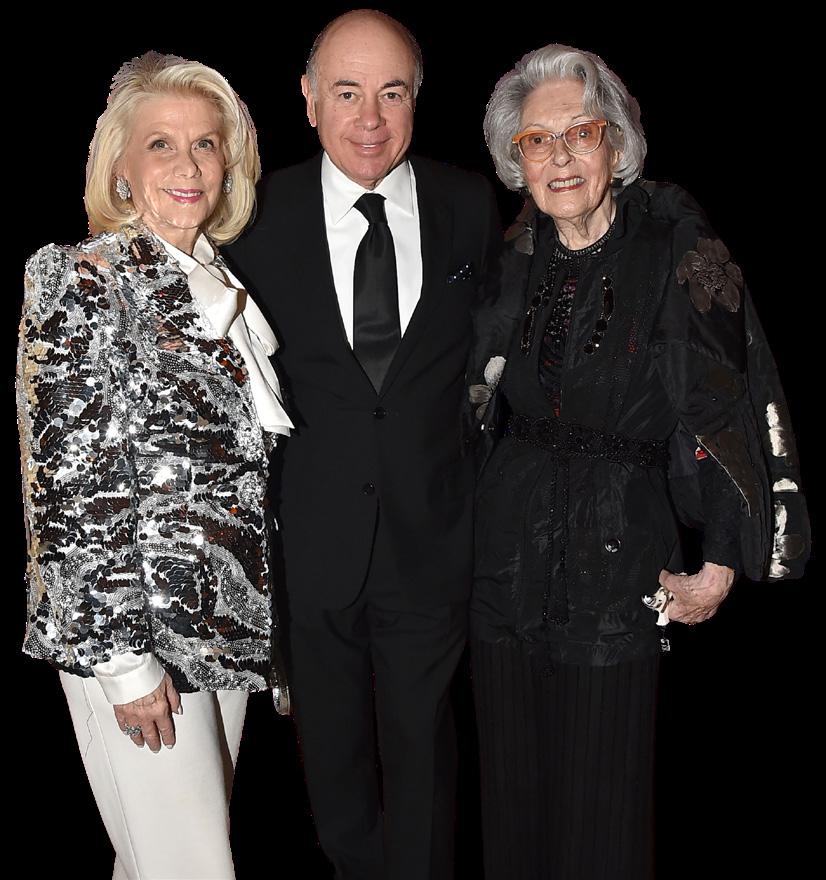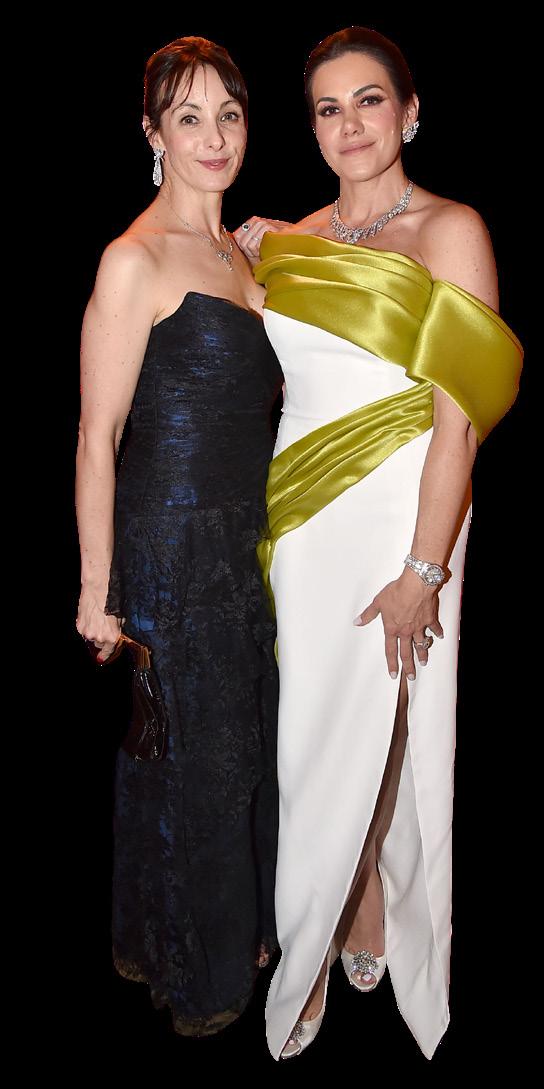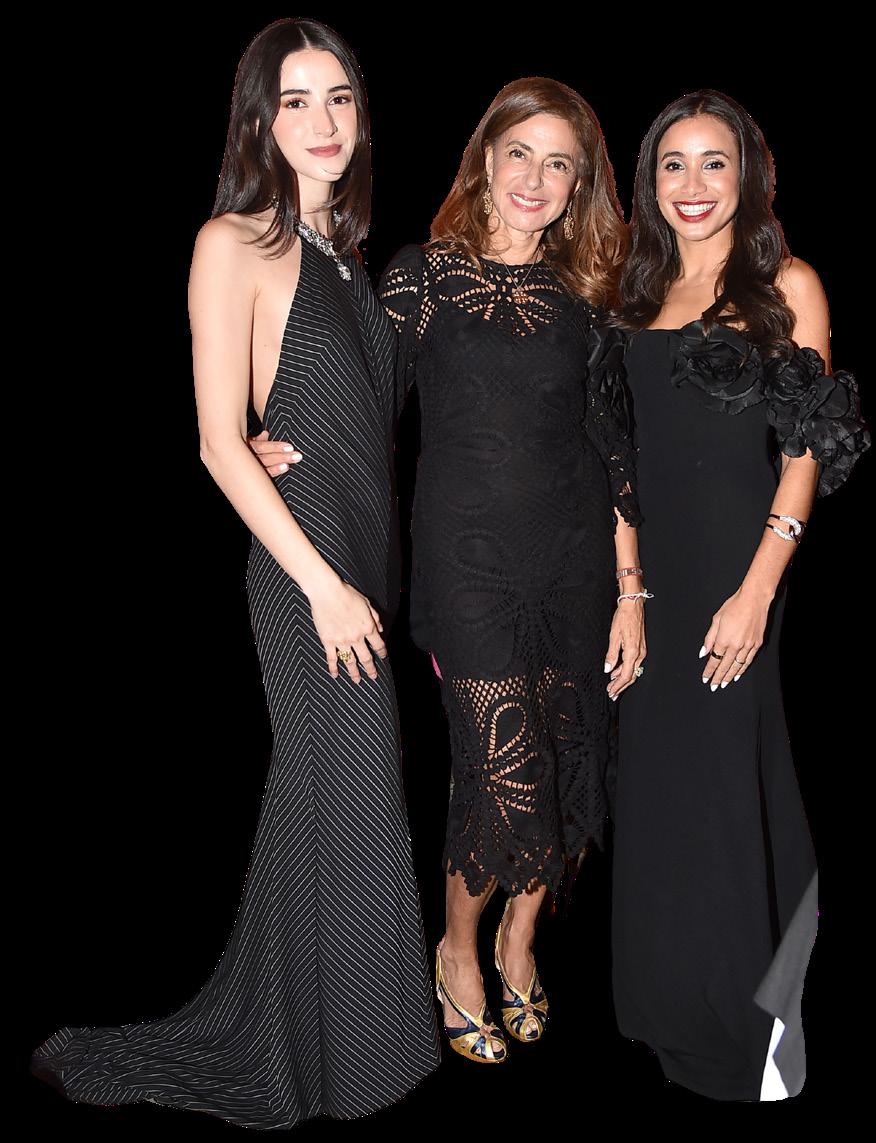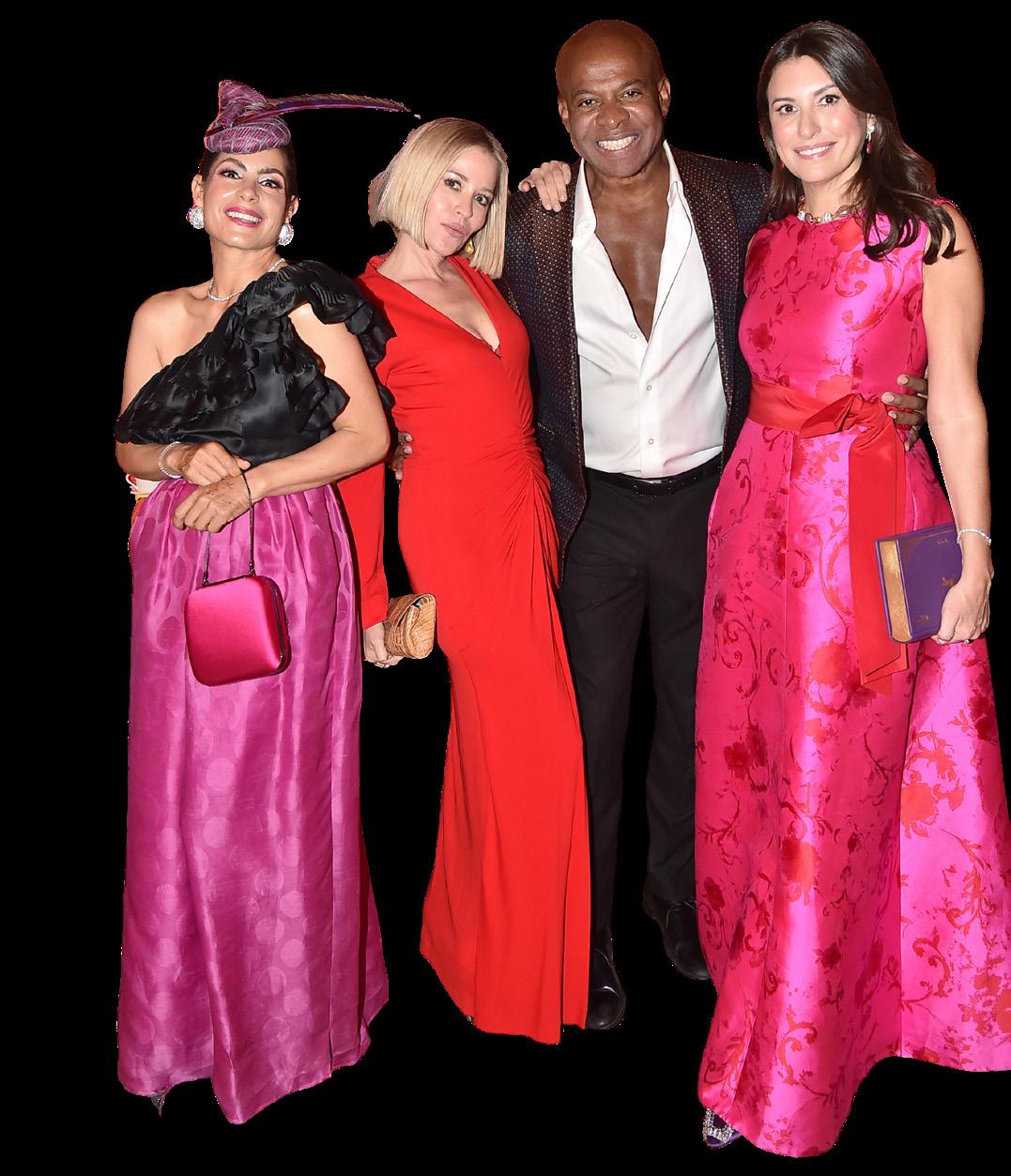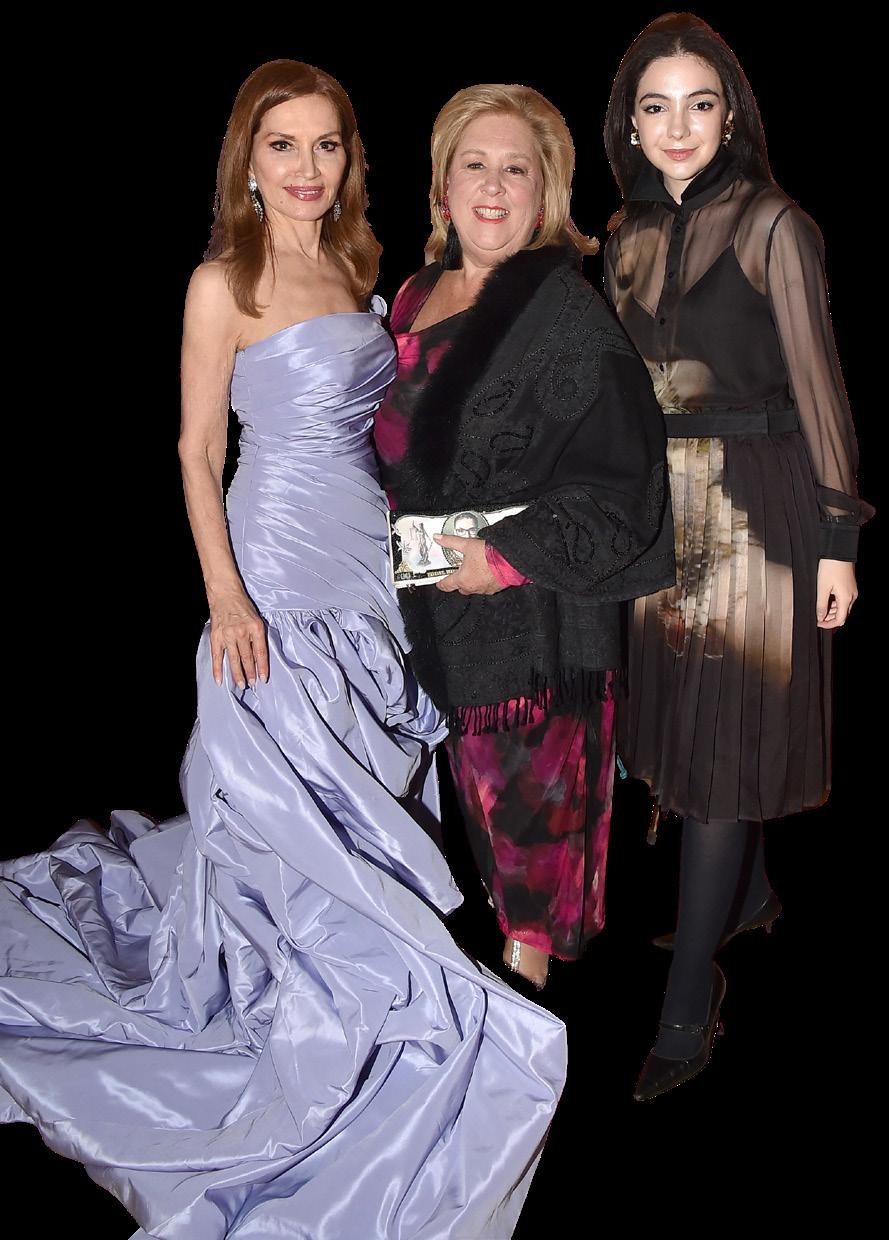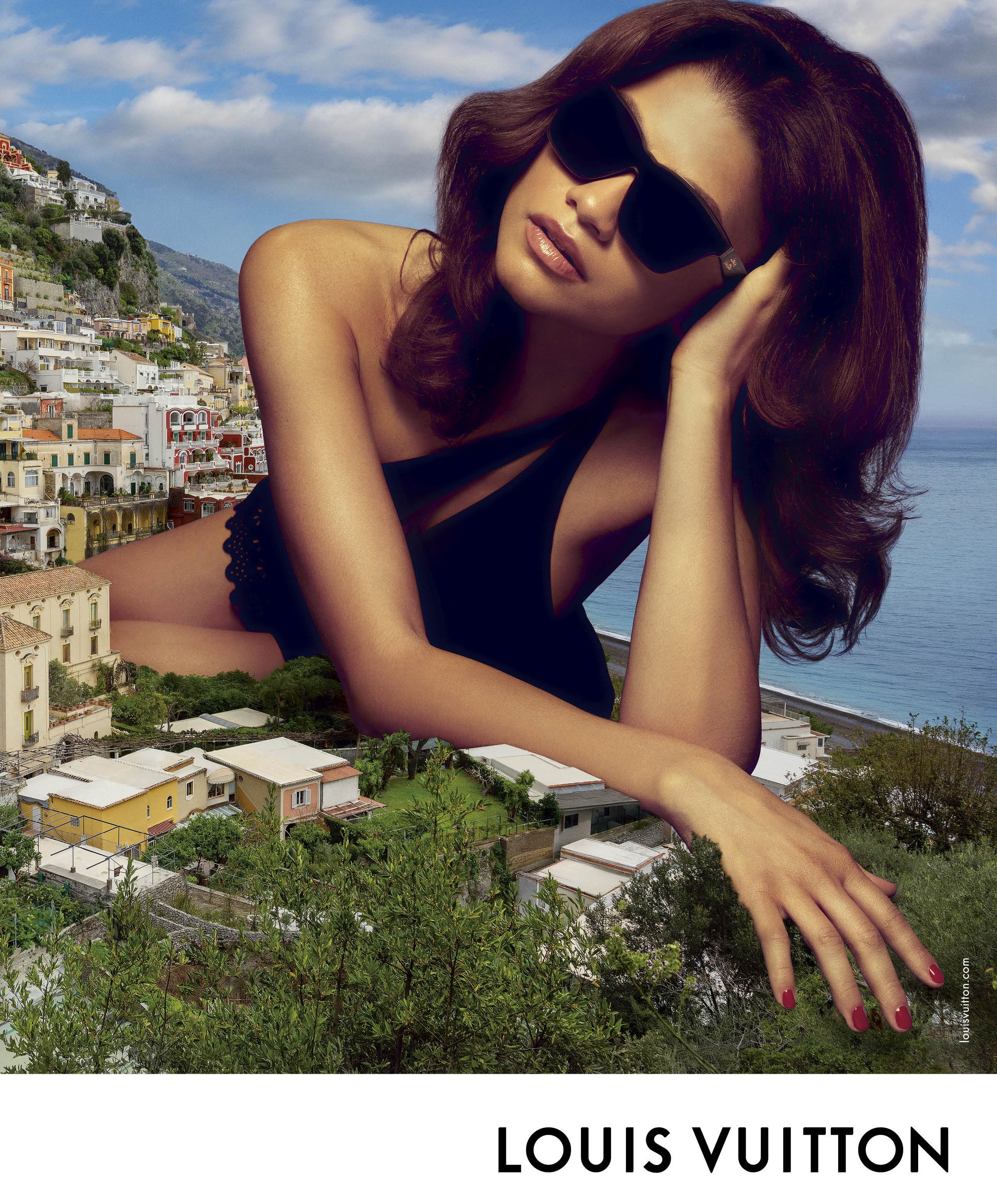
THE FIRST LADY OF PHILANTHROPY: A WOMAN WITH GREAT PURPOSE AND STYLE
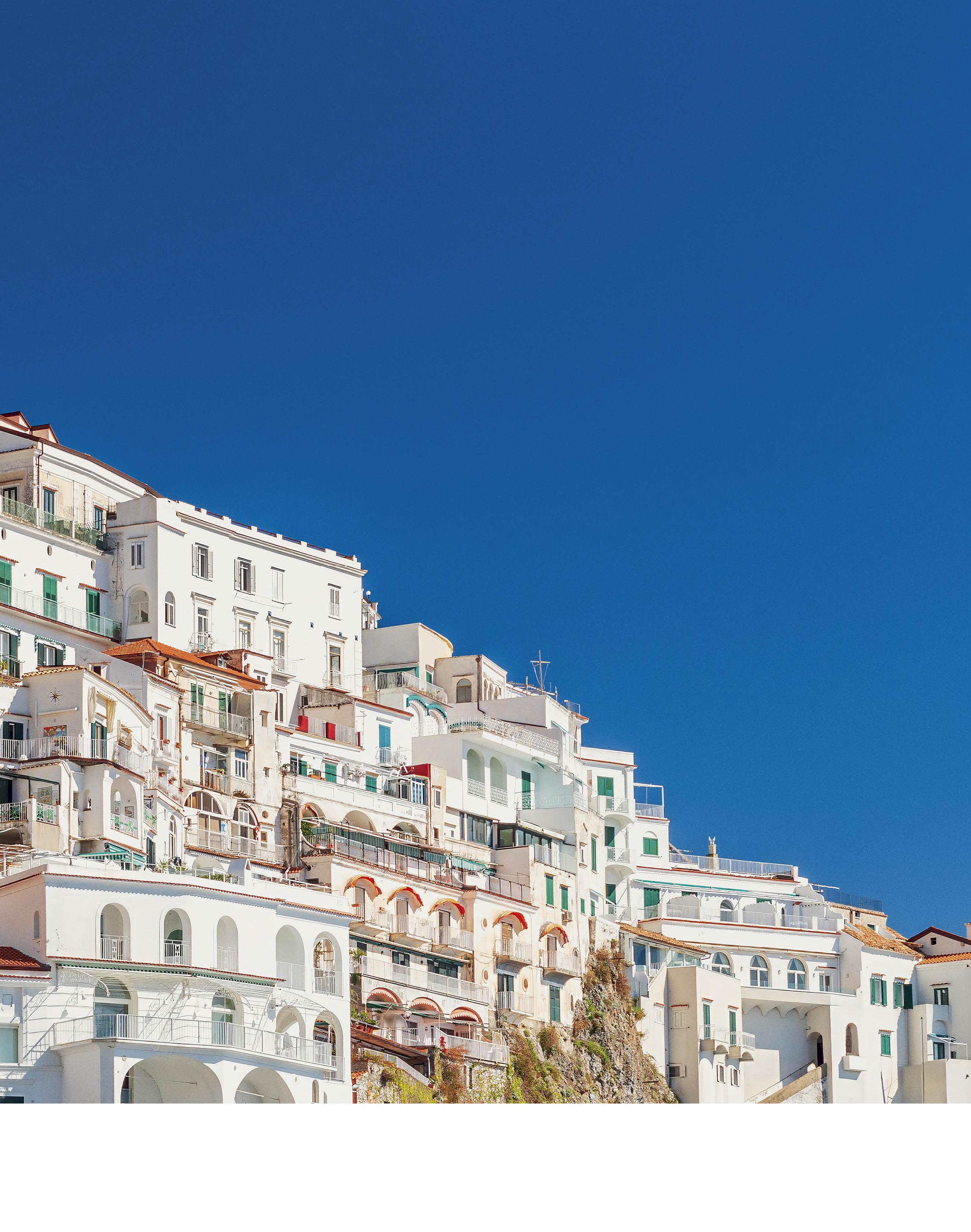






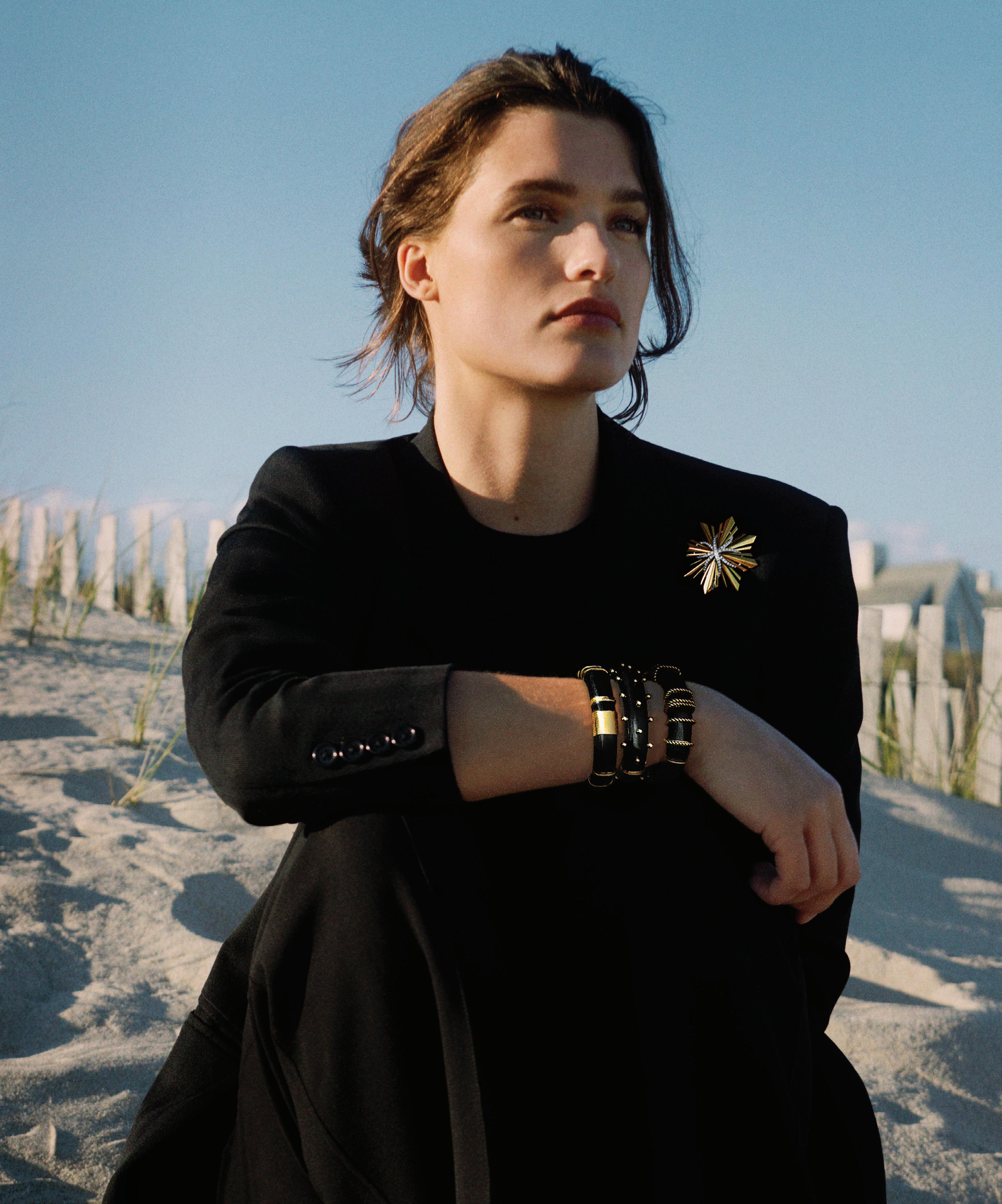
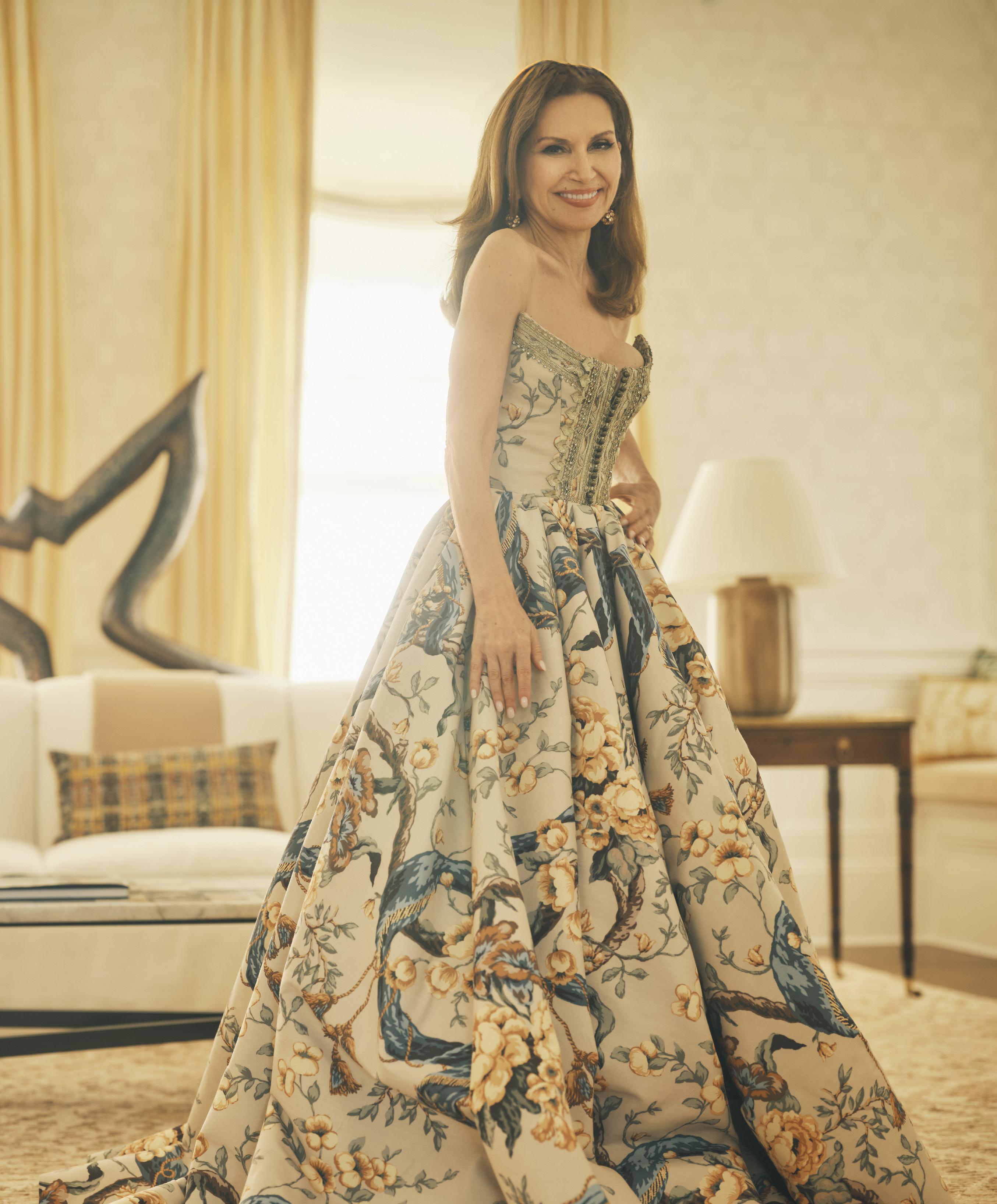
JEAN SHAFIROFF

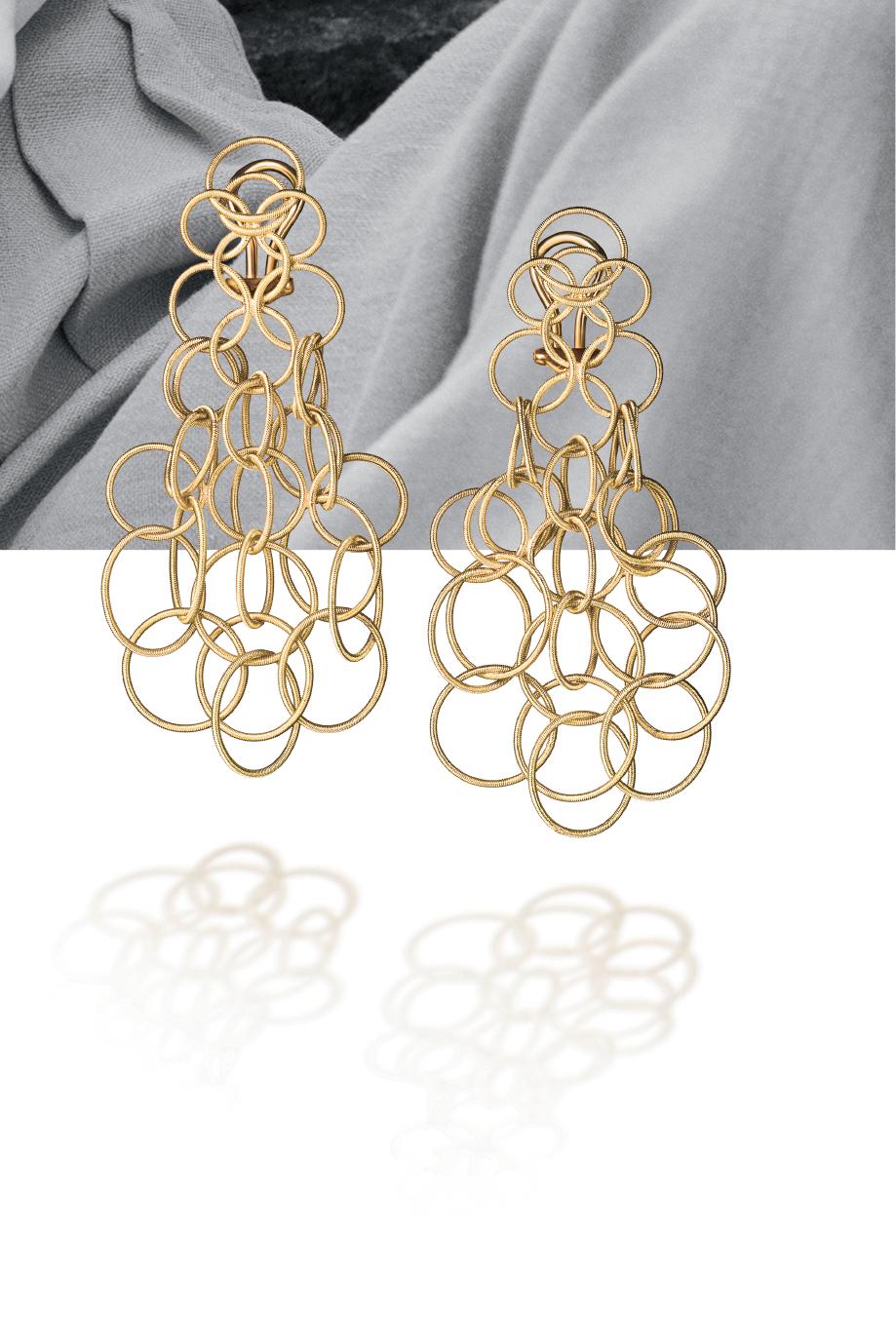



THE FIRST LADY OF PHILANTHROPY: A WOMAN WITH GREAT PURPOSE AND STYLE












As I write this on the plane back from a short recharge in Palm Beach following an invite from The Brazilian Court Hotel – more on that in the next issue – I am already looking forward to experiencing the last feel of Fall in New York as the anticipation for the holiday season becomes palpable. Warm and sunny days can wait for a while as nothing is more enchanting than falling, colorful leaves and the smell of spices in the air. Wherever you might be as the temperature takes a turn, our latest dining and travel finds should find their way onto your social calendar. We also invite you to learn more about our favorite philanthropists, artists, and fashion labels who are shaking up the social scene – let’s just say there’s a new guard in town.
She might have quietly made her way to the top of the art collecting world, but Christine Mack’s presence is finally louder than ever. After collecting art for over two decades, based mostly on her own taste and instincts, Mack established the Mack Art Foundation, offering New York City residency to emerging artists around the world, along with a guiding hand as they navigate perhaps the most creative city in the world. She even feels a bit like an imposter having her own collection on exhibit at the Southampton Arts Center, but in
reality, those in the art world know it’s been a long time coming.
Another of our favorite philanthropists is no stranger to the Palm Beach or New York scene – or the pages of PARK. Jean Shafiroff is the one stop shopping socialite – she not only hosts events in her home all year long, she also underwrites them. Serving on various charitable boards and chairing numerous galas is a full–time job – but she always looks glamorous doing it. Shafiroff, who has added social media influencer to her repertoire, also refreshingly uses her platform to shine a spotlight on emerging talent and designers.
Born in New Mexico and raised in New York, artist Ross Pino uses his surroundings as his muse. He uses his brushstrokes to paint a picture of the human experience, and all of its juxtapositions.
Enjoy the season and all of the family time it brings – and if you’re looking for a fast getaway from the city, I highly suggest you head to Philly and stay at the stunningly transformed Four Seasons.

Julie Sagoskin Editor–in–Chief


There’s something truly magical about the fall season and as we embrace autumn’s cooler temperatures and breathtaking foliage, it feels as though nature is inviting us to slow down and reflect. And what better time to reconnect, and be inspired right here within the pages of Park Magazine?
This autumn issue, we feature New York–born author, historian, and mother of two, Rachel J. Lithgow, who is no stranger to reinvention. She powerfully demonstrates this in her raw and hilarious memoir, My Year of Really Bad Dates Her latest work explores the unpredictable world of post-divorce dating with sharp wit and heartfelt vulnerability, chronicling a transformative journey that begins with her humble origins, includes marriage into a Hollywood family, and ends with her divorce from a well-known actor. This deeply personal narrative ultimately catapults her into a new chapter of life one defined by resilience and self-discovery. Be sure to read about the inspiration behind her latest body of work.
Also in this issue, we take a closer look at the evolving landscape of cosmetic surgery. In recent years, there’s been a noticeable shift: more men are now seeking aesthetic procedures to enhance their appearance, boost self-confidence, and stay competitive both socially and professionally. What was once a predominantly femaledriven industry is now seeing a steady rise in male patients who are taking a proactive approach to aging. To explore this growing trend, we spoke with Dr. Robert Schwarcz, one of the nation’s leading oculofacial and plastic reconstructive surgeons, for his insights into why more men are turning to cosmetic surgery and what they hope to achieve.
I hope you are able to carve out some time to enjoy the beauty of this fall season. With cherished holidays like Halloween and Thanksgiving upon us and the year-end holdiay rush just around the corner, autumn offers the perfect pause to take it all in. I look forward to continuing our connection in the Holiday issue of Park!

Christine Montanti Senior Editor





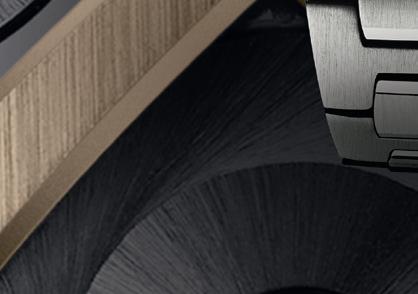





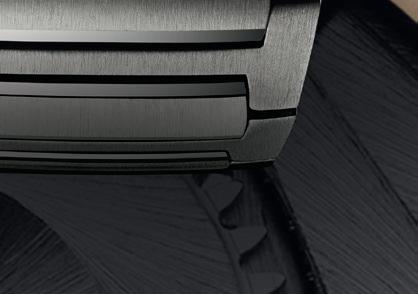


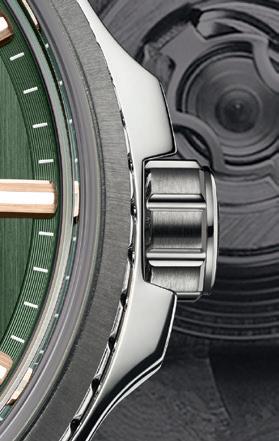
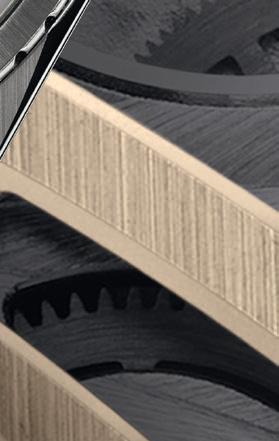
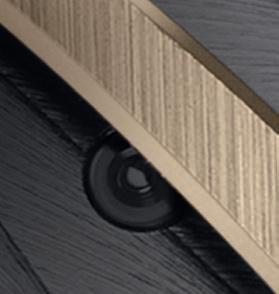

EDITOR-IN-CHIEF & CO-FOUNDER
Julie Sagoskin
George Wayne SENIOR EDITOR Christine Montanti
SPECIAL CORRESPONDENT
Michael Gross
ARTS EDITOR
Janis Gardner Cecil
Lisa Stiehl National Sales Manager 914.760.6875 lisa@parkmagazineny.com
PUBLISHER & FOUNDER
Christopher A. Pape
EDITORIAL DIRECTOR & CO-FOUNDER R. Couri Hay
ART DIRECTOR
Phuong Truong
FEATURES EDITOR
Bennett Marcus
LIFESTYLE EDITOR
Lynn Kane
Patrick McMullan
COPY EDITOR
Julie Eakin julieeakin@yahoo.com
TRAVEL EDITOR Joe Alexander
ASSOCIATE EDITORS
Lauren Bens, & Lexi Wolf
ASSISTANT EDITORS
W.A. Muller & Ryann Reynolds
INTERIORS EDITOR Cara Gibbs
ASSISTANT ART DIRECTOR Oliver Li
CONTRIBUTING WRITERS
Jeremy Murphy, Lydia Graves, Christine A, Geed, Grace Katich, Rene Freid, Lisa Loverro
CONTRIBUTING PHOTOGRAPHER
Udo Spreitzenbarth, Shiro Seike, Stewart Shining, Mark Elzey, Oren Siddo SALES TEAM
Maria Coyne Director of Florida & Caribbean Sales 305.975.9234 mecoyne@mecoyneinc.com
Scott Pauker Advertising Sales Manager 917.859.1343 scott@parkmagazineny.com
Siobhan Shea Rossi National Sales Manager 914.374.0710 siobhan@parkmagazineny.com
MCaseMedia, Inc. Publisher’s Representative 914.953.3202 info@mcasemedia.com

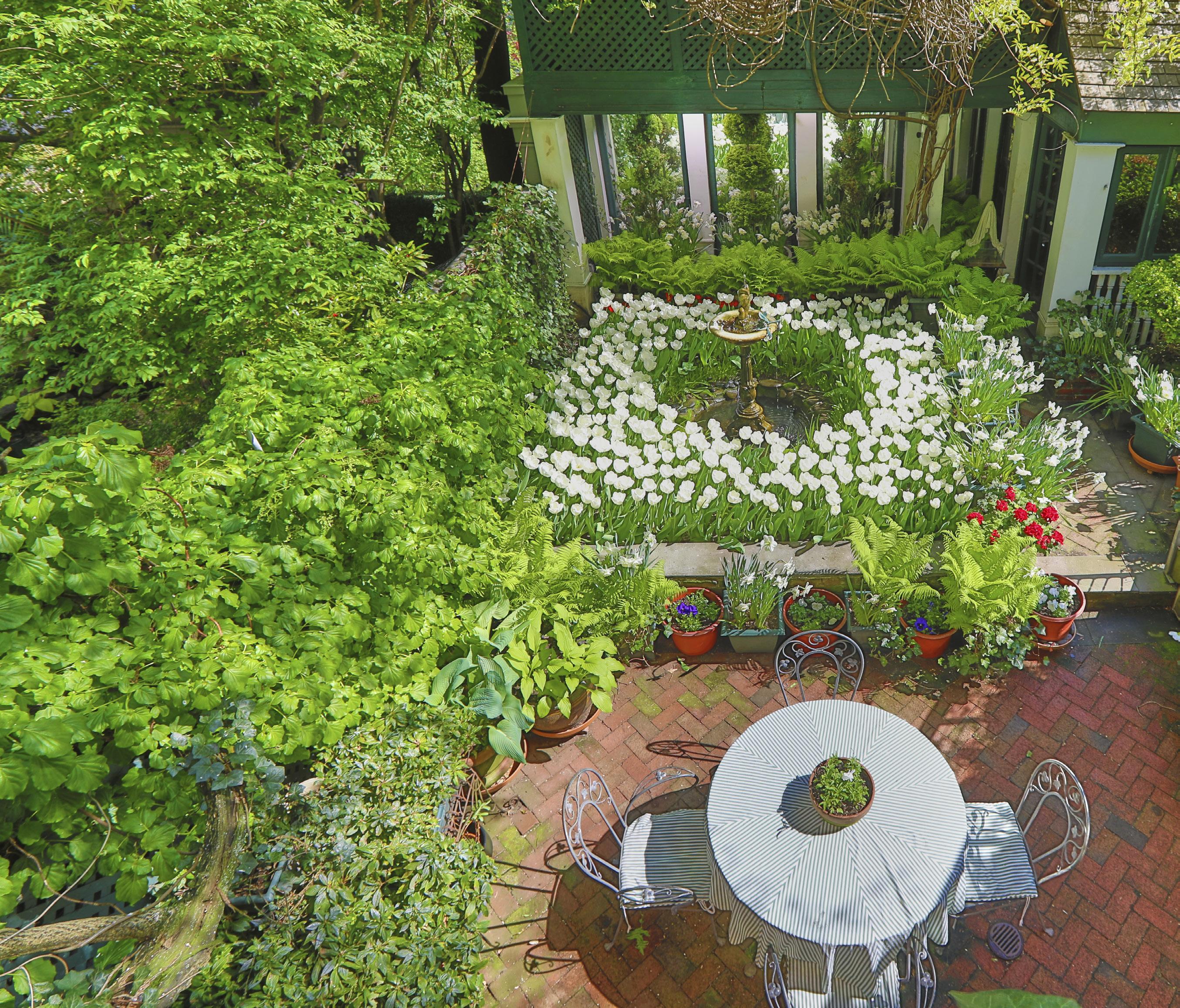
BY R. COURI HAY

CZ Guest, Truman Capote’s iconic swan and a master gardener, once told me that “a garden can be your best friend.” Of course, she was right! I’m a city dweller, but I keep a secret garden, greenhouse, and a terrace behind my townhouse on the Upper West Side. My house went viral on TikTok, racking up over 3 million views for its 100-year-old wisteria that wraps around the house from top to bottom. It’s known as the “bearded house” on the internet, although I refer to it as “God’s ribbon” – one of my favorite “pets” after my King Charles Cavaliers, Phantom and Jackie.
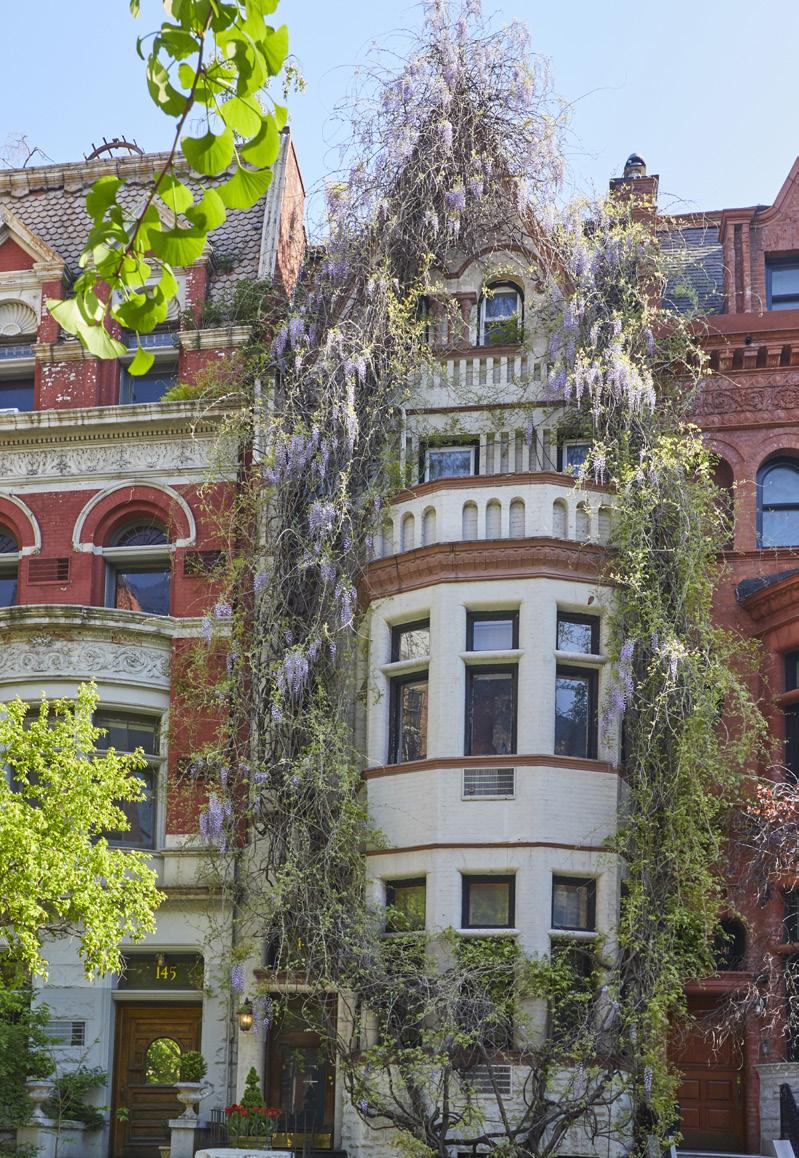
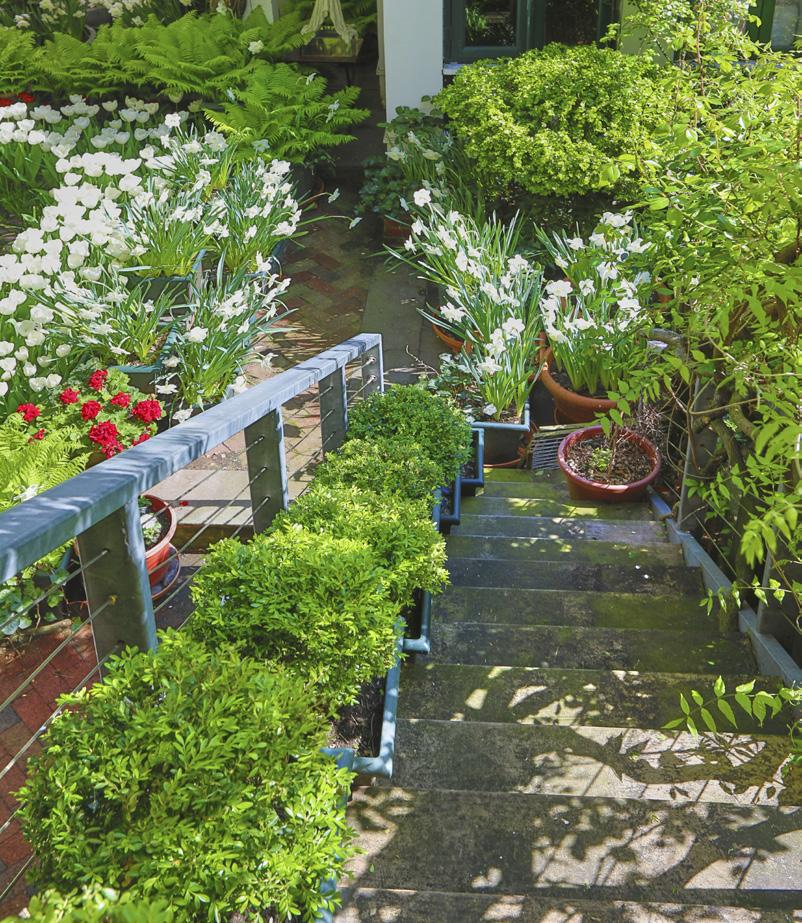

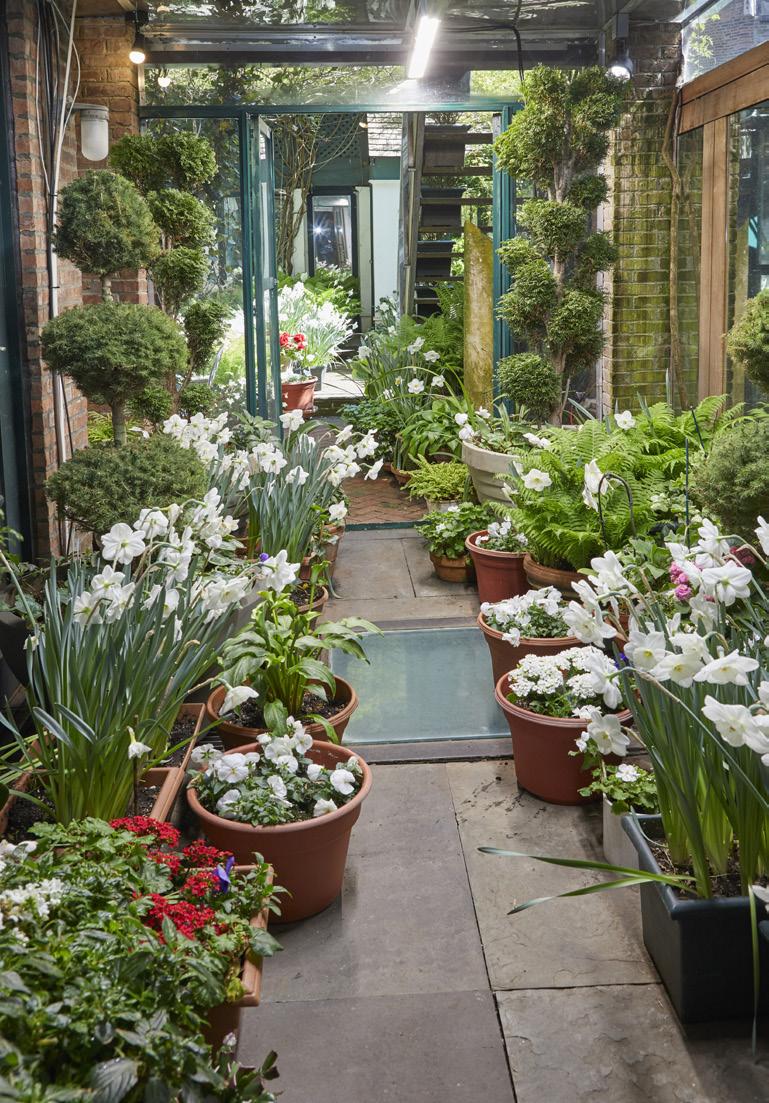
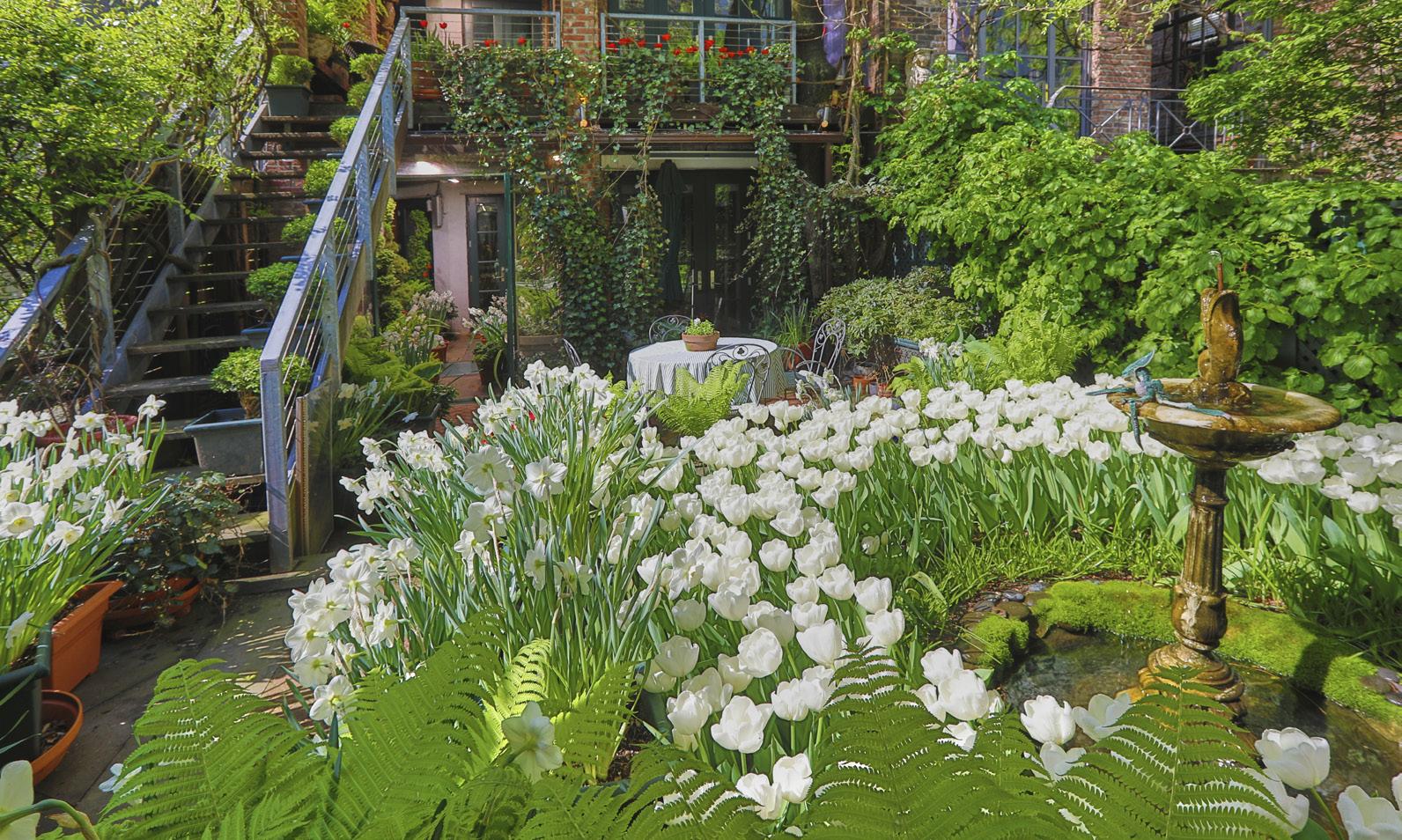

People are constantly taking photos of the house, so I try to keep it looking picturesque. This year I added planters with boxwood, ivy, and white geraniums to hide the garbage bins. Gardening is a constant and fun project. My yoga trainer, Lily, takes cuttings from my 12-foot-long dripping ivy for her city balcony and often asks me for advice. She is interested in gardening, but new to it. I’m an avid gardener, but certainly no expert. Since the fall season is crucial for planting a garden that will bloom in the spring, as summer wanes and cooler weather settles in, I sought advice from Colin Kirk, the New York Botanical Garden’s Marjorie G. Rosen Manager of Outdoor Gardens.
Colin, who was previously a lead gardener at Queens Botanical Garden in Flushing, currently creates the curriculum for the Woody Identification Class at Brooklyn
Botanic Garden and also teaches at the New York Botanical Garden in the Bronx. So he knows his stuff. “At NYBG we have close to a million daffodils on our Daffodil Hill,” he said. “Those have existed in some iteration since the early 20th century. So we have literally millions of bulbs existing in the landscape all over the garden. We’re slowly replenishing about 20,000 every year.”
We chatted with Colin in late August, and here are his answers to some of our pressing questions.
Park: Why plant in fall for spring?
Colin: Planting in the fall for spring mainly means bulbs and perennials. The best time to plant new perennials, which are plants that will last year over year in the garden, is in the fall as it gives them time to establish for a couple of months over winter and then just
start new in the spring. Since they’re already established a little, you don’t have to water them and baby them as much through the summer. So typically, for perennials we start planting here at NYBG by mid-September. Daffodils are really nice because usually you can plant them once and they’ll start to spread throughout the garden. But tulips you have to plant year over year.
Bulbs: order in August, aim for Thanksgiving, settle by Xmas Folks should be buying their tulips in August. You can buy later in the fall, but your options are going to be a lot more limited because many will be sold out. As far as when to plant those with bulbs in particular, you can plant later on. It’s safe to wait until your summer flowers have died. Cold is fine; if the ground is frozen or snow-covered, you can just drop them in. Usually your window is about mid-September,
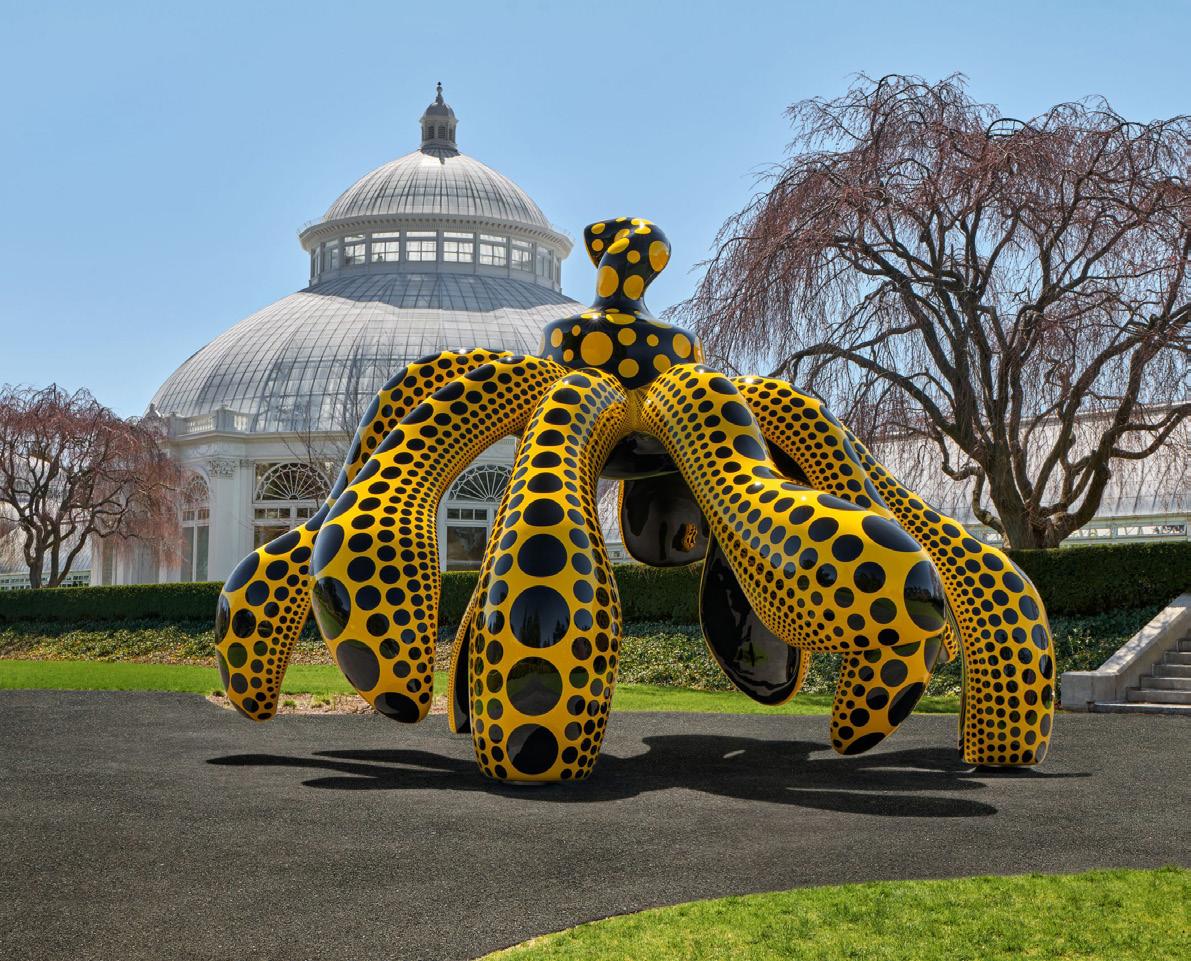

when temperatures have consistently cooled down until the first frost. You can plant after the first frost, but typically we are done with all of our perennial plantings by November 1st. With our bulb plantings, I always aim to be done for Thanksgiving, but usually Christmas is when we’re really done. It’s aiming for Thanksgiving, settling by Christmas.
Bulbs can wait to be planted; keep cool & dry, but not in fridge
With bulbs, all of the energy in the bloom is already stored in that bulb. So it doesn’t matter whether you plant a bulb in September, if you plant a bulb in November, it’s still going to produce the same bloom just because all of that energy that exists for that plant is stored in that bulb. The risk you run by ordering bulbs and then keeping them laying around is that they can rot. So you have to keep them dry. It’s best to keep them in a cool dry location. . Do not put them in the refrigerator because bulbs grow based on the amount of cold hours that they’re exposed to. So if you buy a hundred bulbs and put them in your fridge, they’re going to start thinking they’re in the ground and it’s winter and they might actually start pushing. So as long as you’re keeping bulbs in a cool dry
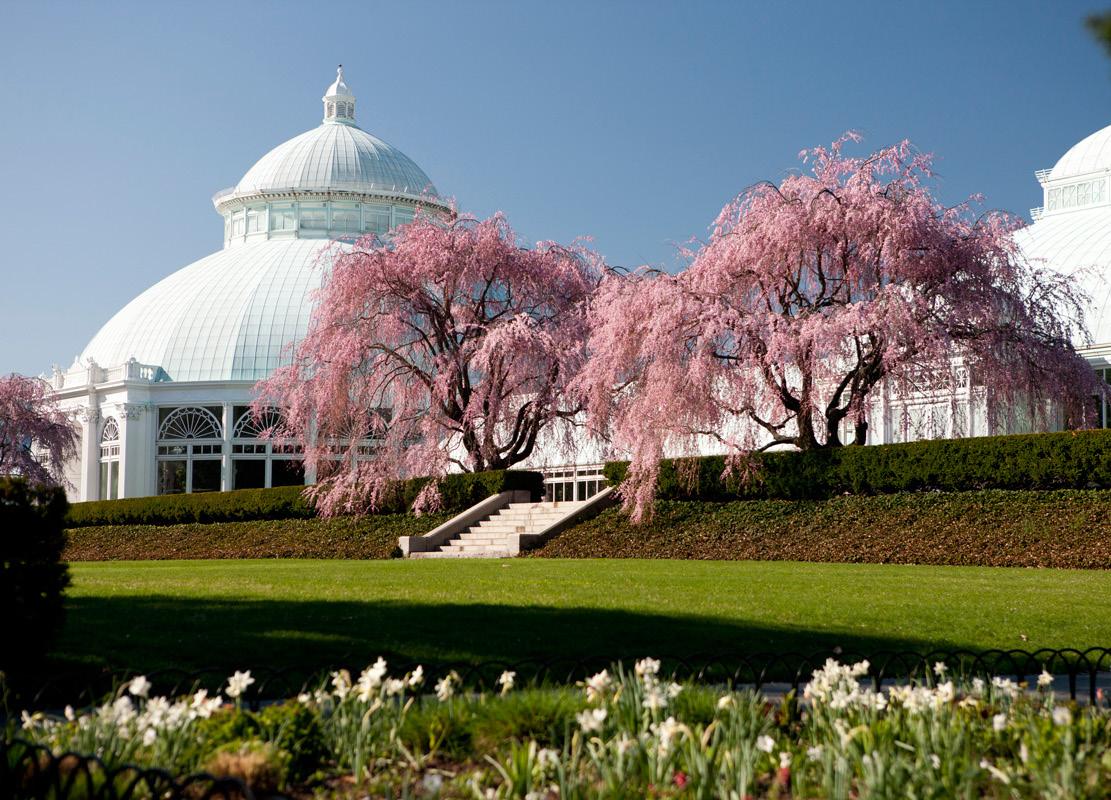
area, it’ll be fine for whenever you plant them.
Gardening for balconies or window boxes –avoid moisture
Bulbs do not mind being cold; the problem is you want to control the moisture. If you are putting bulbs in a planter or window box or even just a container, you can keep it outside all winter. I encourage folks to put a little wooden board like plywood over top of their container. You do want to make sure they’re getting watered occasionally, especially if it warms up in the middle of the winter. But you don’t want to leave those containers open to the elements because if we have a really wet and mild winter, they’re just getting rained on all the time and they could potentially rot out.
Tulips will fade out over time. So a good rule of thumb with tulips is you want to do a mass planting your first year for, let’s say, a backyard of a townhouse, you want to buy more than you think you can hold. So I would recommend 500 to 1,000 tulips. Then in following years replenish, adding 25-30% of what reemerges, and that will keep your tulip garden looking good. Narcissus - daffodils - naturalize. Once they’re done blooming, keep the vegetation around for six weeks to capture the sunlight, they should just start expanding. I call it walking. They walk across your garden, whether by seed, by an errant squirrel digging up a daffodil bulb and then replanting it somewhere else, or just by repropagating. Crocuses also come back to life, but squirrels eat them so you have to plant new ones every year.
Brent & Becky’s and Van Engelen are both great, and have a wide variety of bulbs. Colorblends is classic and has a lot of stock, so commercial landscaping firms buy from them, but the bulbs are a little more basic.
For tulips, early to mid-April. We always joke here that the tulips are gone by Mother’s Day weekend, just in time for everyone to come. We also have late flowering bulbs, so there’s still some daffodils in bloom, which are beautiful blue bulbs that show up in late May, early June. So that whole window of spring, there will be something here. There will be beautiful minor bulbs or your classic tulips or your classic daffodils. Our rock garden is a showstopper. I would say from March 1st through the 4th of July it’s in complete bloom. Every week is a different color. It’s absolutely gorgeous.
If you’re interested in working or volunteering at NYBG, there are opportunities available even for those with no gardening background. They also offer a robust slate of classes, and, if you are considering a horticulture career, a two-year professional intensive certification program. Students work in real time with our gardeners throughout a growing season and then take classes at night and go on field trips to other gardens throughout the Northeast. In year two they intern at other gardens. P
nybg.org

BY JEREMY MURPHY

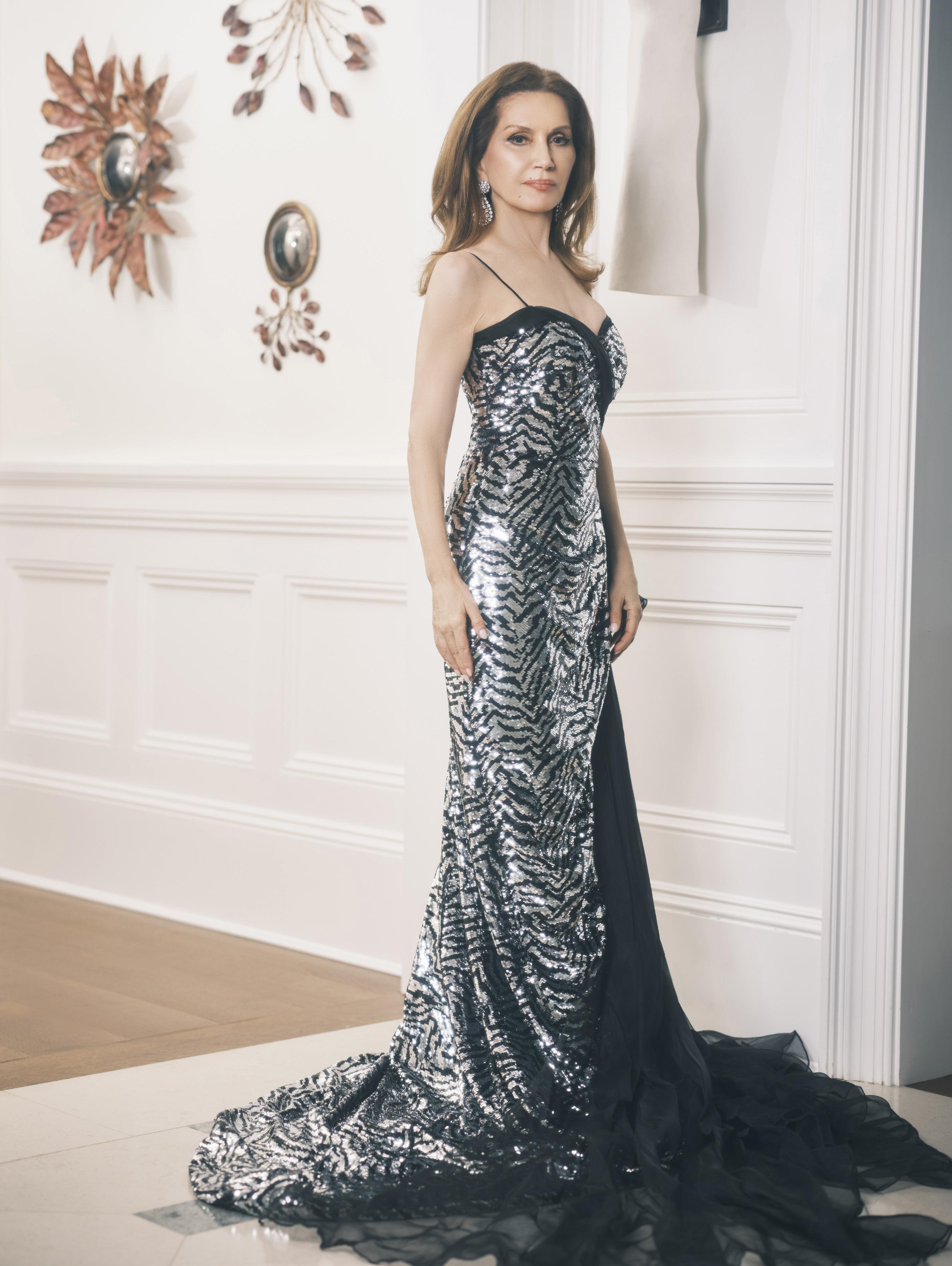
JJean Shafiroff moves through a room the way a great aria fills an opera house –gracefully, with intention, and then with great style. This hardworking philanthropist, author, and TV host serves on multiple charity boards and has done so for years. Author of the book, “Successful Philanthropy: How to Make a Life By What You Give”, Jean Shafiroff is often called the “First Lady of Philanthropy” by both the international and local press because of all that she does in the charitable world. Each year she chairs between 8 to 10 different charity galas.
She also hosts and underwrites many large cocktail parties in her homes for both local and international charities. Considered an international philanthropic leader for her acumen, generosity, and ability to motivate others, she also possesses a great sense of style. Jean Shafiroff has the ability to fuse fashion and philanthropy making both subjects most appealing to those she encounters and to those who follow her.
Chairing, underwriting, buying tables, hosting in her homes, ensuring a nonprofit’s message is delivered – this is the cadence of Jean Shafiroff’s days. This year was no different, only more so: she appeared on multiple magazine covers, fresh editorial features both in the United States and then globally and received a steady drumbeat of invitations that reflect the breadth of her civic footprint.
If summer in the Hamptons is her marathon, autumn in New York is her sprint. “My philanthropic work is a full–time job, and I love it! I am most fortunate to be able to do it.” In mid–October, she was honored by the Samuel Waxman Cancer Research Foundation and received the Philanthropist of the Year Award. This is just one of the many dozens of charities that have honored her over the years. Her leadership and full–time volunteer workload allow her to live up to her title as “First Lady of Philanthropy” on all accounts, and, in 2022, the New York State Assembly
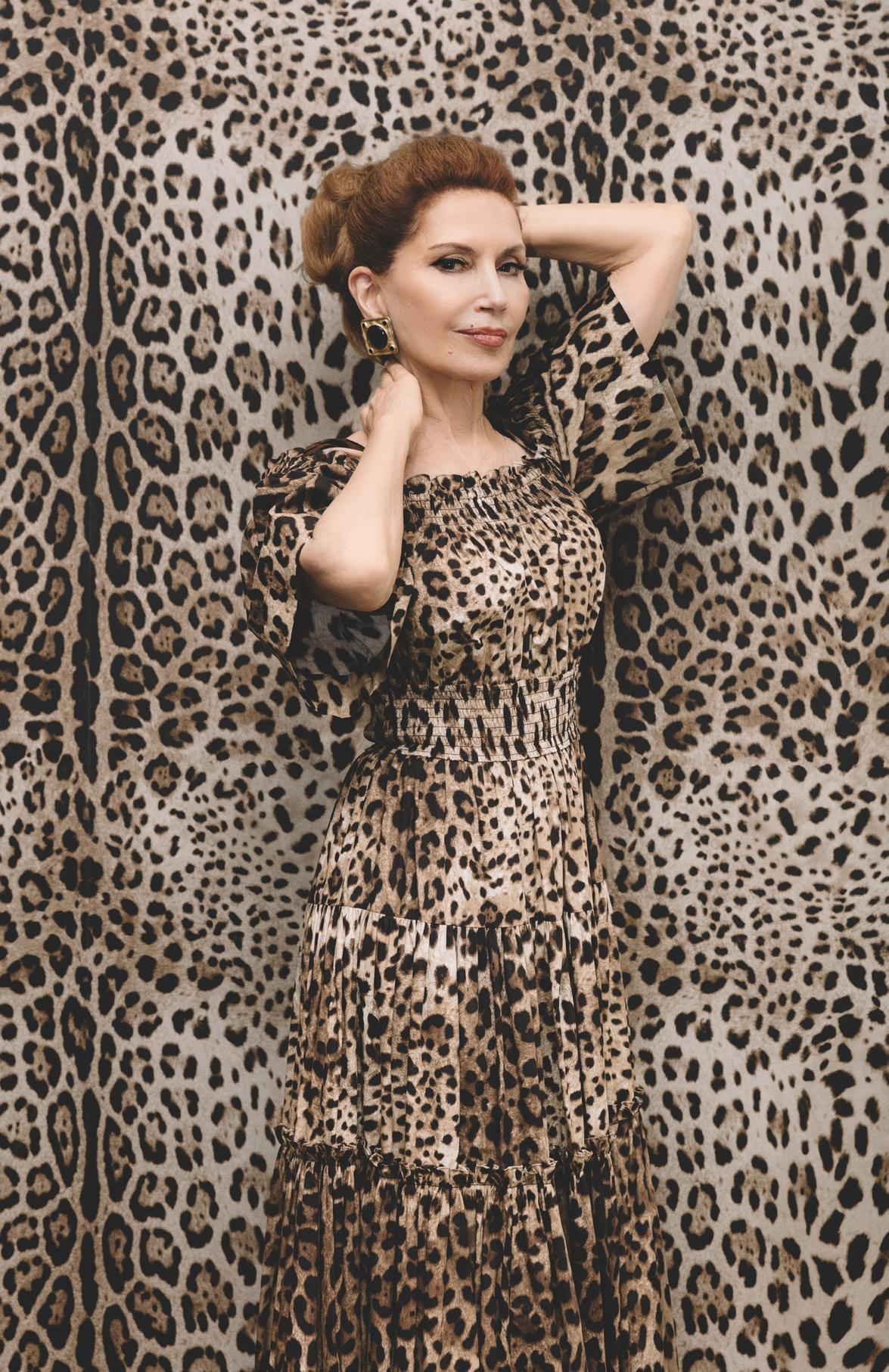
officially named her the “First Lady of Philanthropy.” The title remains. Jean Shafiroff sits on the board of Southampton Hospital Foundation, NY Women’s Foundation, French Heritage Society, The Couture Council of the Museum at FIT, Mission Society of NYC, Casita Maria and Global Strays. In addition, she serves on the honorary board of the Historical Society of Palm Beach County and Ballet Palm Beach. A Catholic, Jean Shafiroff served on the board of the Jewish Board for 28 years and is now an honorary trustee. During the pandemic, she served on the board of the American Humane and was their national spokesperson for their “Feed the Hungry –Covid – 19 Program”, an initiative that raised $1,000,000.00 to feed 1,00,000 animals in shelters across the United States.
Jean Shafiroff is a great hostess and has literally hosted countless parties for different philanthropic groups in her homes. Just one example is a birthday party she recently hosted for Patrick McMullan, the iconic society photographer. The party on September 15th was held in honor of the ACE Programs for the Homeless of NYC. Approximately 150– 175 people attended. Jean
underwrote it, which means she paid for every aspect of it – as she does for the many charity parties held each year in her homes. Guests arrived at 6PM and many stayed until mid–night. Two other parties she hosted and underwrote this fall in her NYC home were ones for the Samuel Waxman Cancer Research Foundation on October 6th and Mission Society of NYC on November 7th. In December, Jean Shafiroff will be hosting and underwriting large parties for the NY Women’s Foundation and then the Viennese Opera Ball – all in her NYC home.
This Fall, Jean served as a chair of the Casita Maria gala and then the French Heritage Society gala. During this past summer she chaired and hosted multiple events in the Hamptons, NY. Jean Shafiroff’s schedule is a living calendar, a philanthropic relay with little room for idle laps.
The scope of her philanthropic work continually expands. New York remains home base, but she is slowly transitioning a great deal of her work to Southern Florida, specifically to the Palm Beach area. Jean is increasingly present in Palm Beach and Jupiter during the winter season. “Our home
is actually in Jupiter,” she says. “We have a wonderful home in Admirals Cove, and I love it there.
Ask Jean Shafiroff which causes she loves, and she answers without hesitation “helping underserved communities, women’s rights, health care, and animal welfare.” In addition, she supports the LGBTQ community and the arts. Jean also loves fashion –and has been a great supporter of it with an emphasis on helping emerging and independent designers. In many ways, she treats her support of young fashion designers with the same seriousness as any nonprofit board. “I love the fashion industry … and make a big effort to support the lesser –known fashion brands,” she says. It’s not a hobby; it’s a mission with measurable outcomes: opportunity, exposure, and work for creative people building their names in a tough industry. “
Her point of entry into fashion–as–philanthropy is telling. In 2010, Jean Shafiroff was asked to join the Couture Council board of the Museum of Fashion Institute of Technology. She began attending fashion shows where she met young
“I LOVE THE FASHION INDUSTRY … AND MAKE A BIG EFFORT TO SUPPORT THE LESSER–KNOWN FASHION BRANDS.”
Jean Shafiroff

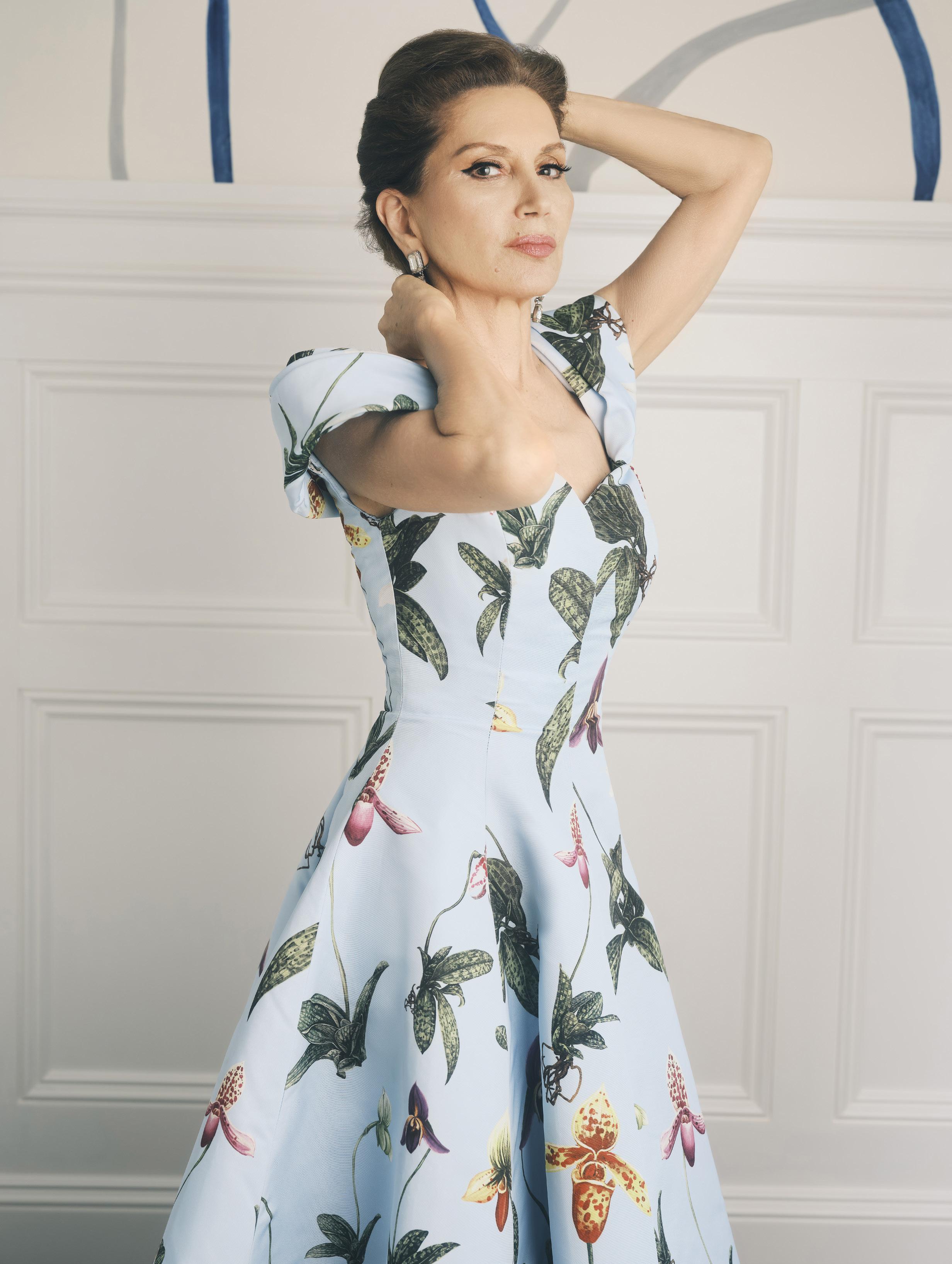
designers with genius and talent. “My first experience with a new designer instead of the big eight,” she recalls, “was when I attended a Victor de Souza fashion show … At that show, there was a beautiful gown that caught my eye. I went backstage, introduced myself, and said, ‘I’d love to buy that gown.’ Victor sold it to me for $3,000. She soon developed a friendship with Victor dE Souza as well as several other designers, always supporting their work. She purchased gowns from Victor de Souzza repeatedly, and then many gowns from B Michael and Zang Toi. Often Bill Cunningham photographed her for the New York Times, not just to celebrate her look but to boost the designers and charities she supported as well. “Mr. Cunningham wanted to support not just me as a chairwoman and fashion lover, but the designers and their careers.” She smiles at the memory; it’s a small, perfect case study in how strategic attention can change a designer’s trajectory.
Jean Shafiroff has long gravitated to Oscar de la Renta, Chanel, and Carolina Herrera, but she’s equally animated by names that are less well known. Malan Breton, Ese Azenabor (“mostly known for her bridal and extremely talented”), Ron Dyce, and Frederick Andersen (“very edgy with strong construction”) are just a few of those names. She lights up when she speaks about Rousteing’s work at Balmain–“edgy but fresh, new, and wearable”–and she reminds you that “wearable” is not a code for safe; it means a design that communicates on the body, in motion, in real life.
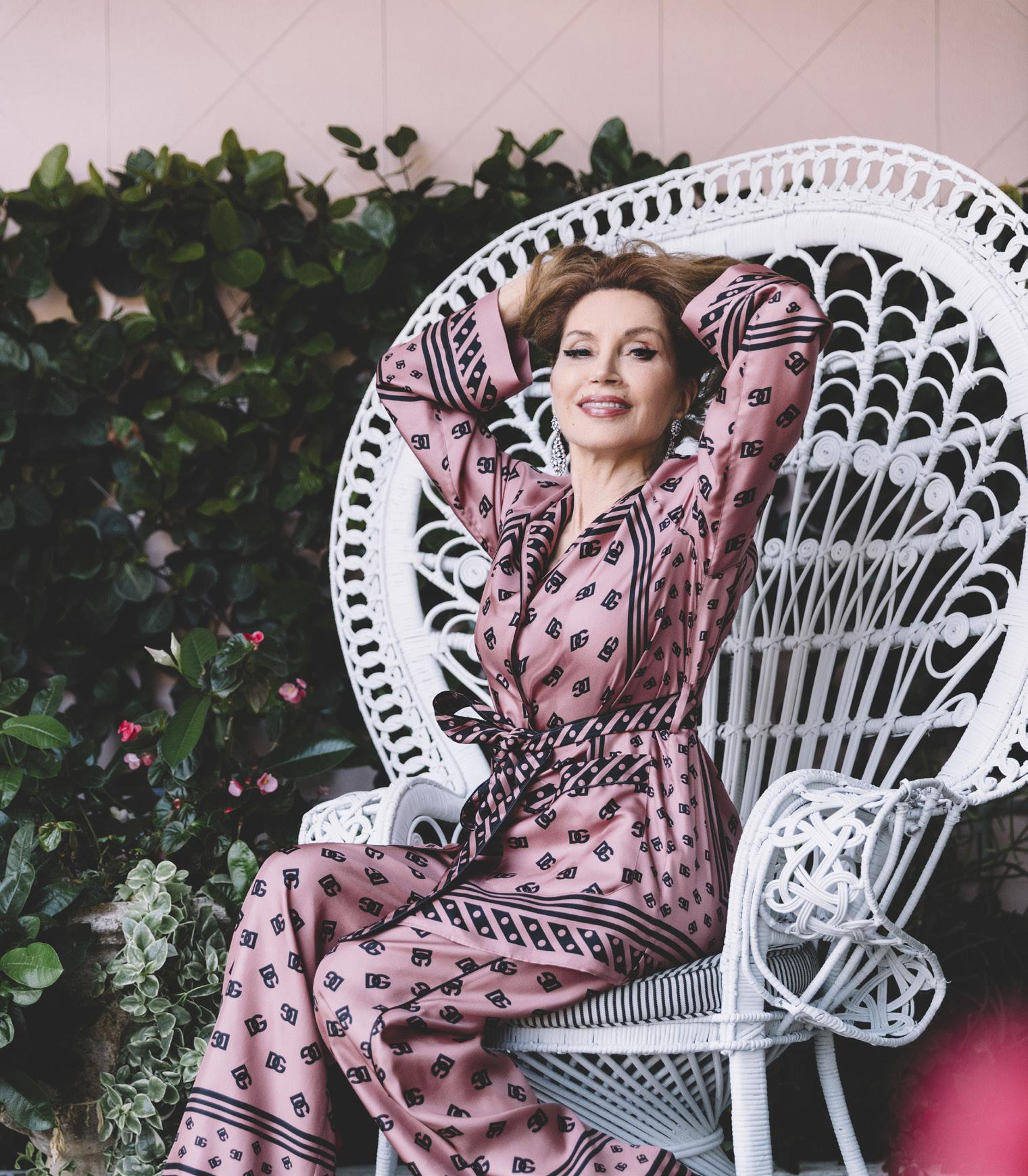
That, in fact, is the center of her taste: the interplay of fabric, construction, silhouette, and the way a look lives on a person, not a hanger. “I look for fabrics, the construction of the garment, and the fit–how it would fit me,” she says, adding that visualization is the first step. “I’m not 5’11”–I’m about 5’3”–so proportions matter. But I give a taller appearance,” she says, an acknowledgment that the best dress is one that understands its wearer. “When I go into a showroom or boutique, yes, I instinctively know–yes, no, yes, no.” Being a sample size helps; designers can see their work exactly as they imagined it: crisp lines, proper fall, the intended language of the piece.
Color is her calling card. “I love bright colors … I can’t stop wearing bright pink …
now red is very popular … I’ve always enjoyed red,” she says, before veering happily into her affection for blues, yellows, and greens. She avoids dusty tones–muted pinks, washed–out greens–that fight with her complexion. “Yellow is hard to pull off,” I suggest. “You can pull it off; very few people can.”
“I love yellow,” Jean Shafiroff replies laughing. “There are a million different yellows. And if it’s strapless, it’s not right up against the face.” The practical calculus is automatic: she is fluent in the truths of color theory without lapsing into theory. Black makes appearances–she recently bought an all–sequin black gown from Malan Breton “because it’s quite beautiful”– “she says. Purples and lilacs? “Beautiful, too.”
“TODAY
Jean Shafiroff repeats looks unapologetically–an ethos that feels refreshingly modern and, frankly, sustainable. “If you’re wearing couture, you should repeat it–no one else will ever have it. And if Kate Middleton, the Princess of Wales, can repeat, I certainly can repeat,” she says with a grin. “Designers actually want you to repeat because it shows you purchased it.” Her wardrobe, especially the one–of–a–kind couture, is carefully archived. During the pandemic she hired professionals to catalog the gowns, most of which are housed in Southampton, with significant satellite collections in New York City and Florida. Jean plans to donate the entire collection to a museum one day. In the meantime, she enjoys wearing them to the numerous charity galas she attends and supports.
There are other stories that have already become part of her personal folklore. Once, on the day of the Metropolitan Opera Gala, she popped into the Oscar de la Renta boutique and fell in love with a massive navy gown– “I literally purchased it on the spot, walked out with it that day, and wore it that night,” she says. She lets a piece “rest” after an appearance and then brings it back seasons later with fresh context. And then there is the Morocco–themed Stony Brook Southampton Hospital gala this year, where timing nearly collapsed the plan. “A week before I reached out to Victor de Souza …
I thought he had heard from me … suddenly it was four or five days before the event. I went into his new showroom at the Emanuel New York boutique on West 39th, stepped into a work–in–progress, did a fitting with two interns–and then I had to leave for Southampton.” On the day of the event, the interns brought the completed gown out on the Long Island Railroad. “They were so lovely and talented. I gave them very generous tips and lunch” she says. I will never forget how kind they were to bring it to me. I envision them as great fashion designers themselves one day.
The through line, always, is the purpose. Fashion is never a mask; it’s a microphone. Jean Shafiroff wears gowns that create glamour and interest – and conversations about the organizations she supports. She hosts and underwrites parties so that organizations can grow. There’s a reason her homes are frequent venues for mission–driven gatherings: a private space becomes a public arena: a glamorous evening becomes an engine for fundraising. Each event is tied to an outcome–awareness, dollars raised, introductions made, momentum created.
Jean Shafiroff is clear about where the culture is, too. “Today fashion is every size and shape; there is great beauty in diversity,” she says, approvingly acknowledging the
broadening of runways and red carpets. This is all so important and needed in our world today!
Jean Shafiroff’s taste is instinctive yet disciplined. She will “step out of the box” – a phrase that could easily be a cliché if not for the way she proves it. She mentions Frederick Andersen again: “very edgy … the construction is very good, and the fabrics are good.” She has her eye on Christian Siriano, too. “I reached out to him a few months ago and then all of a sudden I got so busy that I dropped the ball–but I will go back to him because he’s doing a lot of very interesting things.” That’s how her creative Rolodex is built: showrooms visited, samples tried, relationships nurtured, checks written, careers brought forward.
In addition to all of this, Jean Shafiroff manages to host the TV show “Successful Philanthropy” which airs in the Hamptons on LTV East Hampton many times each week. The show serves as a platform to give celebrities, politicians, fellow philanthropists and executive directors of different charities to discuss their charitable work –and to help motivate others.
Jean Shafiroff also has a very large social media platform reaching people across the globe. Her Instagram account @Jeanshafiroff has over 1.2 million followers
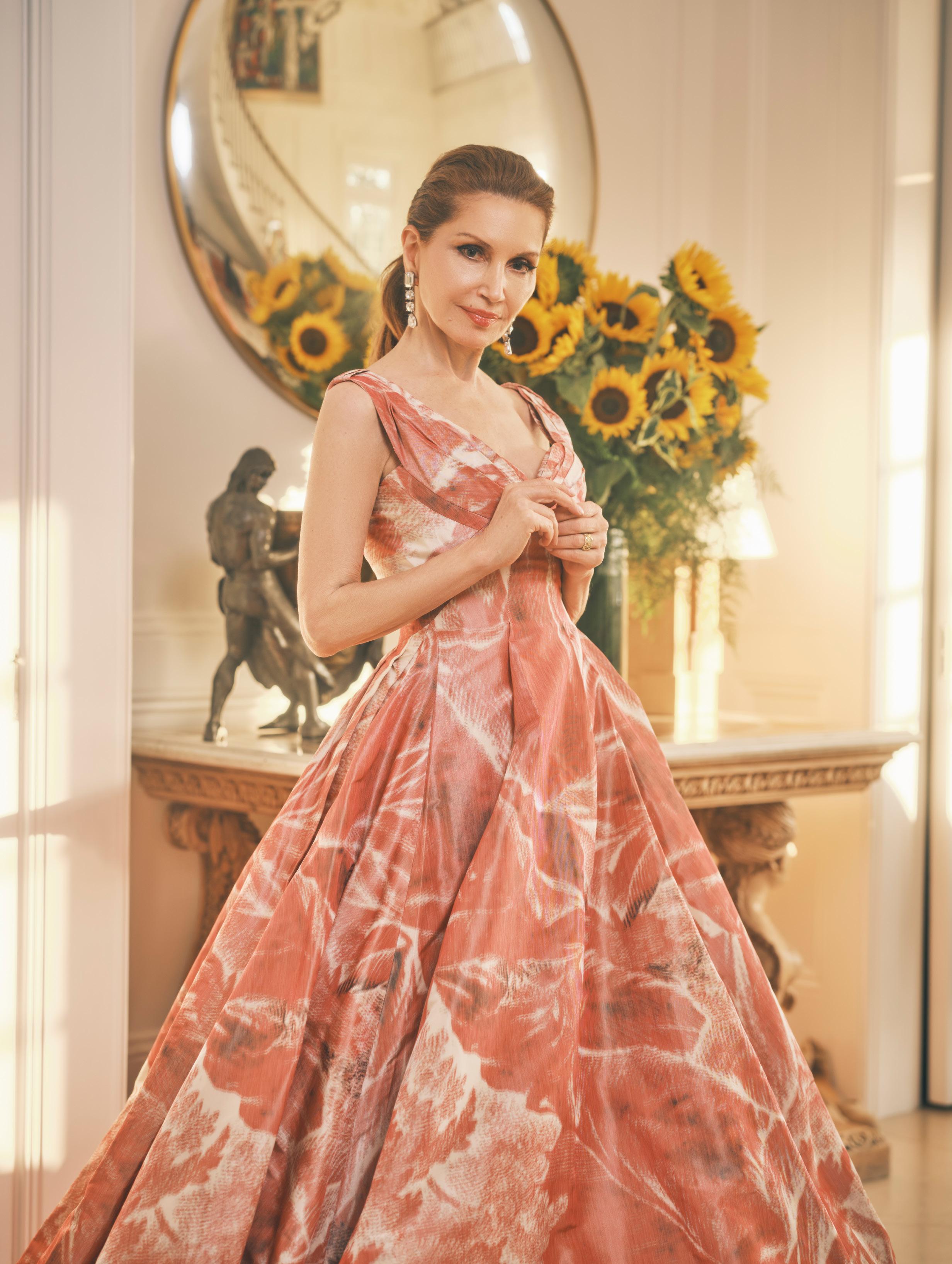


with the message of philanthropy, fashion and positivity at its core.
Jean Shafiroff’s background in healthcare and finance adds weight to her advocacy. She holds a B.S. in Physical Therapy from Columbia University’s College of Physicians and Surgeons and began her career treating patients at St. Luke’s Hospital. After a short career as a physical therapist, she returned to Columbia and earned an MBA in finance from the Graduate School of Business at Columbia University and then worked as an investment banker on Wall Street.
If all of this sounds glamorous, it is. But it’s also work–the exacting kind that requires phone calls and emails answered, calendars managed, budgets committed, and a public presence maintained without letting the persona eclipse the purpose.
Jean Shafiroff is pragmatic about the demands, particularly in the days leading up to a major event. “If I did not believe in the importance of philanthropy – the need to reduce the divide between those that have and those that do not have, I could never maintain my demanding schedule. I serve a purpose to society and that is a good thing.”
What Jean Shafiroff understands–and what sets her apart in a world crowded with people and events –is that taste can be a tool for public good. Not a substitute for writing checks, not a distraction from the hard work of charging a gala, serving on boards, giving knowledge and expertise, but a tool nonetheless. In a culture quick to dismiss fashion as frivolity, that argument has weight when it arrives, as it does with her, dressed in discipline. She is not merely “supporting”
designers with a tag on a post; she is commissioning work, paying for pieces by wearing them to rooms where patrons, editors, donors, and other decision–makers gather. She is, in a word, a patron of the fashion world, a world that employs millions of people around the world. She is an international philanthropic leader as well.
In a city that measures people by their pace, Jean Shafiroff keeps time like a conductor. The tempo is brisk but never rushed; the crescendos are planned; the rests are rare. She knows that every seat filled, every dress chosen, and every check written to a charity are part of the same composition. And she plays it in full, not just for the beauty of the music but for the good it can do. A philanthropist with great purpose and style, Jean Shafiroff is a great role model for others to follow. P
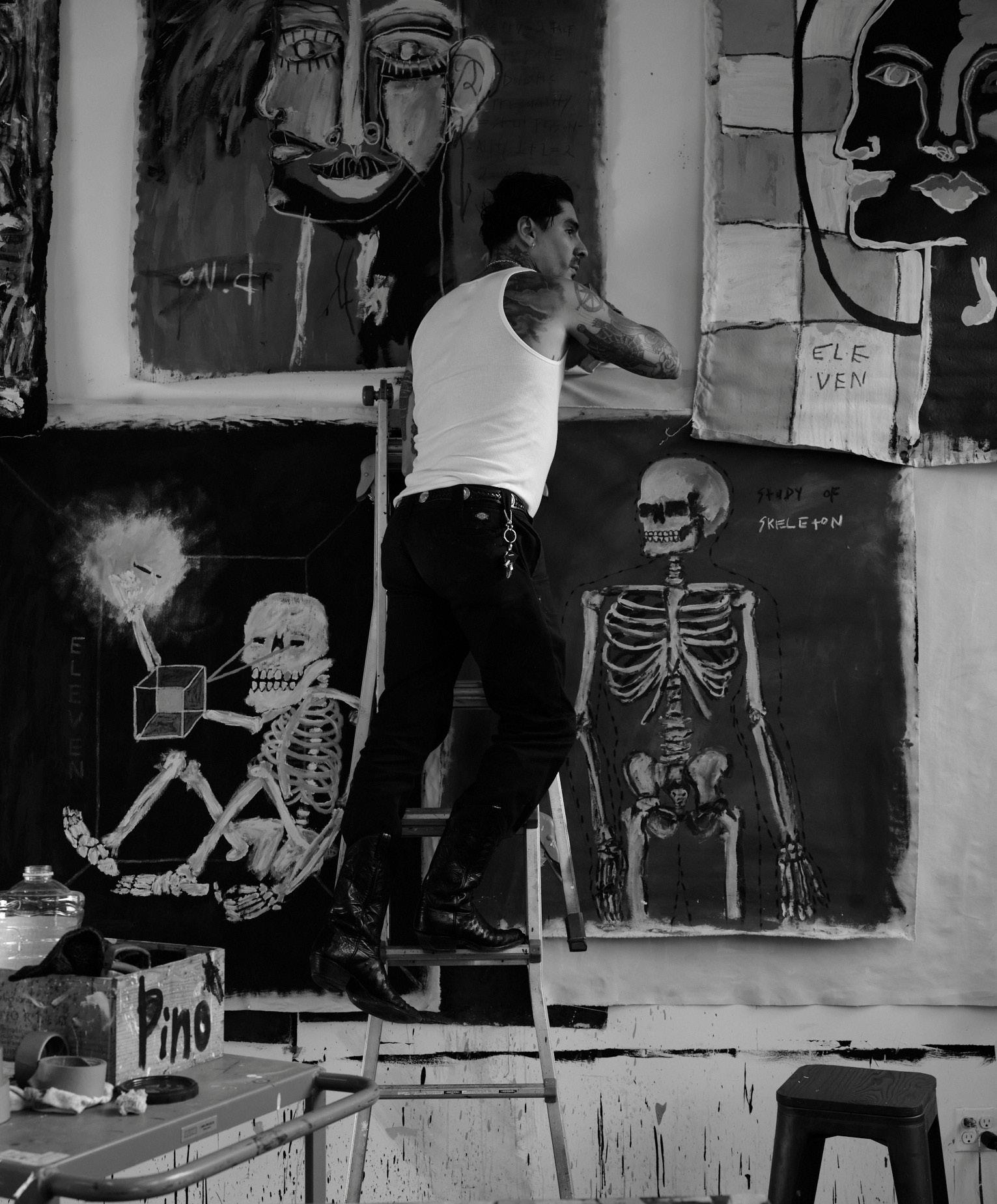
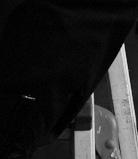
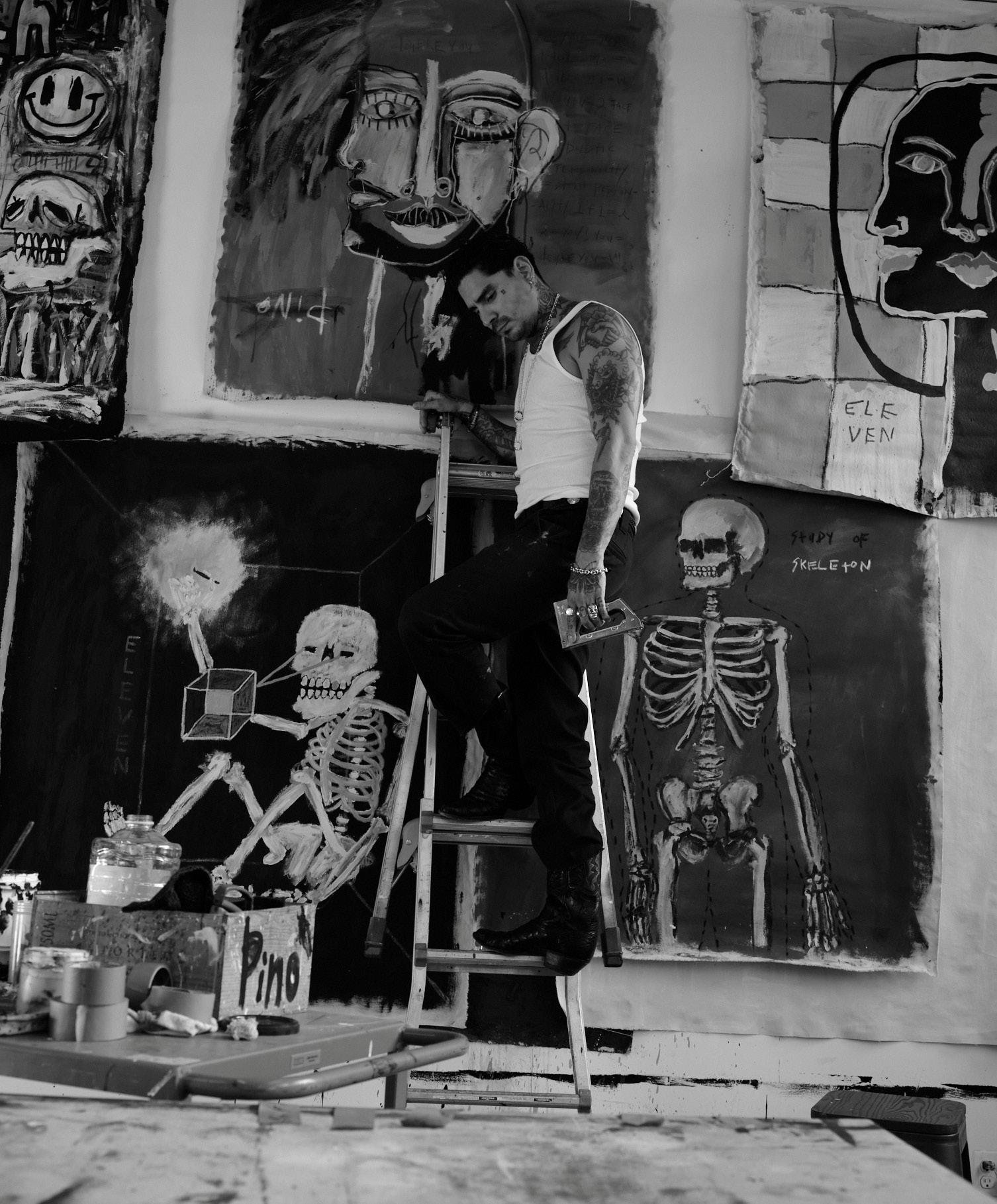
BY CHRISTOPHER A. PAPE
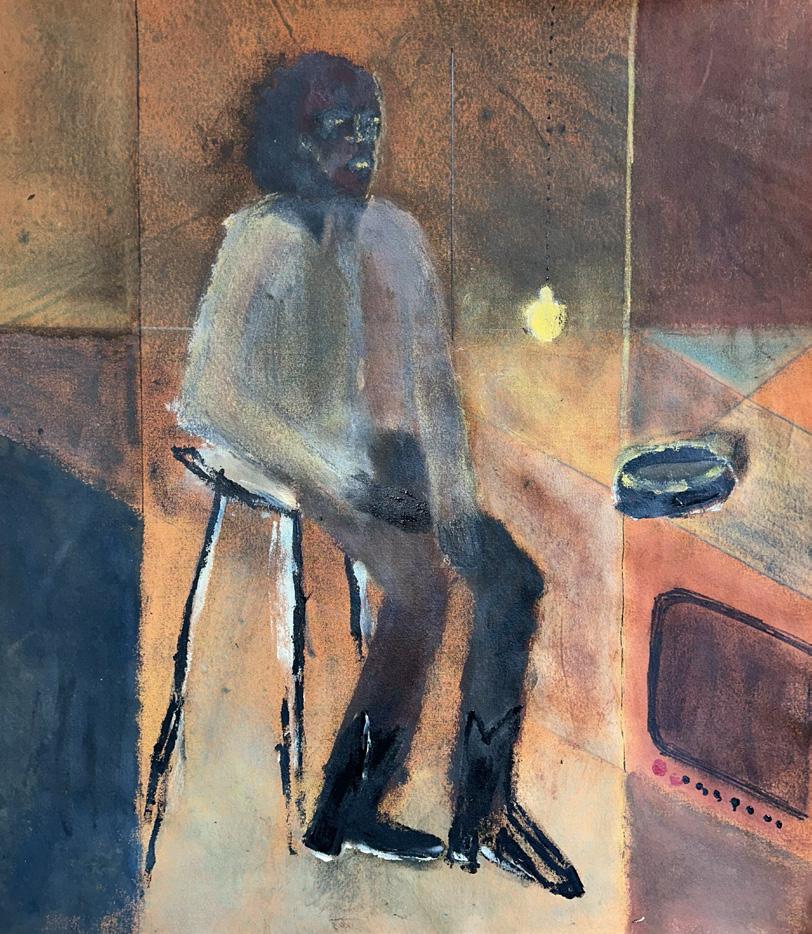
New Mexico born, New York based artist, Ross Pino, has, for years, been constantly making waves in the city’s art world with his evocative and thought-provoking works depicting both his heritage and human existence. His work delves deep into the full spectrum of the human experience by exposing the tension between life’s opposing forces of light and dark, good and evil and chaos and order. Known for his child-like but intensely edgy skulls and skeletons, Pino combines mature themes along with beautiful brushstrokes.
We are thrilled to present his work in PARK.
1. Tell us about your background. Did you go to art school? What drew you to art? Tell us your journey into art.
I was born and raised in Albuquerque, New Mexico, surrounded by desert landscapes, indigenous roots, and a raw culture that’s equal parts beautiful and brutal. I didn’t go to art school, I went through the school of life, which in many ways has been a harder and more honest education. I learned through doing, failing, and getting back up. My art journey began as a way to process everything I couldn’t put into words, pain, chaos, love, death, joy. For me, art wasn’t some hobby; it was survival.
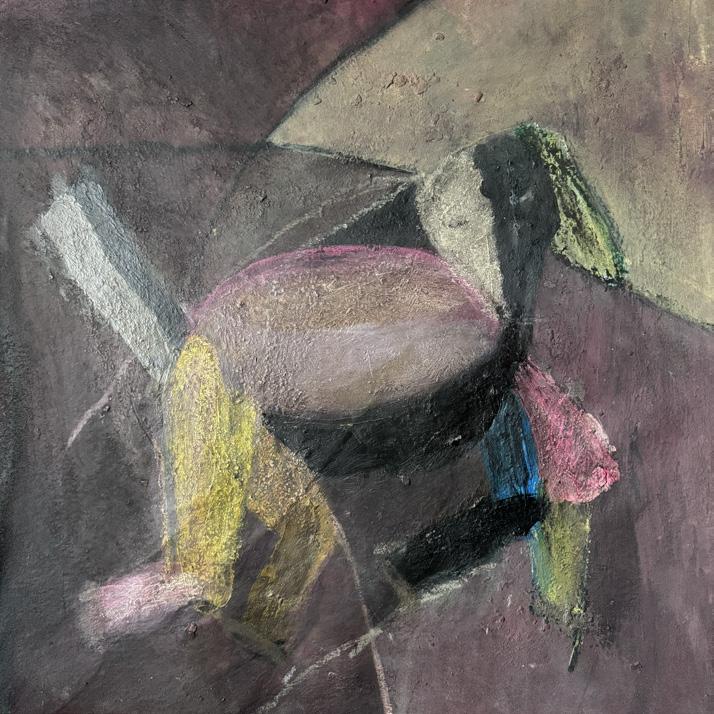
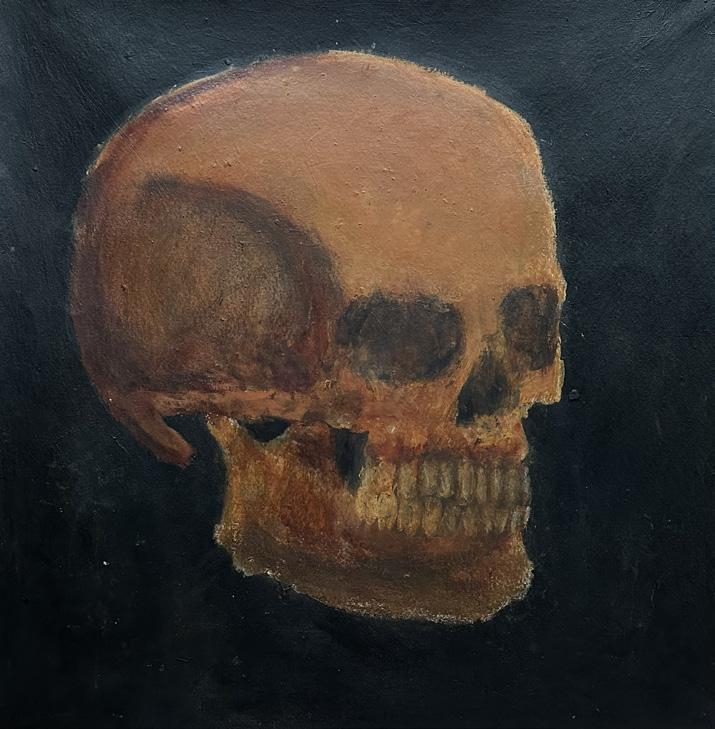
It became the only way to translate the duality I felt inside, the light and the dark, the good and the evil, the smile and the skull.
2. How does art allow you to express yourself?
Art is the only language I truly trust. I can sit in front of a canvas and let it bleed out whatever is in me, rage, joy, heartbreak, love, chaos, delusion. I paint like a child who knows too much, like someone who’s both broken and healed at the same time. My brushstrokes are messy, playful, heavy, and unapologetic, because that’s who I am. Art gives me permission to say things without censoring myself, to bring my subconscious forward, to manifest visions. It’s not just about expressing myself, it’s about creating worlds where people can see themselves reflected in the dualities I put on canvas.
3. What are your main influences?
I pull influence from everywhere. Growing up in New Mexico, I was influenced by desert
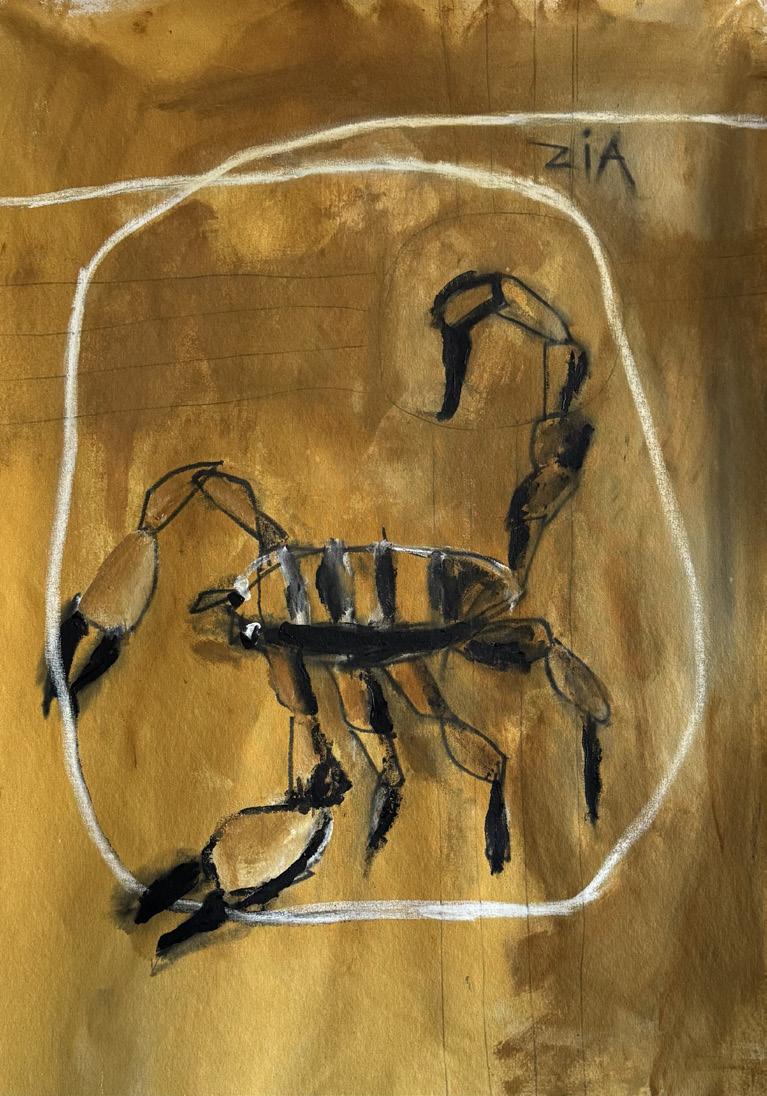

colors, bones, and indigenous symbolism. I’m also influenced by music, rock & roll, hip-hop, punk. I’m influenced by rebellion, counterculture, and the misfits who refused to fit in. On the art side, Basquiat, Francis Bacon, George Condo, Danny Fox, Wes Lang, artists who weren’t afraid of distortion, rawness, and honesty, definitely helped me realize I didn’t have to paint pretty to make something powerful. But at the same time, my biggest influences are real life experiences, the heartbreaks, the nights of self-doubt, the synchronicities like 11:11 that remind me I’m on the path.
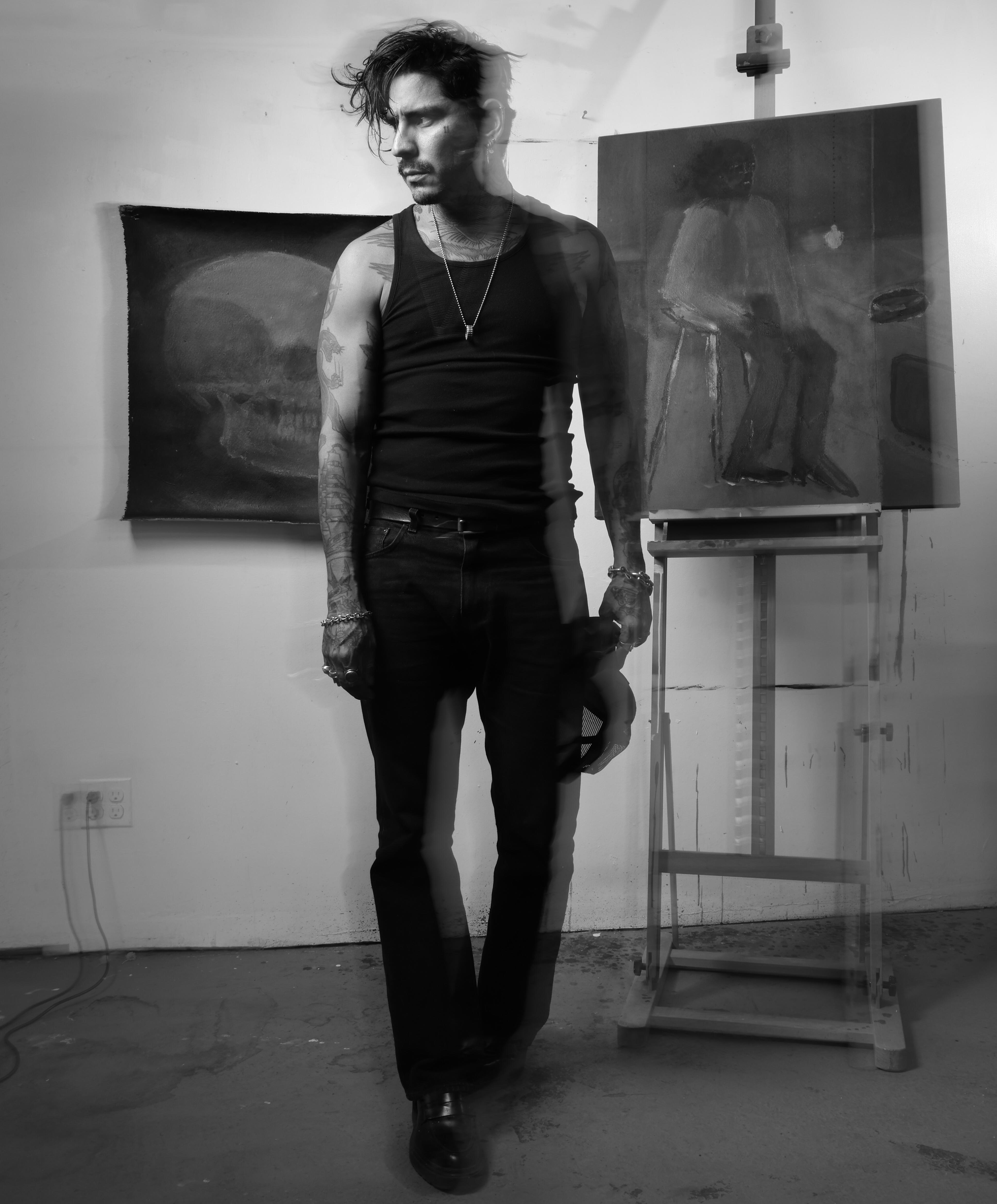
“Symbolism is everything in my work. The skulls represent mortality, but also the freedom of knowing we don’t have forever.”
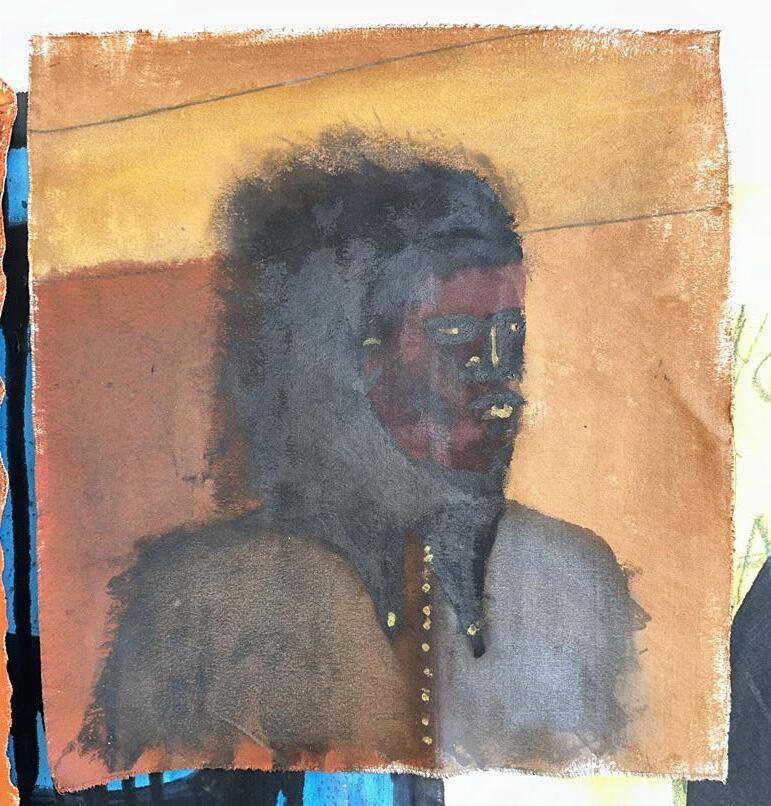

4. What do you seek to express in your work? What is your favorite medium? What genre would you say your work falls into?
What I’m really expressing is duality, the constant tension between life and death, chaos and order, joy and despair. I want people to look at my work and feel both comforted and disturbed. I want them to recognize the beauty in chaos. My favorite medium is acrylic and spray paint on canvas, because I love the immediacy of it, the way it forces you to be bold. Sometimes I’ll branch out, murals, painted cars, glassware, apparel, but painting is my heartbeat. If I had to put my work in a genre, I’d say NeoExpressionism meets Cubism, with a heavy dose of childlike rebellion. My strokes are loose, drippy, imperfect on purpose. It’s art that screams but also whispers.
5. What, if any, symbolism do you put into your work?
Symbolism is everything in my work. The skulls represent mortality, but also the freedom of knowing we don’t have forever. The drippy smiley faces represent resilience, the ability to smile even while you’re melting down. Skeletons are a recurring motif because they strip away identity and ego, leaving us all the same underneath. I also use a lot of New Mexico symbolism, jackrabbits, rattlesnakes, desert motifs, as a way to honor my roots. And then there are the synchronicities: 11:11 shows up constantly in my work, a reminder of alignment, of manifestation, of staying delusional enough to believe in magic.
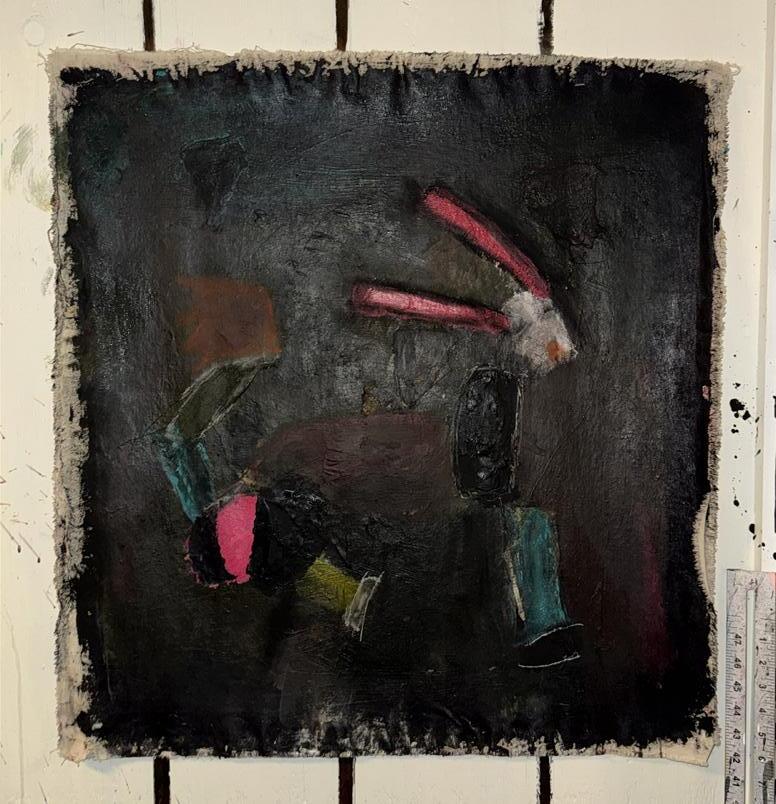
6. What is your process of making a piece of art?
My process is chaotic, but it’s controlled chaos. I’ll usually start with an idea, a vision, or even a lyric stuck in my head. Sometimes I sketch, but more often I just dive in. I like to work fast and loose, letting the canvas guide me. Mistakes become part of the piece. I drip paint, I scratch lines, I let things get messy, then I pull them back into form. There’s a rhythm to it, like making music. I often work in layers, hiding symbols and messages beneath the surface, so the piece has secrets only the viewer who really looks can find. I also ritualize it. I burn sage, I meditate, I put myself in a mindset where the art becomes a channel rather than just an object.

“I want to be remembered notjustas an artist,
but as someone who turned chaos into creativegold.”
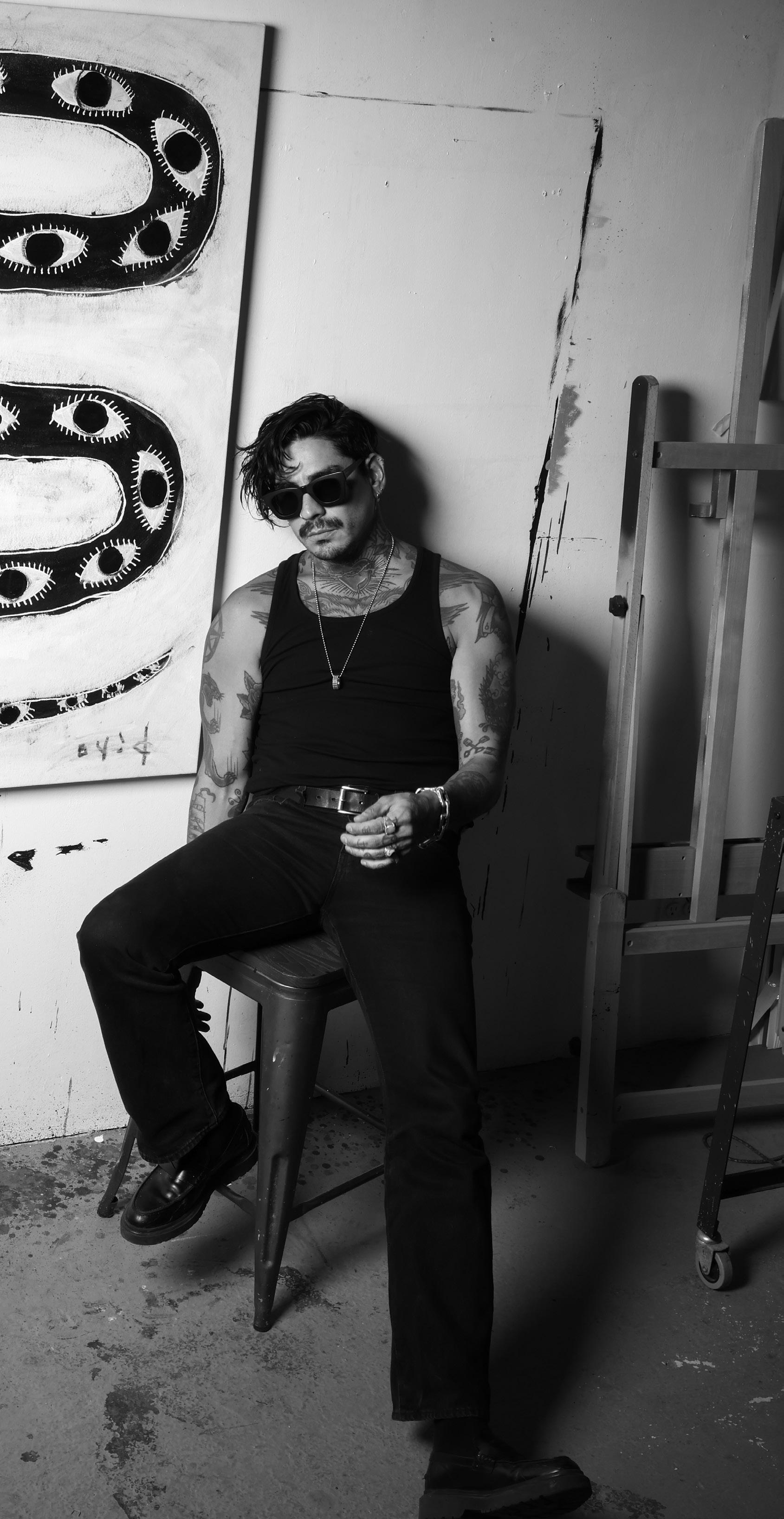
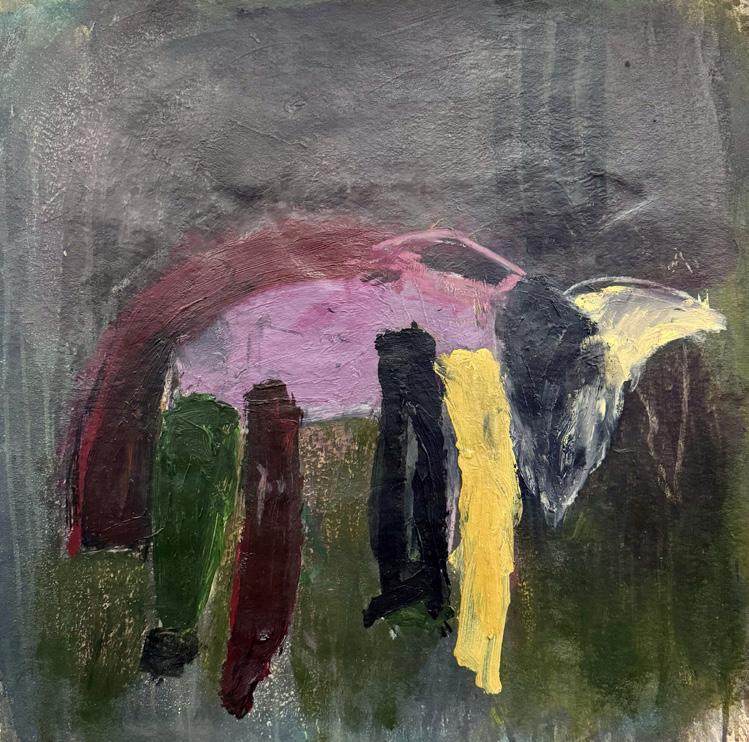

7. Where do you see your art in 5–10 years?
In 5 to 10 years, I see my art in every major city in the world. I see it hanging in homes of collectors who understand its energy. I see it on walls in places like London, Paris, Tokyo, China, and Mexico City. I see my art not just as paintings, but as an ecosystem, books, clothing, brand collaborations, installations, museums maybe even films. I want my work to exist in spaces that go beyond the gallery. I also see myself continuing to give back, doing charity events, using my art to raise awareness and funds for causes that matter. Ultimately, I want to be remembered not just as an artist, but as someone who turned chaos into creative gold and showed people that being delusional enough to believe in yourself is the only way to really make it. P
rosspino.com
BY LEXI WOLF

Born in Roanoke, Virginia, contemporary artist and lighting mogul Bentley Meeker landed in New York City in the summer of 1977, arriving in the wake of the infamous citywide blackout. While most were deterred by the chaos that ensued, Meeker saw beauty in the madness. “You know what? This place is crazy. This is where I want to be,” he recalls. This instinct has since defined his artistic philosophy. Guided by Oscar Wilde’s adage that “everything popular is wrong,” Meeker has built a career around illuminating the unseen and questioning the obvious.
Veluminosity at Carlton Fine Arts
Meeker’s newest exhibition, “Veluminosity,” opens this fall at Carlton Fine Arts on Madison Avenue. The show continues his exploration of color temperature and the dialogue between opposing frequencies of light. “It’s an extension of that same conversation,” he says. “I’m still looking at how warm and cool tones coexist,
and how they push and pull against each other, how they make us feel.”
The pieces in Veluminosity shimmer with quiet tension. Some appear to breathe, others to hum. “It’s really about the emotion of light,” Meeker explains. “When you walk into Carlton, you’re surrounded by great art. I love the space. It feels connected to something larger, like part of the city’s pulse.” Each work, layered with diffused materials and subtle gradients, invites viewers to reconsider how perception itself is shaped by luminosity. As in all his projects, the goal is not revelation but reflection: a reminder that to understand light, one must first learn to look inward.
Over his decades-long tenure in New York, Meeker has left an indelible mark on the city’s cultural landscape. He’s the artist behind The “H” in Harlem, a massive public installation beneath the 125th Street viaduct, and the first artist of any kind to exhibit work in the Whitney

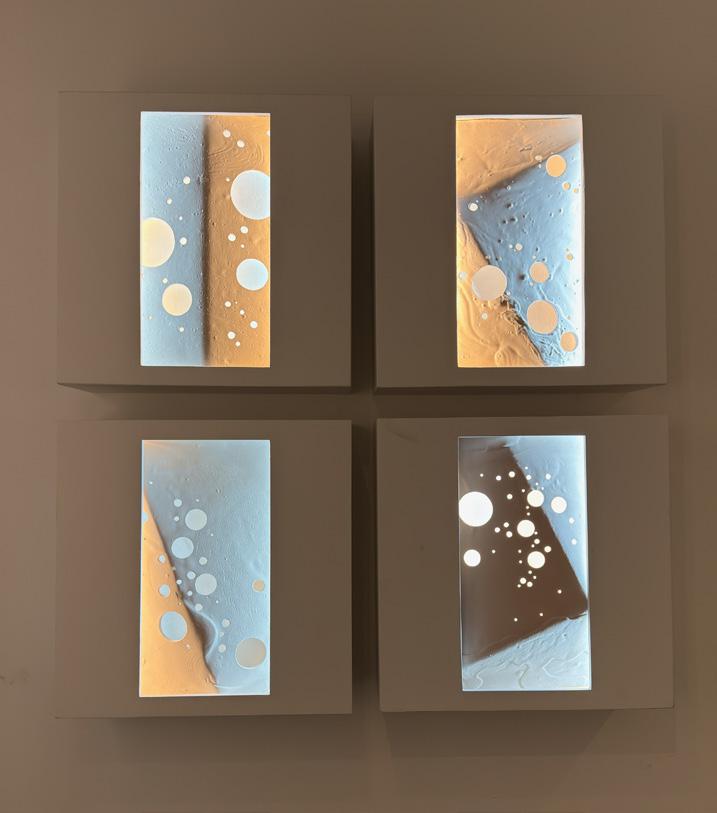
Museum’s Meatpacking District location. His solo exhibitions have graced the walls of the National Arts Club, the CORE Club, and numerous Chelsea and Soho galleries.
But his reach extends far beyond the five boroughs. A multi-year featured artist at Burning Man, Meeker created the lighting for the festival’s revered Temple installations in 2011, 2013, and 2015, each a tribute to impermanence and memory. His reputation has also earned him commissions from the highest circles, including a sculptural installation created for First Lady Michelle Obama during the Nordic States State Dinner.
Today, Meeker counts Paul McCartney, Rihanna, Beyoncé, and Mariah Carey among his clients. Yet, his origins were far from glamorous. After being expelled from both college and his parents’ house within the same day, he found himself searching for any job that would keep him afloat. “I was sitting in a theater
at Hunter College, and they were hanging lights. I knew how to do that, so I asked them for work,” he says. What began as a means to eat became a lifelong vocation.
“There was a moment when I realized people act differently under different types of light,” Meeker explains. “There’s a visceral reaction – something almost primal. I could see that light had an artistic quality deeper than paint.” That realization would become the foundation of his philosophy: light as language, light as life.
Unlike traditional artists who use light to dramatize their work, Meeker makes light itself the subject. “Everyone was using light to move outward,” he says, “but no one was asking, What does it mean to move into the light?” His practice blurs the line between technology, philosophy, and spirituality.
“I’m not here to explain what something is,” he continues. “My job is to get people to ask better questions.” For Meeker, light is not merely illumination – it is consciousness, energy, and essence. “There are plenty of scientists who can define what light is. I’m more interested in what it does – to us, for us, through us.”
That inquiry has guided a lifetime of experimentation. From refracted laser light in Immaculate Refraction to immersive environments like Flame to Now at the Whitney, Meeker’s installations dissect light into particulate form, exploring both its physical and metaphysical dimensions. “I want to know why all religions speak so reverently about light,” he muses. “What kind of light are they talking about?”
One of Meeker’s most conceptually rich projects is his “Speed of Light” series, three exhibitions titled 186,281, 186,282, and 186,283, numbers referring to miles per second, just below and above the speed of light in a vacuum. “They were explorations into the mixing of color temperature,” Meeker explains. “Each work juxtaposed warm and cool light: 5,600 Kelvin daylight against 3,200 Kelvin tungsten glow. So you could actually see how color temperature interacts in real time.”
The result was a hypnotic interplay of glowing surfaces: outer shells of epoxy
resembling lunar textures, punctuated with apertures revealing canvases lit from behind. “The left-to-right on the front surface would be right-to-left on the surface below,” he says. “Every layer was in conversation with the other. Hopefully, people liked what they saw.”
That sense of experimentation is perhaps best embodied in one of his most playful pieces, the Bongolier, a chandelier made entirely from glass one-hitter pipes. “Someone saw a mockup and said, ‘I’ll give you a show if you make that,’” he laughs. “So I did. Never again. It was the most painful project I’ve ever done. Weeks of work and thousands of dollars in glass pipes, but it turned out fabulous.” The result hung at the National Arts Club, glowing with irreverent elegance, a wry wink at the tension between commerce and creativity.
For Meeker, art begins not with the materials but with the message. “Sometimes I don’t know the message at first,” he admits. “Either I wait until I care enough to do the work or I start and trust that the meaning will reveal itself.” Once he identifies his purpose, every other decision, whether it be medium, structure, or light source, aligns around that central truth.
“You can organize the same elements with or without intention,” he says. “But the version with intention always has magic.” While technology plays an undeniable role in his process, Meeker resists letting it dominate. “Sometimes the tech becomes the message,” he cautions. “But for me, it always comes back to why. If it doesn’t serve the message, it doesn’t belong.”
Despite his stature, Meeker remains refreshingly humble. When asked what advice he’d pass on to future artists, he pauses before saying, “Stop looking at the lights and start looking into the light.” The distinction defines his life’s work. “Everyone’s focused on what light can do, but I’m interested in what light is.”
That curiosity traces back to his earliest days on film sets. Before moving into fine art, Meeker worked as an electrician in the film industry. “I remember this one director asking me to put a tiny 200-watt light at the top of a staircase,” he recalls. “I thought it was pointless, but when I turned it on, it added this ghostly halo along the steps. It gave life to the scene in a way I couldn’t explain. That’s
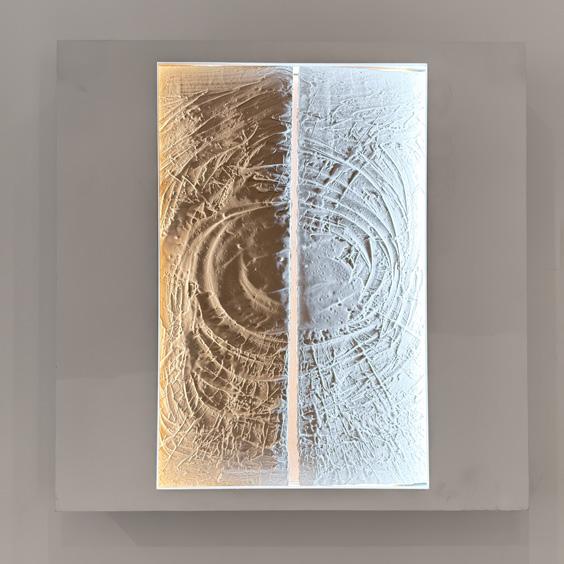
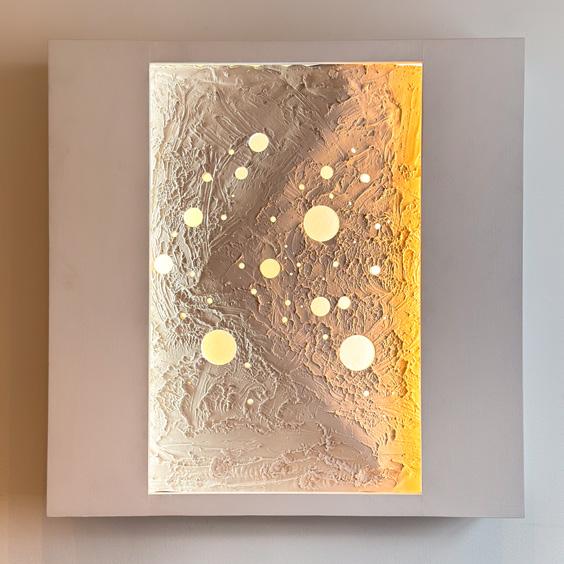
when I learned that magic often hides in the smallest glows.”
After the 1988 Writers Guild strike shuttered most film production in New York, Meeker pivoted to events, founding Bentley Meeker Lighting & Staging, which has since illuminated thousands of weddings, galas, and cultural events, including Chelsea Clinton’s wedding. “Taste is subjective,” he says, “But I trust mine, and so do other people.”
Today, Meeker continues to expand his creative footprint. His company recently unveiled Bentley House, a secret recording and rehearsal facility spanning four floors with five bedrooms, a chef’s kitchen, and a 2,400-square-foot rooftop deck designed for artistic collaboration. “It’s a sanctuary for creativity,” he says, “a space where anonymity and inspiration coexist.”
Even as his empire grows, his purpose remains singular: to explore the essence of light. “There’s still so much I don’t know,” Meeker admits. “After forty years, I’m still amazed by light. How it behaves, how it moves, how it moves us. Light is what makes us alive,” he says simply. “And as long as I can chase it, I’ll never stop asking what it means.” P bentleymeekerart.com
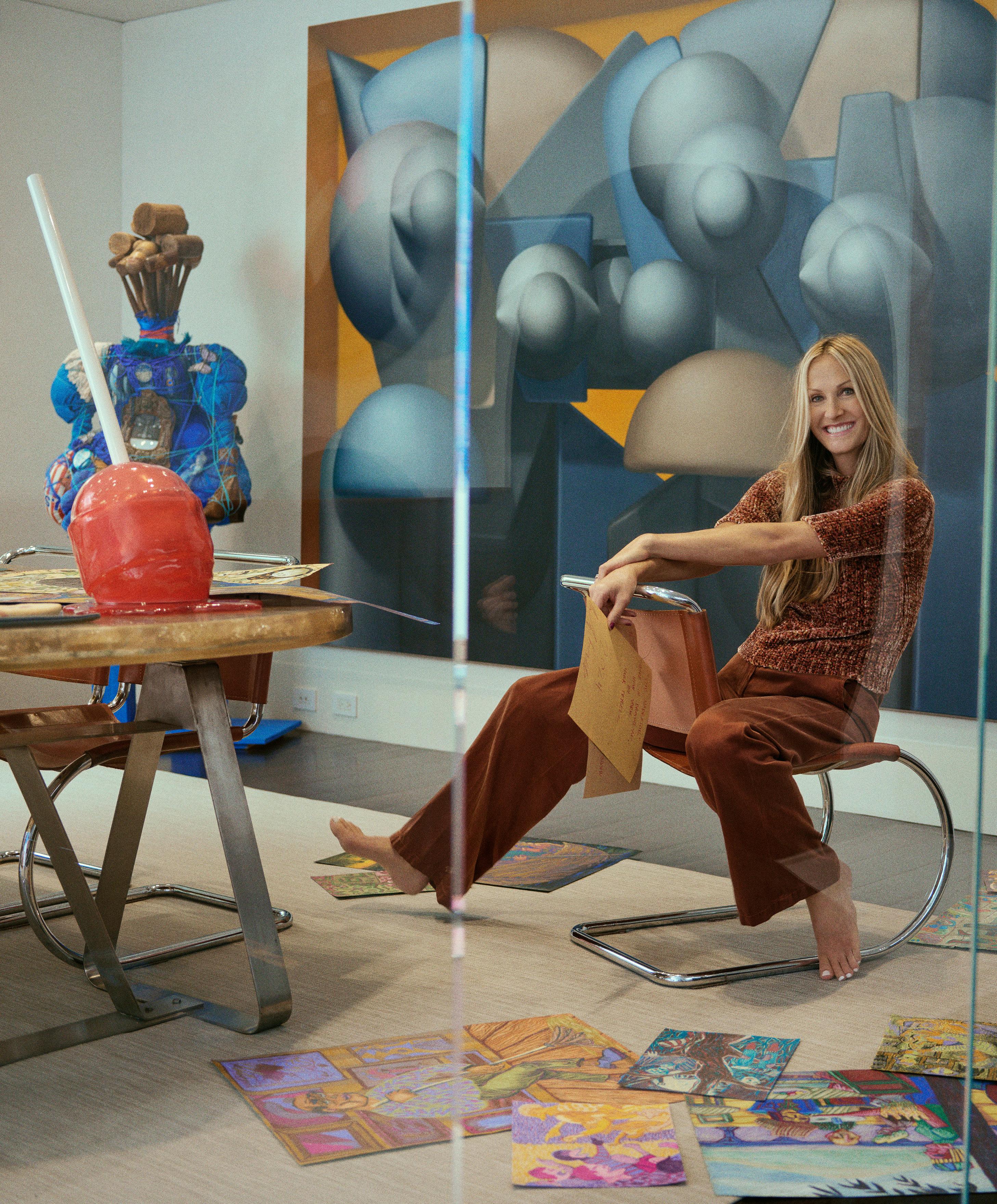
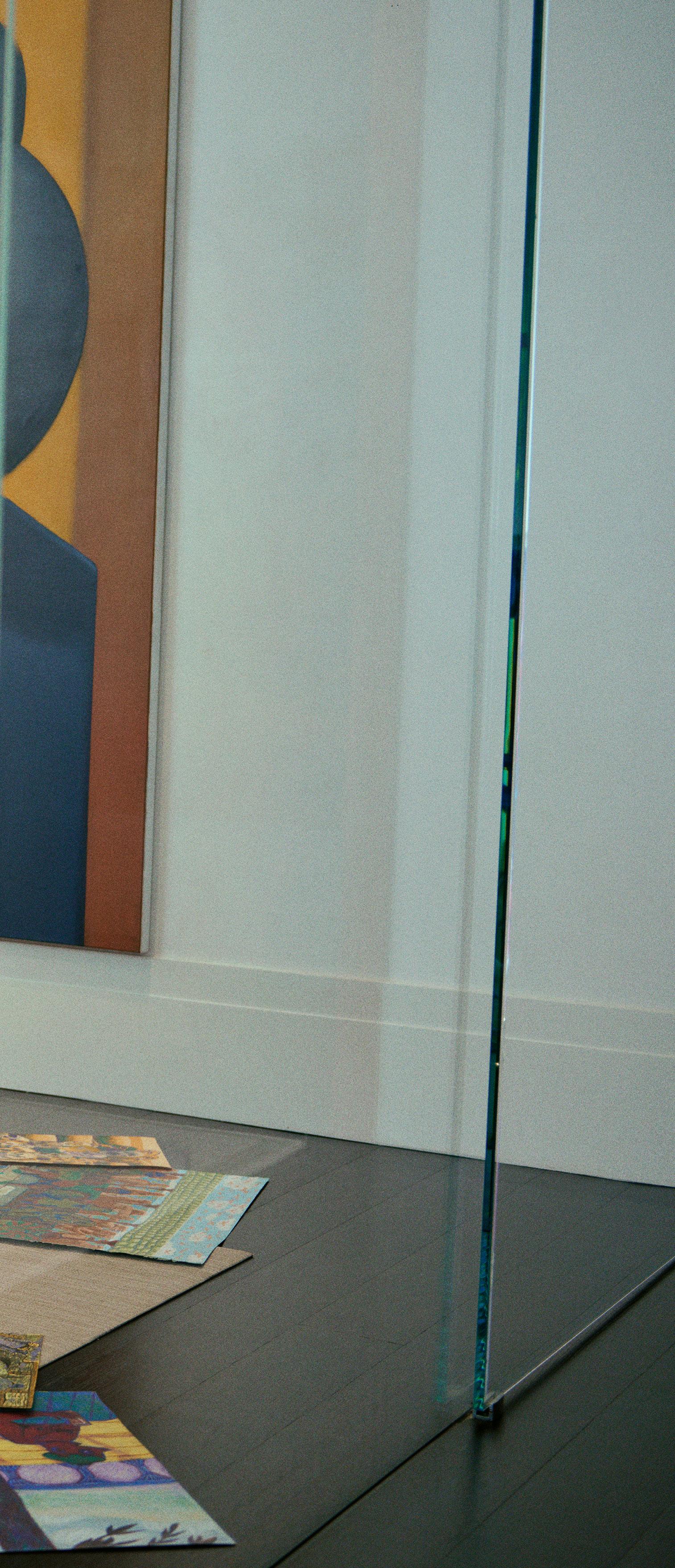
ART
BY R. COURI HAY
Philanthropist Christine Mack has been collecting art for more than two decades, mainly guided by her instinct, and has quietly emerged as a powerhouse in the New York art world. She’s become something of a patron to emerging artists, establishing the Mack Art Foundation in 2023, which offers New York City residency to artists from around the world and entrée to the city’s art ecosystem with her hands-on guidance.
Her mission extends beyond collecting; she is deeply committed to nurturing young talents through mentorship and financial support.
Mack serves on the boards and committees of major cultural institutions including the Guggenheim Museum, Moderna Museet Stockholm, Studio Museum in Harlem, and Buffalo AKG Art Museum, The Jewish Museum and Brooklyn Museum. She’s also become a board member of the Southampton Arts Center, where she was honored at this year’s SummerFest gala. And yet despite her lofty credentials, Mack felt self doubt when this summer SAC exhibited her collection, which included works by blue-chip names like Cindy Sherman, Robert Rauschenberg and Barbara Kruger alongside those of lesser known artists.
Nerves for Southampton exhibit: It’s right next to Peter Marino!
“I was so humbled to be part of Southampton Arts Center, and a little, I must say, insecure, to show my collection because I never saw myself as that caliber of art collector,” Mack said. Her collection includes paintings, sculptural works in ceramics, bronze and wood as well as textiles and glass by a diverse range of artists. “I mean, I have some nice works, don’t get me wrong. I am blessed. I have a lot of Rashid Johnson and KAWS ; I collected early. But it’s right next to the Peter Marino Foundation, and I was like, I can’t show my emerging artists.”
Her fears were unfounded. She believes the show, aptly titled “Beyond the Present: Collecting for the Future,” comprising over 80 pieces, was welcomed in a different way by the community, because many of her artists are young, colorful and vibrant. And people in the art world that attended the exhibition were interested in many of them as well.
“They’ve said that it’s one of the best exhibitions they’ve had because of that. It’s very friendly,” Mack said. “I have sculptures that kids can touch, I have a bench that they can sit on. I have a happy video. It’s colorful, it’s happy. It was very well received.”
Of course, Mack has been a longtime supporter of Southampton Arts Center, and the organization’s executive director Christina Mossaides Strassfield co-curated the exhibit alongside art historian Natasha Schlesinger, who sits on the Mack Art Foundation’s advisory board.
“To work with Christina and [general manager] Joe Diamond and the staff, and [chair] Simone Levinson of course, was just incredible,” Mack said. Though she hasn’t known Levinson for too long, they’ve become close friends. “She has always been supportive,” Mack said.”I think her and I were sisters once because we’re both hands-on passionate. We have that connection. And when they wanted to honor me, of course – how

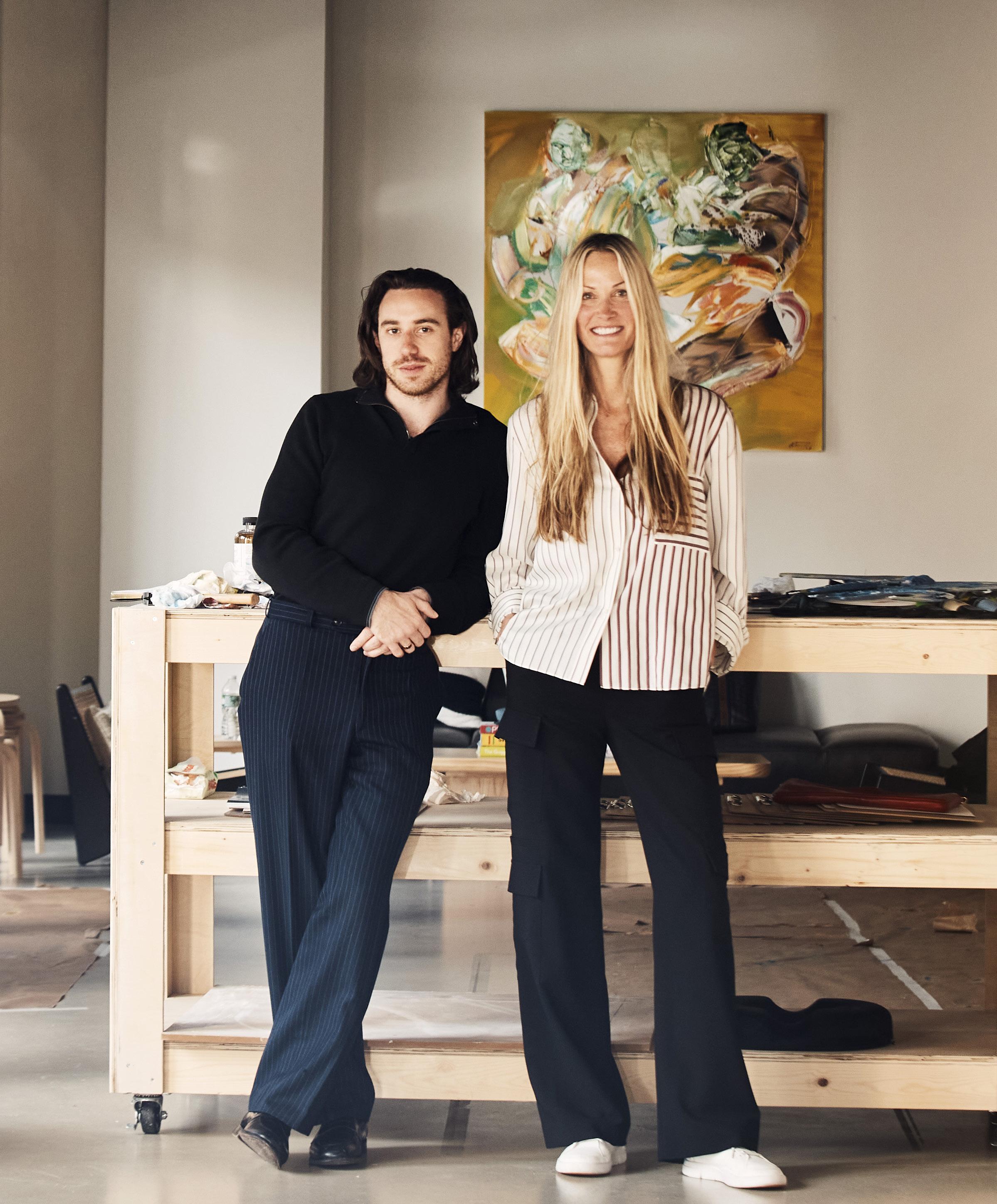

“I DIDN’T REALIZE WHAT I WAS DOING WAS ALREADY BEING RECOGNIZED. I WAS DOING IT BECAUSE I THOUGHT IT WAS FUN. AND I LOVE THESE ARTISTS. I MEAN, THEY’RE MY FAMILY.”
can I say no to Simone?” And despite her reservations, Mack is delighted with how it all turned out. “I felt like I wasn’t ready, but I didn’t realize what I was doing was already being recognized. I was doing it because I thought it was fun. And I love these artists. I mean, they’re my family.”
Icing on the cake, the show gave Mack a platform with which she could talk to collectors about the importance of helping and sponsoring emerging artists. Her upcoming project is a step further than her residency program, building an art hub in which artists and collectors can come together, without middlemen like galleries. She told the SAC visitors that she’ll build the platform to have access and learn about what the artists are doing and get to know them better. “We’re trying to work out what we can do in order to fundraise, but do it in a fun way, not just writing a check.” It won’t be a costly endeavor; perhaps underwriting art supplies for three months for a cohort of artists. “So that’s where I am right now, and I think the Southampton Arts Center really gave me that platform for my mission.
It’s been really wonderful. I love the team there so much. And I just got on the board; of course, because how can I not?”
Mack Art Foundation, serendipitous timing
Mack stumbled upon the idea of forming her foundation after she’d organized a collaboration with the artist Kaws for a giant sculpture at a new apartment building on the Greenpoint, Brooklyn waterfront in which her husband, a real estate developer, had an interest. While working on that project, she noticed a beautiful retail space and wondered why it was empty after a long time. It turned out to be dedicated community space set aside for non-profits, and it was still unspoken for. “I said I’d love to rent the space, but they said, well, you need to be a non-for-profit.” So she set one up.
To form the non-profit, she needed to have a mission, and hers was to bring artists and culture back to an area that’s been gentrified and create community service projects. “That was always what I wanted to do anyway, and it was a true mission, for people in the neighborhood to go to an art studio
there, they can meet the artist and it’s actually been the mission of my whole foundation.” The visiting artist gets the studio space plus a small apartment in the building for the duration of their residency. She tapped her contacts in the gallery world for advice on how to outfit an art studio and built out the raw space.
“In hindsight, that’s why I started the foundation, to be able to get this space. And then I realized, having this foundation, I can give out stipends.” With the foundation, she can sponsor other things, like support an organization she works with that does public art installations for kids in unerserved schools. “They painted a ground mural on basketball court in the Bronx, I helped them finish it.”
While still figuring out how to make it work, applications were flooding in by word of mouth. “Of course, come to New York, get an apartment, have access to everything,” Mack said. She set up her website, established a distinguished advisory board with the likes of Rashid Johson, Kaws, Liz Munsell, a contemporary curator, Katarina Swanström, head of development at Moderna Museet, and Natasha Schlesinger, who co-curated Mack’s SAC exhibit.
The mother hen to her artists
Mack is like the art world networking guru –she calls herself the mother hen - nurturing and introducing everyone. She’s had applicants from all over the world, and hoping to expand the reach to Asia, South Africa and elsewhere. An Afro-Brazilian artist is in the residency now.

“He doesn’t speak English that well, but he is already getting better at it!”
Innovative foundation financing
It was all coming together nicely, but she needed to find a way to continue to fund the residency in the future. She’d been collecting for a long time and bought pieces early that have appreciated over the years. It’s a bit complicated, but basically she can donate a painting that she owns to the foundation, give it back to the gallery it came from originally to sell, and use the proceeds to fund the nonprofit project. “They’re pieces that I kind of miss, but I would rather use that money to support artists instead”.
And she’s making plans for the aforementioned art hub in the same Brooklyn location. It will not necessarily include housing, but be a venue for several artists working together in a space she has already leased. She’s creating an advisory committee that so they’ll be vetted, good artists that don’t have gallery representation. “There are so many artists that don’t,” she added. They’ll do an exhibition – it will look like a gallery but it’s not – and the artists can sell directly to the collector.
And these days, people in the art world realize that when Mack shows up somewhere, she usually brings along some of her arists. “I don’t really care if they think it’s annoying or not, but actually, they’re very interested in meeting these artists because many of them do well after. And I’m like, ‘I told you.’ And I don’t have any skin in the game, so it’s just pure pride.”
Mack’s mother-in-law, Phyllis Mack, also a collector, has been a big inspiration. Back in the 1980s she and a close friend and art advisor collected as much as they could. They lived in Great Neck, on Long Island, and in those days the art scene was different; they went to galleries, there were no waitlists, you could buy two or three pieces. “They bought all these Cindy Sherman and Rauchenberg works. These women were amazing. And I always feel like my mother-in-law never got, I don’t know, the recognition. I mean, she made such good art decisions.”
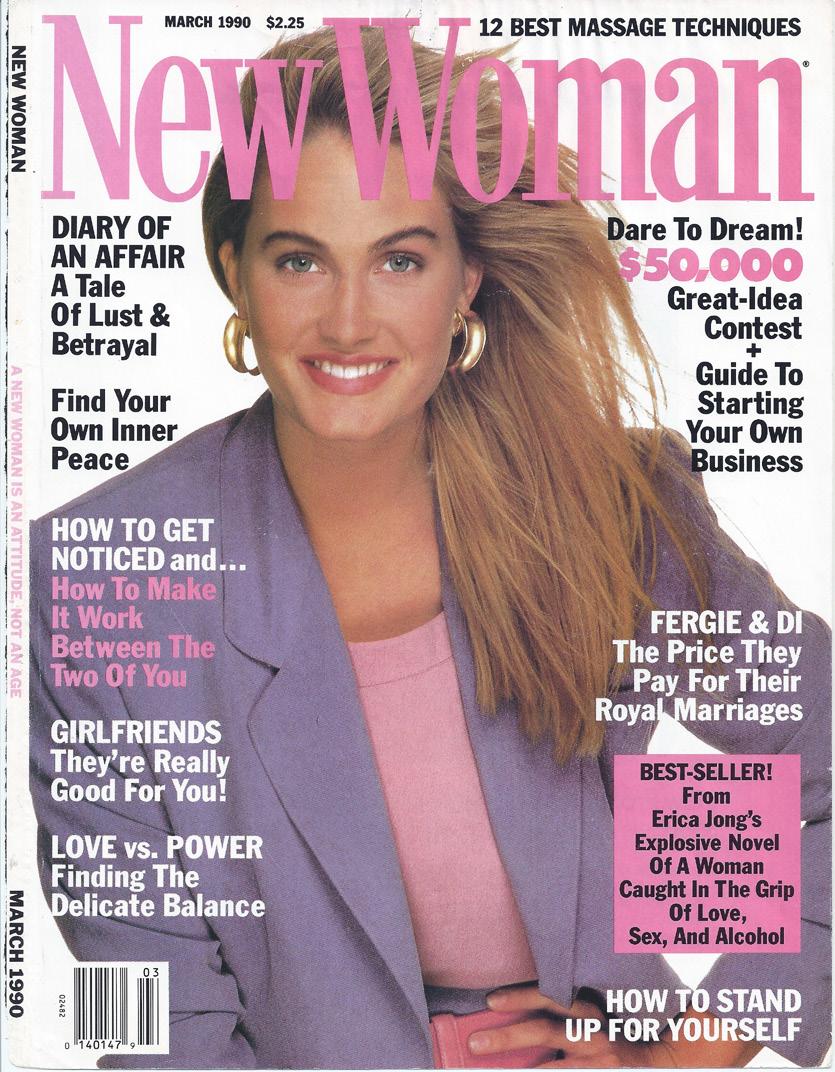
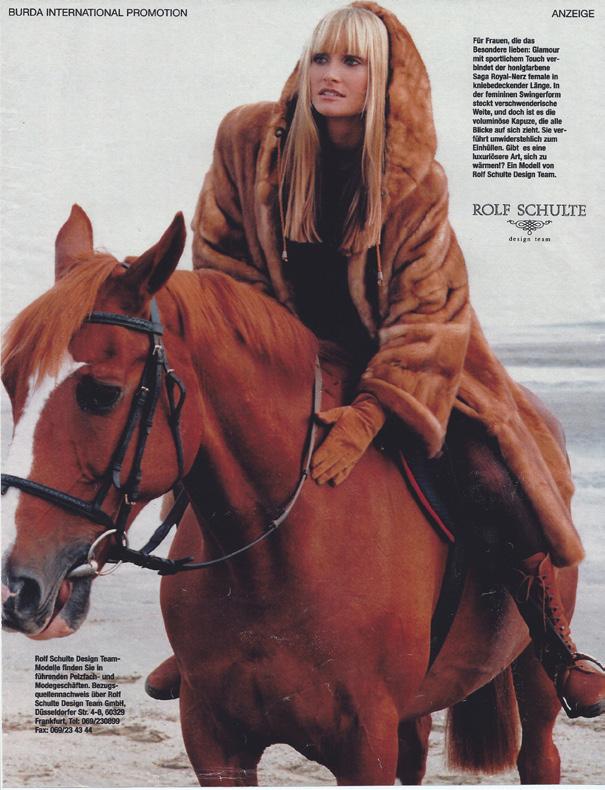
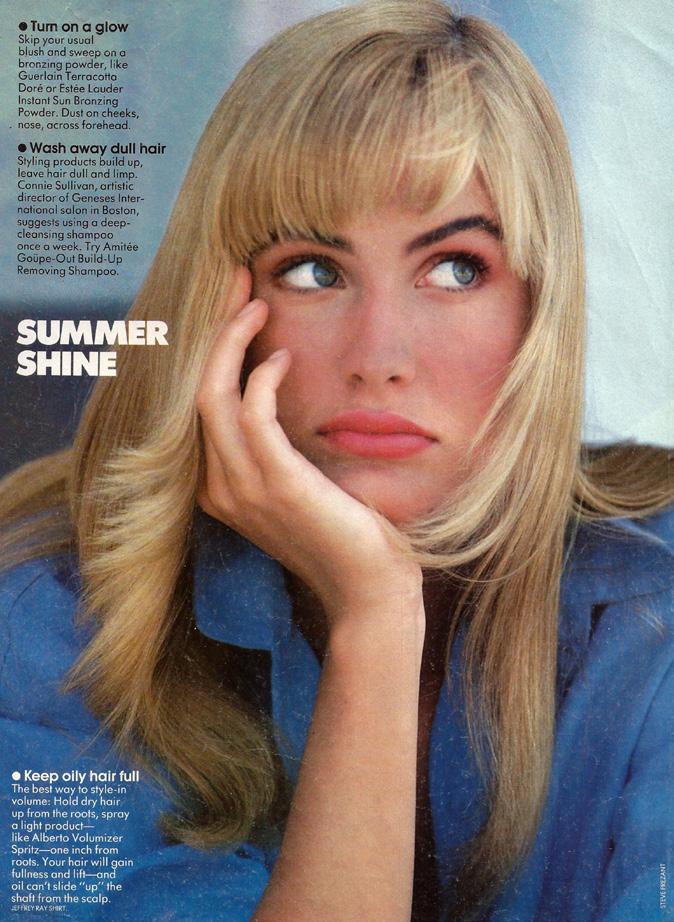
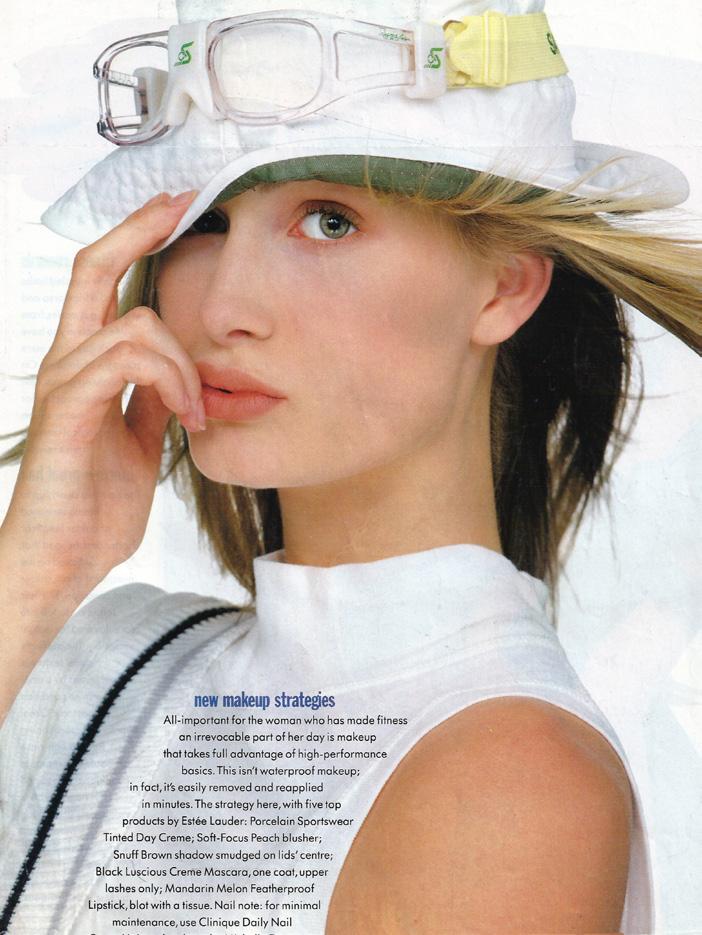
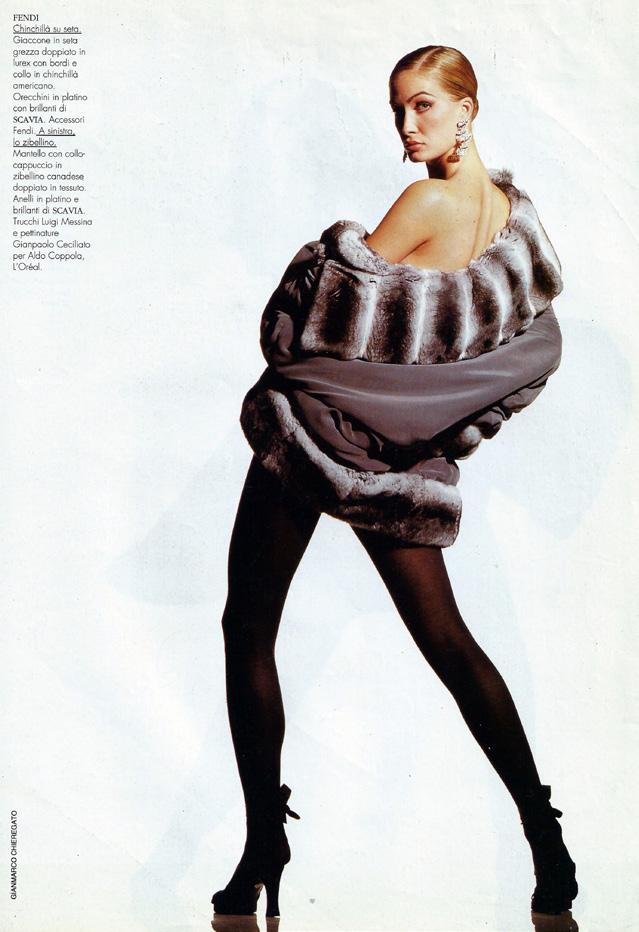
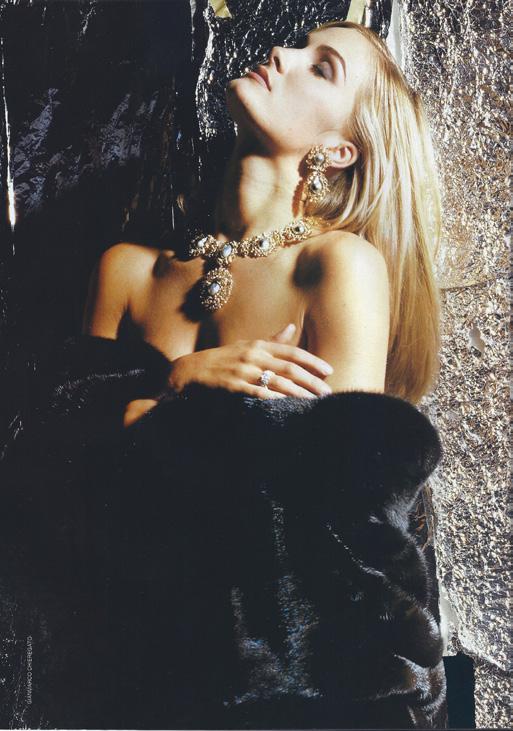


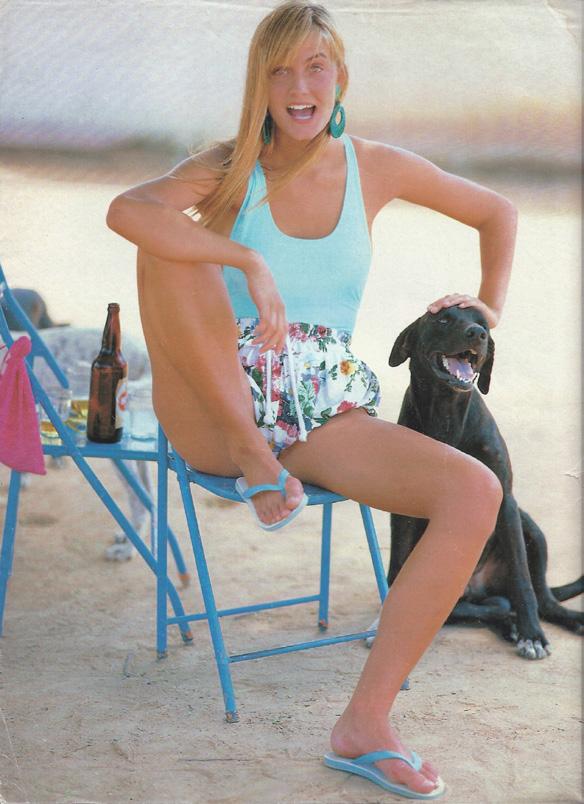


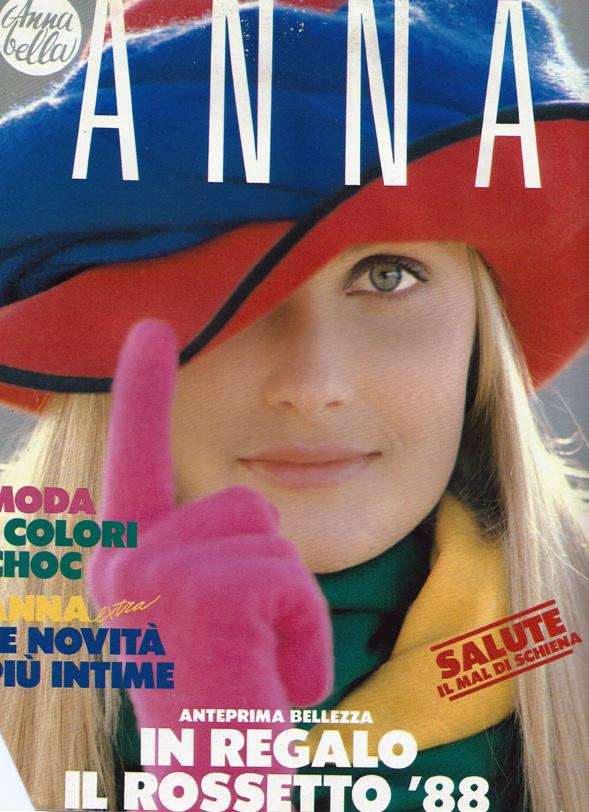
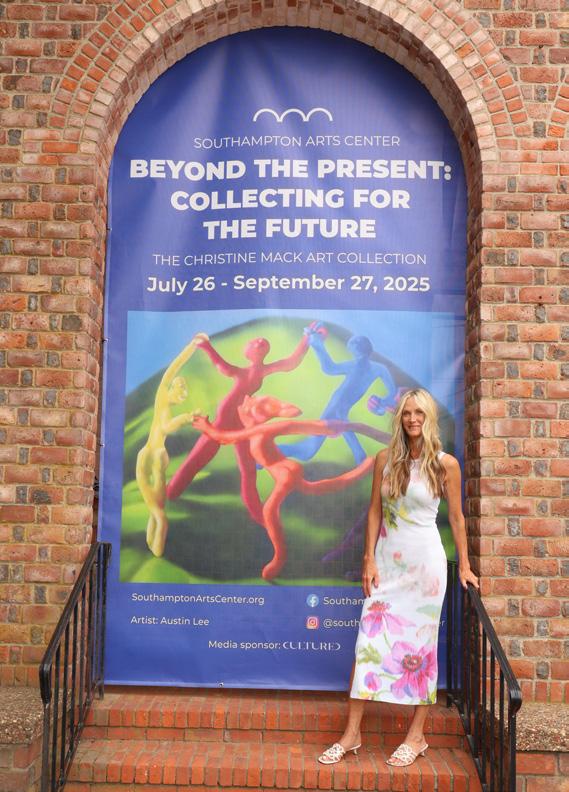




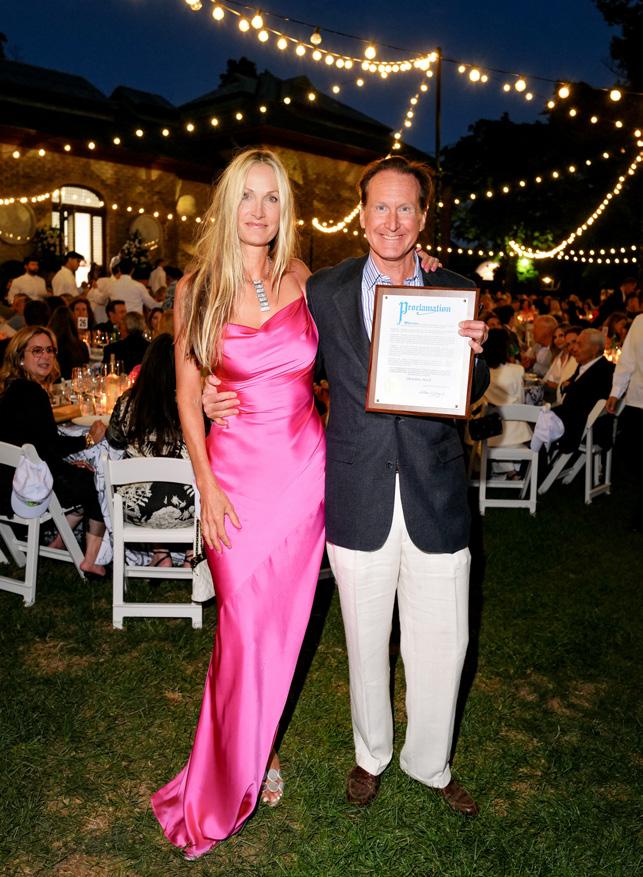
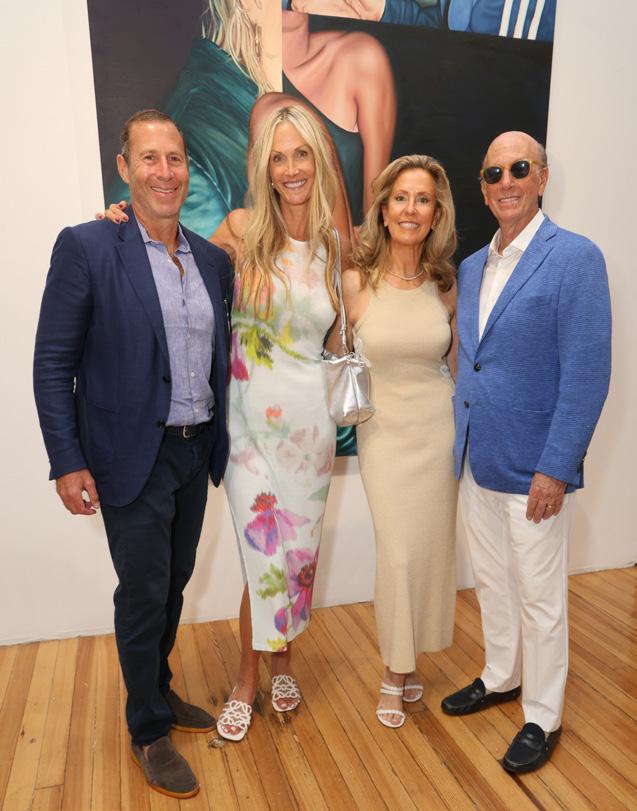
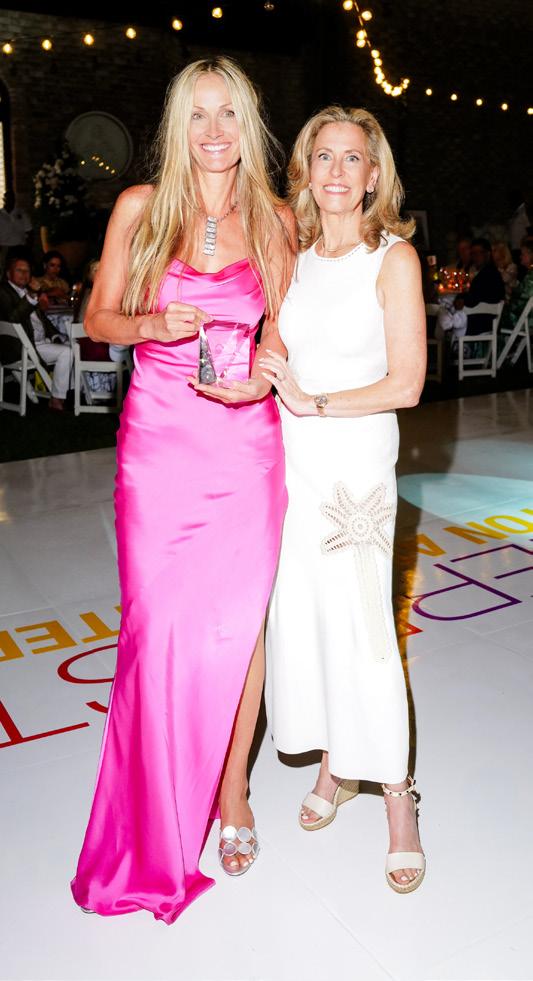
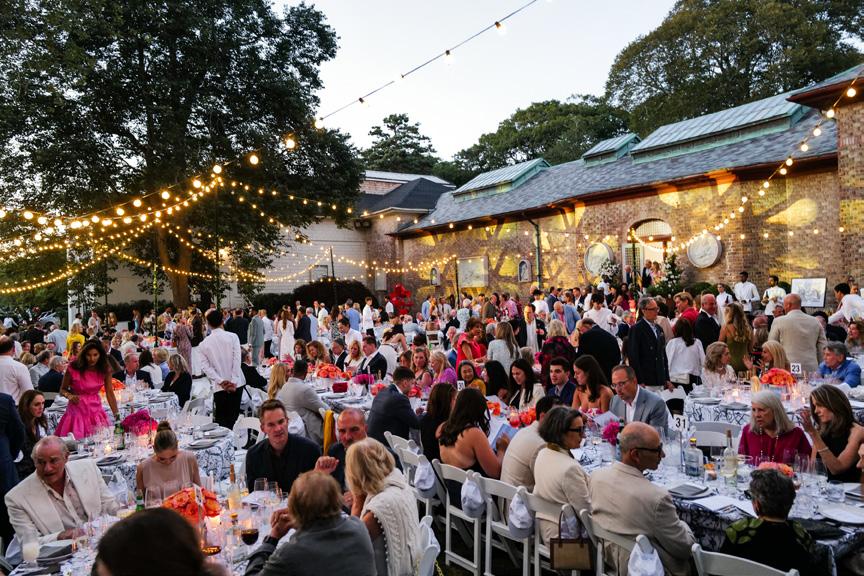
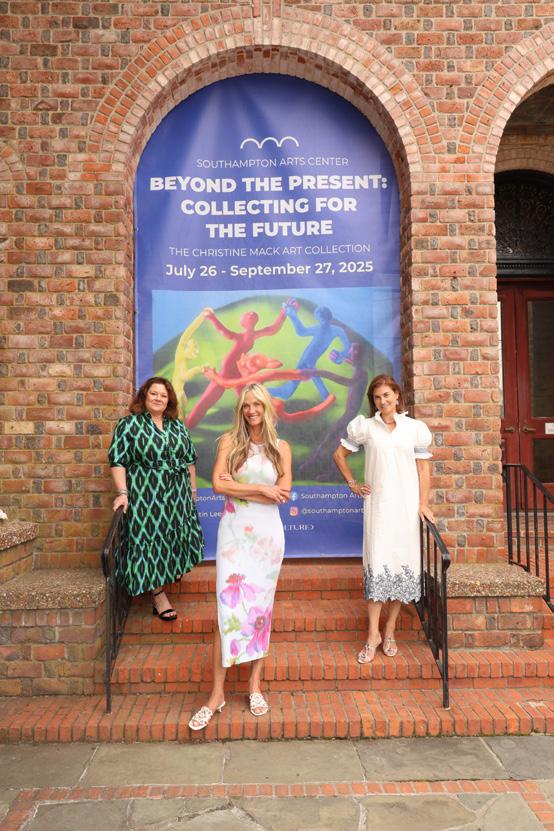


When Christine and her husband, Richard Mack, moved into their Manhattan townhouse, they got a little starter kit from Phyllis’s collection.
“We didn’t have art, and I think that generation never put stuff in storage.” The young couple got a Rauschenberg a Cindy Sherman and a Sol Lewitt; Christine felt like she got a base for her collection.
“She always had a very good eye with strong art, and she inspired me to be bold in terms of my collecting.” That was evident in the SAC exhibition this summer, when Mack’s huge Ana Benaroya painting was hung in the front gallery next to a Keith Haring. “That made me so happy because Ana is an incredible artist.”
Early life in Philippines; love for NYC
Mack was born in the Phillipines. Her Swedish mother worked at the Swedish embassy in Manila, and her American father had an international business that kept him constantly traveling. They divorced before Christine was born; her father moved back to the U.S. while she and her older sister and their mom stayed in Manila. When she was 7, they moved to Stockholm, and she and her sister had to adapt to a new culture and learn the Swedish language. “Every summer we visited my dad in New York, and from those visits I fell in love with the city and knew I wanted to live there someday.”
She started modeling at a young age, at first in Paris and Milan, but then realized her dream and made New York her base. She crossed the world for photo shoots, but after eight years of constant traveling, Mack realized she wanted something more lasting, and she’d never truly loved modeling anyway.

By then she’d saved enough to buy her first apartment, and decided to go back to school, enrolled at Parsons, and earned a degree in graphic design and advertising. “It felt like a natural step, combining my creativity with something I could build a future on.” She went on to work as a graphic designer and art director, eventually starting her own design firm.
She met her husband at age 23, and soon began a family. After her second son was both, she closed her office and transitioned to working from home. “Today, I have three amazing, hardworking sons whom I am extremely proud of.” Her youngest is now in college, leaving her free devote all her energy to building her foundation and pursuing her passion for art and philanthropy. Her background in graphic design is a boon for directing photo shoots with her artists and designing marketing materials for the foundation.
Space2Curate; pandemic-era education
Along with her friend and colleague, Natasha Schlesinger, Mack founded Space2Curate, a platform which organized exhibitions in public spaces in Los Angeles and Brooklyn. Many of their projects got shut down once Covid hit, and she decided to use the pause to deepen
her knowledge of the art world, completing eight certificate programs at Sotheby’s and Christie’s. She studied subjects like the global art market, curating exhibitions, writing about art, art history, and how to open a gallery –which she promised herself she will never do after taking the class!
“Looking back, the silver lining of that period gave me the chance to further educate myself and gain the tools I needed to pursue what I’m doing today,” Mack said.
Mack’s charitable activities extend beyond the art world, and, in fact, she was active in philanthropy long before she became a collector. Even in her younger years as a graphic designer, she did pro bono work, and later, after marriage, got involved with causes important to her, like children’s mental health and sports. “I was an advocate for partnership with drug-free kids. I taught workshops to educate parents about drug abuse. I was on the board of the Childhood Foundation, whose mission was to end sexual abuse towards children. So the art thing came much later for me.”
Later, as her children got older and she had more time to travel, her interest in art
blossomed. “I went to Art Basel for the first time in Miami and it just opened up my eyes realizing, oh, there is a world out there with so much art.”
Followed her gut
With her collecting, Mack says she followed her gut. She’s bought a lot of work by Black, LGBTQ and female artists. For a while she was into women artists painting themselves. “I found that the female gaze was very important to me.” Now she’s very interested in Nordic art, an area she feels is somewhat untapped.
“I feel like there’s so many opportunities, but it’s hard work. I have a studio manager who’s an artist. I’ve never thought that I needed an assistant, but now it’s like there’s so much going on,” she said. Mack is increasingly in demand for speaking engagements here and abroad.
Some of the artists she supports make it and some don’t, but she wants to encourage them in something that is so meaningful and maybe vital for them. “I’m doing what I love to do and that’s it,” she said. After a pause: “Maybe I’ll get an assistant.” P

BY CHRISTINE MONTANTI
New York–born author, historian, and mother of two, Rachel J. Lithgow is no stranger to reinvention as she powerfully demonstrates in her raw and hilarious memoir, My Year of Really Bad Dates. Her latest work details the unpredictable world of post-divorce dating with sharp wit and heartfelt vulnerability, chronicling her transformative journey from humbling beginnings marrying into a Hollywood family, and later divorcing a well-known actor, which ultimately catapults her into a new chapter of life, one defined by resilience and self-discovery.
The celebrated author who resides on Long Island, has dedicated her career, spanning over three decades, to leading prominent cultural institutions around the globe as a distinguished historian and museum executive. A gifted writer, Lithgow brings a deep passion for history, public education, and cultural preservation to every role she undertakes. Her essays and commentary have been widely published in both national and international outlets, including The New York Times, The Daily News, Time, The Advocate, The Jerusalem Post, The Huffington Post, The Los Angeles Times, and The Times of Israel, just to name a few.
Lithgow’s latest written body of work was inspired by a series of life-changing events that unfolded during her midlife. Following the loss of her father and the end of her marriage, the mother-of-two made the bold decision to step away from her successful career as a historian to focus on writing
full-time and to embrace the possibilities of beginning a new relationship.
The distinguished writer’s remarkable evolution isn’t just about swiping right or laughing through first-date disasters. It’s also shaped by a long marriage within a prominent Hollywood family. As the former daughter-in-law of legendary actor John Lithgow, the notable historian had to navigate challenges of maintaining a public identity while undergoing a deeply personal evolution. Her individual experience has been the foundation to sharing how women, especially those navigating midlife, can reclaim their voices and redefine what love, self-worth, and connection truly mean.
While the larger-than-life personality is currently hosting events across the country for her book launch, she also brings her signature honesty and humor to both local and national television, offering practical, safe, and emotionally intelligent dating advice rooted by her personal growth.
Reflecting on her experience recently at a pre-launch book signing, Lithgow shares, “Attending my first signing, well, bookplate signing, since my publish date is November 11th, was surreal. Being in Zibby’s Bookshop in Santa Monica, surrounded by beautiful books and iconic authors like Susan Orlean, was a dream. I knew it would be exciting, but I had no idea how magical the experience would be until I was there!”
Indisputably, Lithgow’s unique life experience provides a powerful perspective on how women especially, those navigating midlife can reclaim their voices and redefine what love, self-worth, and connection truly mean. Lithgow admits, “I’m overwhelmed by
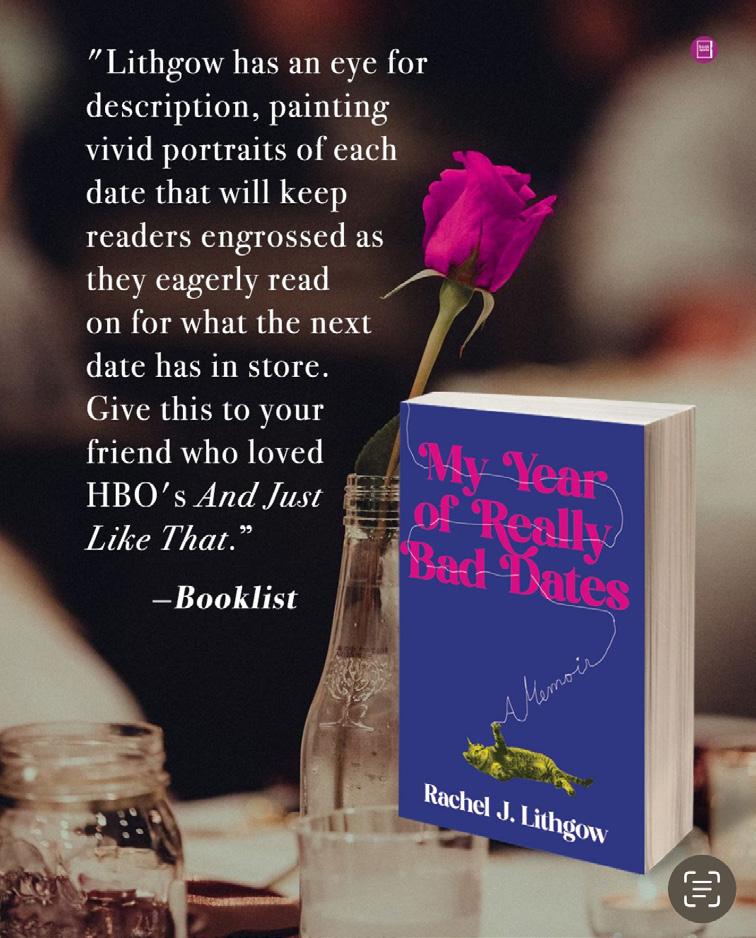
the response on the book so far. The reviews from Kirkus and Publishers Weekly were so positive and encouraging; I was stunned as a first-time author and the comments on NetGalley, from people who know nothing about me, are mind-blowing. They appreciate the humor but also recognize the deeper layers of pain and vulnerability that went into the work.”
One reader wrote: “This was such an enjoyable read. I think it will resonate with anyone, regardless of age or situation, while staying deeply relatable. Rachel teaches us some powerful lessons that are much easier said than done. I would recommend this book to anyone!” P
To Purchase My Year of Really Bad Dates: amazon.com/dp/B0DXD6FLJF?tag=kirkus20&linkCode=osi&th=1&psc=1 Instagrram- @iamrachellithgow racheljlithgow.com
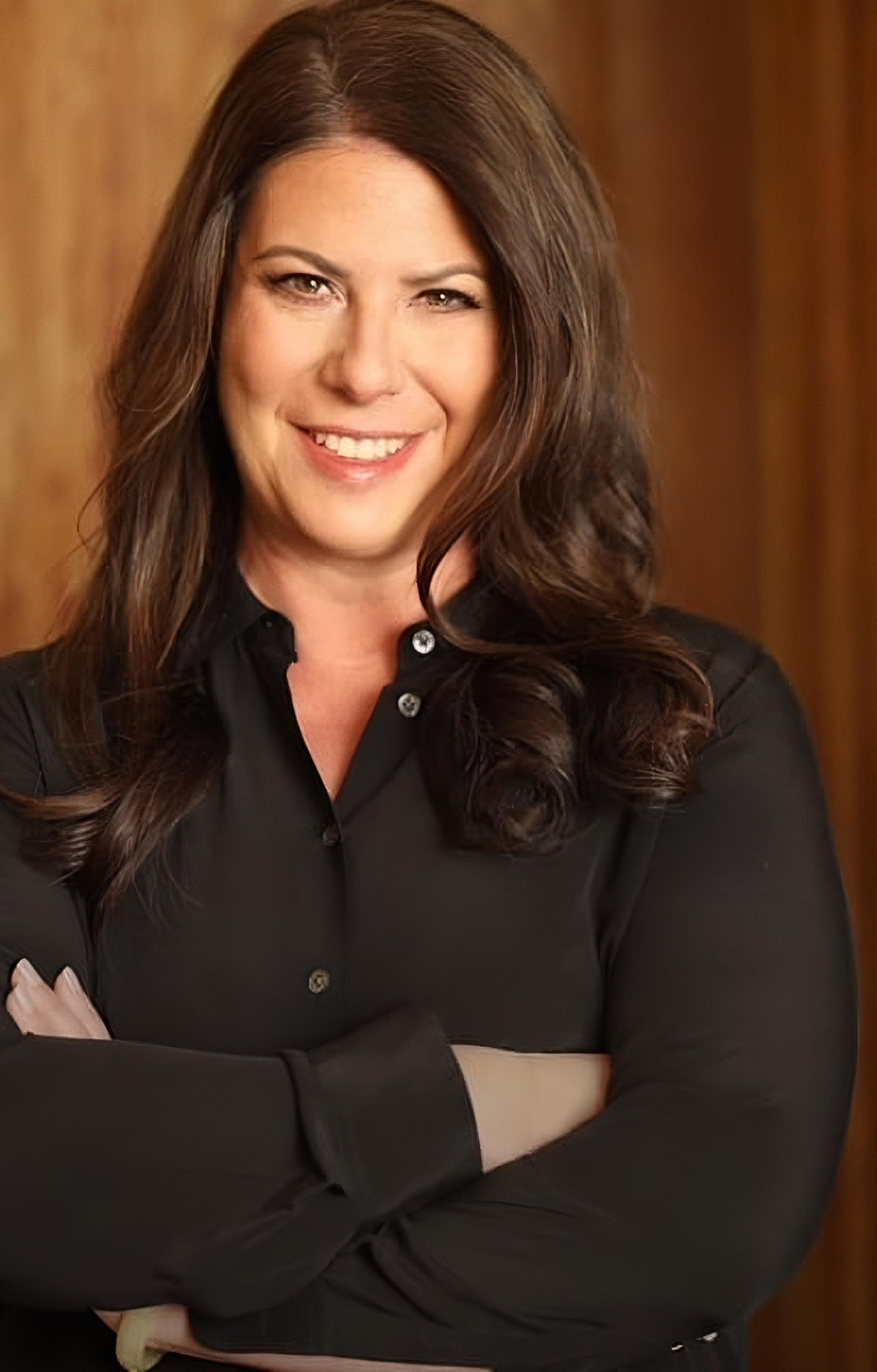
“ATTENDING MY FIRST SIGNING, WELL, BOOKPLATE SIGNING, SINCE MY PUBLISH DATE IS NOVEMBER 11TH, WAS SURREAL.”

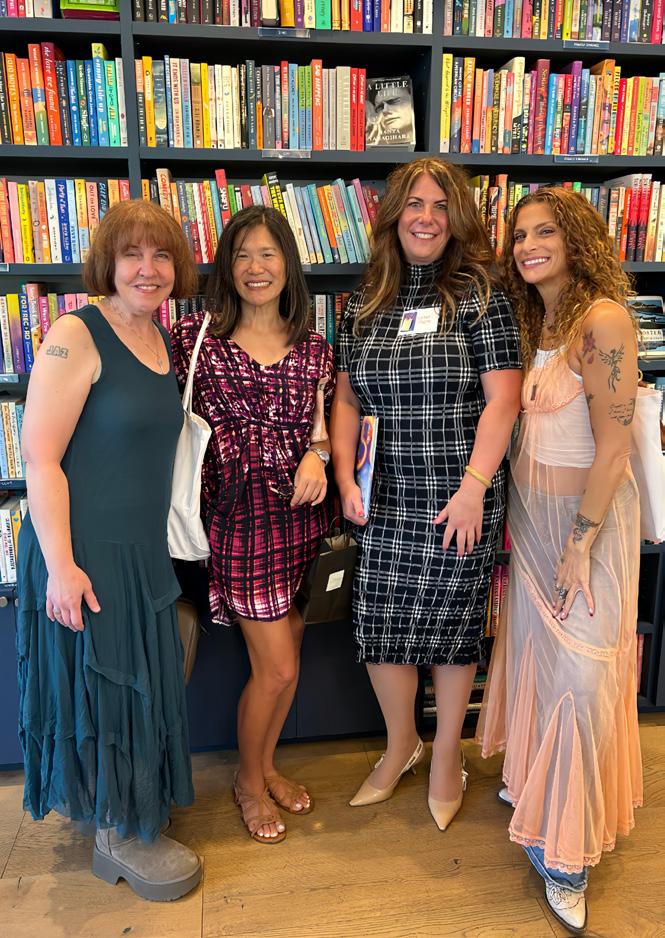

BY RODNEY SPARROW
A Cultural Entrepreneur Blends Style, Strategy & Influence
The spotlight cuts through the marbled hall of Surrogate’s Court at New York Fashion Week’s Style Across the Aisle, catching an unlikely runway star mid-stride. Instead of a measured walk, he drops into a full break-dance, spinning across the stage in slick black leather by Harlem designer Mel Maxi, a protégé of Dapper Dan. The crowd gasps, hands flying to mouths, as disbelief ripples down the front row. Candace Bushnell claps wildly, fashion founders lean forward, and applause fills the gilded room. From the mic, a voice cuts through the chaos: “You didn’t see that coming, did you?”
It’s Skye Ostreicher, the woman everyone simply calls Skye, and the architect of the night. For those who thought politics was too heavy, too boring, too divisive for the runway, Skye proved otherwise. The event, only in its second season, has become one of Fashion Week’s most surprising tickets. Its secret is Skye’s alchemy. Politics, it turns out, can be not just surprising but fun. And making politics fun, against all odds, is Skye’s signature.
Style Across the Aisle is her boldest experiment yet: a runway where leaders model designs by creators from their own neighborhoods. “These are elected officials,” Skye teased from the mic. “They’re supposed to be role models. Tonight, they’re showing real model behavior.” The premise is deceptively simple: pair a public figure with a local designer, and let style tell the story. But the results have been electric.
Skye likes to say she practices “human chemistry.” She studied actual chemistry at the University of Miami, planning on medical school, until a talk by university president Donna Shalala, joined by President Bill Clinton, cracked the door to politics. Shalala’s story about serving as designated survivor during a State of the Union revealed the hidden stakes of leadership. Skye was hooked not by policy,
but by people. She accelerated her studies, graduated early, and earned a master’s degree in public health and public policy.
Her career, however, was never a straight line. In 2020 she joined Mike Bloomberg’s presidential campaign, only to watch it collapse days before COVID shut New York down. “I was unemployed and locked inside,” she recalls. Undaunted, she began calling everyone she knew, hosting raw Zoom conversations that grew into her digital interview series Political Personalities with Skye. A media company soon hired her to lead digital coverage, but in 2023 it cut the division. Instead of retreating, Skye doubled down. With strategist Carolyn Vaeth, she turned a sketch of an idea into Style Across the Aisle and founded In The Room Media, her “media-first advocacy” shop.
“People didn’t know what to make of me,” she says. “I never used my press pass for gotcha questions. I used it to elevate the positive.” That instinct to see the person rather than the position is what now defines her empire.
For Skye, fashion isn’t about fabric alone; it’s a Trojan horse for empathy. Style Across the Aisle is spectacle with substance, showing

how couture can collapse walls. One minute a conservative lawmaker and a progressive council member are passing each other on the catwalk. The next minute, they are laughing together in shared fabric, their differences softened by style “Clothes disarm people,” Skye explains. “They remind us of what we share, not just what sets us apart.”
It is a strategy she applies everywhere. Her interviews have put officials in garbage trucks at 4 a.m., Cessnas above Manhattan, and tattoo chairs beside her. Each scenario strips away talking points and makes room for real connection. To Skye, it is all one project: changing the chemistry of power by changing the setting.
Philanthropy is woven into Style Across the Aisle, each year spotlighting a nonprofit partner whose mission expands the runway beyond fashion. This season, the spotlight fell on Witness to Mass Incarceration’s Art of Tailoring program, which works with formerly incarcerated and homeless youth. The program’s three tracks – entrepreneurial training, essential tailoring skills, and smallbusiness expansion – give participants practical expertise and a platform for reinvention. Their creations, modeled by Queens leaders, carried not just crisp lines and bold cuts but also a message: fashion can be a second chance, sewn with resilience and ambition.
With two master’s degrees, a Fashion Week franchise, and a Rolodex of New York’s cultural power players, Skye Ostreicher is only beginning. Political Personalities will keep peeling back facades. In The Room will keep building connections. And Style Across the Aisle will keep strutting forward, proving that fashion and humanity share more than a spotlight: they share the power to transform.
New York has never lacked for parties or politics. Skye Ostreicher is the first to make them indistinguishable, and to leave the city wondering which room or runway she will unlock next. P
Instagram: @thepoliticalpersonality
For Prince Hakim Bell (known professionally as DJ Prince Hakim) music is more than a career. It’s in his DNA. The son of Robert “Kool” Bell, co-founder and bassist of Kool & The Gang, and the nephew of the late Ronald Bell, the group’s co-founder, songwriter, and producer, Hakim grew up surrounded by platinum records, sold-out tours, and the hum of studio sessions. But while his family’s legacy could have been a heavy shadow, Hakim has turned it into a source of inspiration, one he’s determined to honor while carving his own path as a performer, DJ, and philanthropist.
“I’m here for music and to entertain people, uplift people,” Hakim said. “People ask what I do, and I tell them – I lift spirits and make people feel good.”
That mission has carried him to a busy and rewarding 2025. Hakim kicked off the year spinning at Good Morning America’s Super Bowl Party – his second time on the show – and went on to close out the Montclair Jazz Festival in New Jersey before a crowd of 20,000. This fall, he’s returning to the stage at the Only Make Believe Gala in New York City, where he’ll once again DJ the Broadway charity’s afterparty.
“This is my third year with them,” he said. “I guess they like me – they keep calling me back!”
This year’s gala honors Anna Wintour, with John Oliver hosting, and Hakim plans to keep the energy high with a set mixing Broadway favorites and timeless hits. “I’ll play some Madonna, Earth, Wind & Fire, Abba, Michael Jackson, Donna Summer, the Temptations,” he said. “They’ve all been on Broadway, so it ties right in.”
When it comes to performing, Hakim’s instincts are finely tuned. “Every event requires
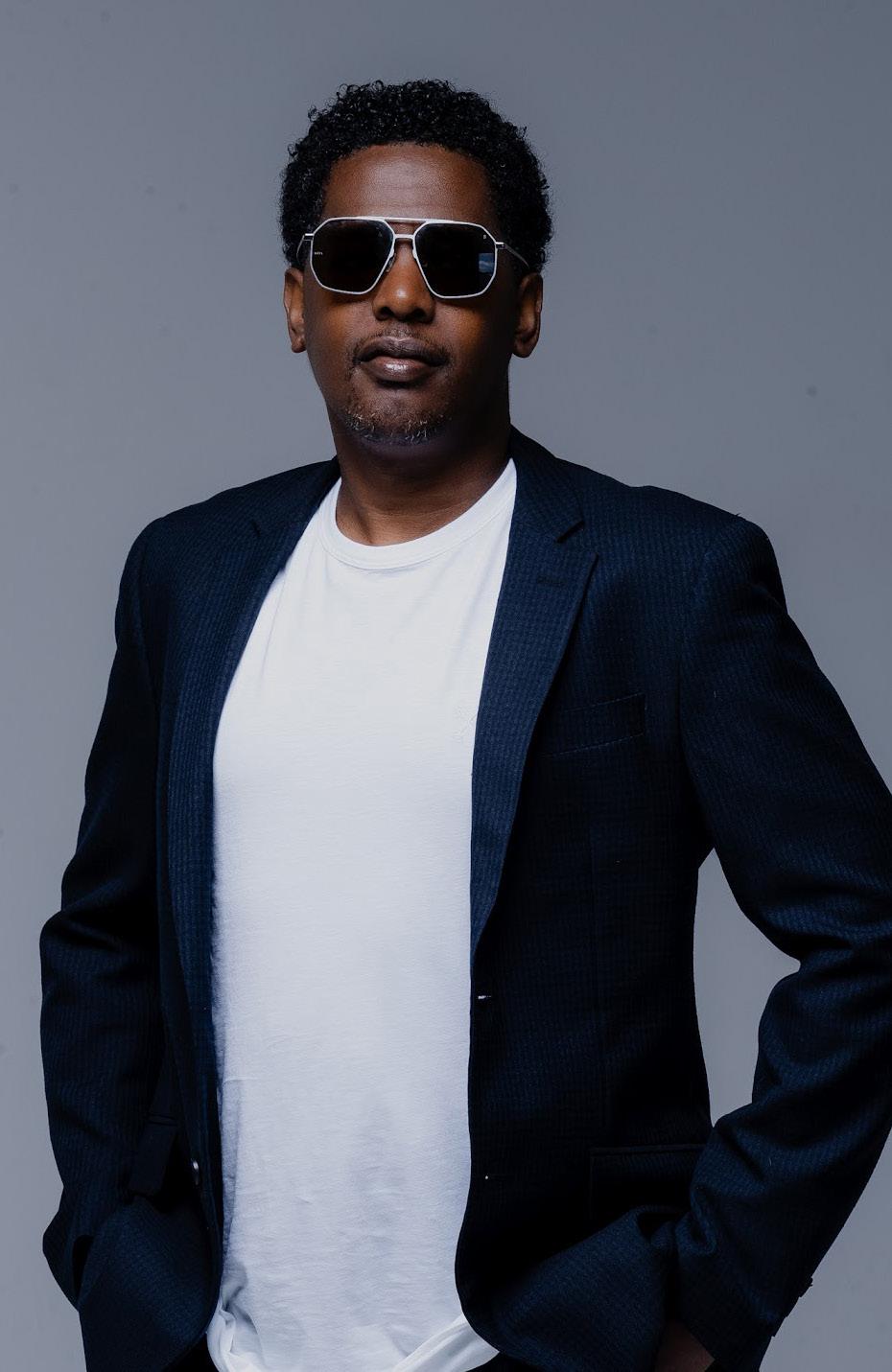
Carrying a Legacy While Crafting His Own Sound
BY LEXI WOLF
a different vibe,” he said. “I go in with an idea, but I’m always ready to switch it up in the moment. Reading the crowd is everything.”
That adaptability has made him a favorite at corporate and celebrity events alike –from galas and festivals to high-profile afterparties, including the Rock and Roll Hall of Fame induction for Kool & The Gang, where he DJed the afterparty hosted by Dave Chappelle.
In addition to live performances, Hakim continues to release new music that reflects both his family’s funk roots and his own modern sensibilities. His recent singles “She Bad” and “Flow” earned strong traction on SiriusXM, amassing over 10,000 Shazams. His newest release, “Crush” featuring Canadian singer RX, marks his first foray into R&B-pop fusion. “It’s got that smooth R&B vibe with a pop touch,” he said. “I love collaborating and experimenting with sounds that make people move.”
Hakim also co-produced the remix of Kool & The Gang’s classic hit “Fresh” for the Cool Summer EP, a Universal Records project celebrating the group’s music ahead of their upcoming greatest hits album, to be released in honor of his father’s 75th birthday. “When Universal called and asked me to remix one of my dad’s songs, I was honored,” he said. “We really remixed the heck out of it, and it’s doing great on Spotify.”
As an independent artist, Hakim acknowledges the challenges of the digital era. “It’s easier now because you can be your own label,” he explains. “But there’s so much traffic to cut through. Unless you get lucky on TikTok, it takes serious investment to get a song moving.”
Still, his passion for music keeps him creating. “I get inspired just listening to other artists or even a drum pattern,” he said. “It makes me want to get in the studio and make something fresh.”
His dedication extends beyond music to philanthropy. Hakim helps lead the Kool Kids
Foundation, founded by his late mother, to keep music alive in schools. Since relaunching in 2018, the organization has provided more than $300,000 worth of instruments and support to school programs in New Jersey, with help from celebrity supporters like Chris Tucker, Ja Rule, and Kathy Sledge. “Music is usually the first program to get cut,” Hakim said. “But seeing those kids’ faces light up when they get their instruments – that’s how we give back.”
Upcoming highlights include the New York City Marathon afterparty in November – “I don’t know how these people run 26 miles and≈still want to party,” he joked.
Despite his packed calendar, Hakim remains focused on self-improvement. “I’m just working on being a better person than I was yesterday,” he said. “I’m tapping into my
spiritual side, eating healthy, going to the gym – because health is wealth.”
For someone who’s been immersed in music his entire life, Hakim remains energized by the challenge of staying current while honoring his roots. “You really have to know music,” he said. “I’ve been listening to it my whole life, so it’s programmed in me. The thing I have to do is keep up with what’s new – without losing what makes me me.”
It’s that balance – reverence for legacy, drive for innovation – that keeps DJ Prince Hakim’s career pulsing forward. Whether he’s remixing a classic, spinning at a starstudded gala, or dropping the next viral track, one thing is certain: he’s keeping the beat alive and the dance floor full. P
djprincehakim.com

In a world obsessed with headlines, Joseph Hernandez builds history. For more than two decades, he has moved between laboratories, trading floors, and boardrooms with a singular purpose – to construct the next generation of American enterprise. A scientist turned financier, and a builder turned civic leader, Hernandez bridges discovery and deployment, capital and conscience, innovation and impact.
Born in Cuba and raised in Miami after his family fled communism, Hernandez grew up watching his father wash dishes and his mother clean homes to give their children a better life. “My father loved this country with every breath,” he recalls. “He believed America was the only place on Earth where a man could start with nothing and still build everything.”
That belief became his foundation.
“The American Dream isn’t an idea to me – it’s an inheritance,” he says. “This country gave my family freedom, and I’ve spent my career trying to build things worthy of that freedom.”
New York State Comptroller
Hernandez has thrown his hat into the ring to become the Republican nominee for New York State comptroller in the 2026 election.
“The State Comptroller must be a strong, independent fiscal champion who stands up for taxpayers and restores confidence in New York’s finances,” said Hernandez. “I’m a business builder, not a career politician, and I have a real plan to transform the Office of State Comptroller and use it to provide tax relief for overburdened New York families, build the state’s innovation economy and manufacturing base, and create high-paying new jobs.”
As State Comptroller, Joseph will modernize the office to protect taxpayers, strengthen the economy, and rein in wasteful spending, especially in troubled public authorities like the MTA. He will restore fiscal responsibility by using the Comptroller’s constitutional contract-review
BY RODNEY SPARROW
powers and deploying AI tools to detect fraud and irregularities in real time. He will enforce the State Property Tax Cap to keep taxes down and improve investment performance to deliver real relief to homeowners. Joseph also plans to launch an AI and Technology Investment Fund within the pension system to spur innovation, support emerging industries, and create high-paying jobs. Finally, he will bring urgently needed transparency and accountability to the debt-burdened MTA, using the office’s oversight authority to curb waste and demand fiscal discipline.
This bid comes after Joseph collected more than 15,000 petition signatures to qualify as an independent candidate in the Mayoral election. “My father was held prisoner by Fidel Castro because of his political beliefs,” Hernandez said. “When a self-avowed communist won the Democrat primary for mayor, I felt an obligation to step forward to defend freedom and the American Dream. As State Comptroller, I will use the extraordinary authority of the
office to protect taxpayers, return fiscal responsibility, and expand opportunity for all New Yorkers.”
He has met with Chairman Cox and many County Chairs in the Republican Party, and he has brought top fundraiser Ore Jacinto on board.
Hernandez began his career in biotechnology, helping shape diagnostic and therapeutic innovations that transformed modern medicine. He played a role in the early development of microarray technology, which revolutionized genetic testing and personalized medicine; the creation of the HPV diagnostic test that became the global standard for cervical cancer prevention; and a molecular test for thyroid cancer that spared countless patients from unnecessary surgery. Later, he worked on vaccine platforms for COVID-19 and influenza designed to accelerate rapidresponse immunization worldwide.
These were not abstract projects – they were life-saving technologies brought from lab bench to marketplace through Hernandez’s ability to link scientific rigor with commercial execution.
He earned a B.S. in Neuroscience, an M.S.

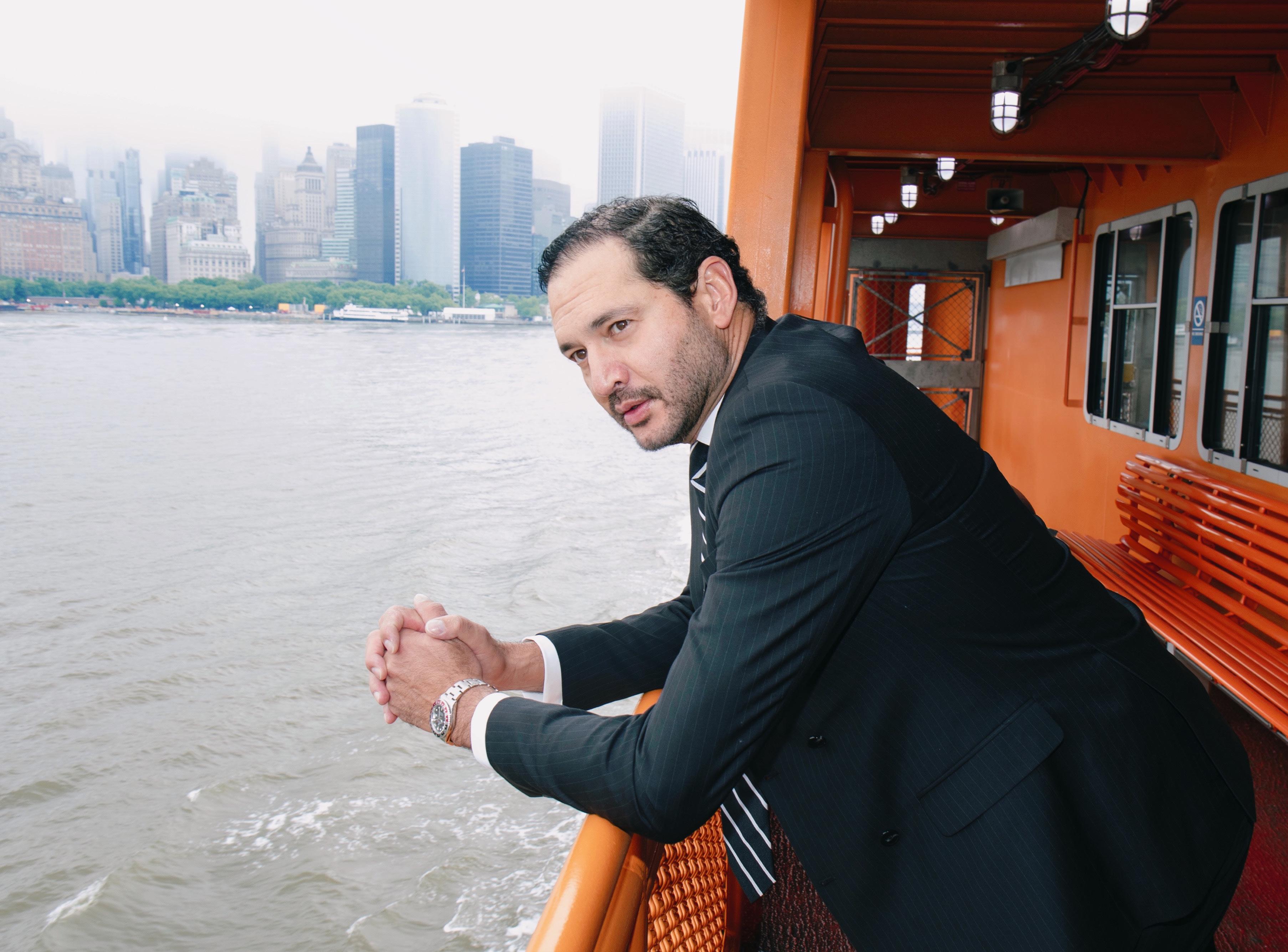
in Molecular Genetics and Microbiology, and an M.B.A. in Finance and Entrepreneurship from the University of Florida. He later completed an M.S. in Epidemiology at Yale University and is pursuing an M.S. in Global Healthcare Leadership at the University of Oxford. This multidisciplinary training shaped his unique approach to connecting science and strategy.
After more than a decade in biotechnology, Hernandez turned to finance with the same mission: to build infrastructure for innovation. As the architect behind multiple Blue Water SPACs, he redefined how growth companies access capital. Where others saw speculative vehicles, he saw engines of creation – tools to identify undervalued assets and align
them with mission-driven investors.
Each SPAC under the Blue Water banner has targ eted sectors defining the future: healthcare, artificial intelligence, and clean energy. His upcoming fourth SPAC continues that legacy, focusing on firms with strong fundamentals and scalable potential.
“For me, finance is a civic act,” he explains. “Capital isn’t just money – it’s a promise that we can build something together that lasts.”
Hernandez’s latest project, the Blue Water Horizon AI ETF, reflects his belief that artificial intelligence is not a bubble but a new industrial revolution – one as transformative as electricity or the internet.
The fund focuses on companies powering real AI infrastructure: semiconductors, data centers, robotics, and applied intelligence reshaping logistics, healthcare, and defense.
His goal is inclusion. “Technology should not be the privilege of the few – it should be the opportunity of the many,” he says. “The AI revolution will reshape everything from medicine to manufacturing, and every American deserves a stake in that future.”
Through this ETF, Hernandez aims to democratize ownership of the technologies defining the next economy – bridging Wall Street’s capital and Main Street’s aspirations. P
hernandezfornyc.com
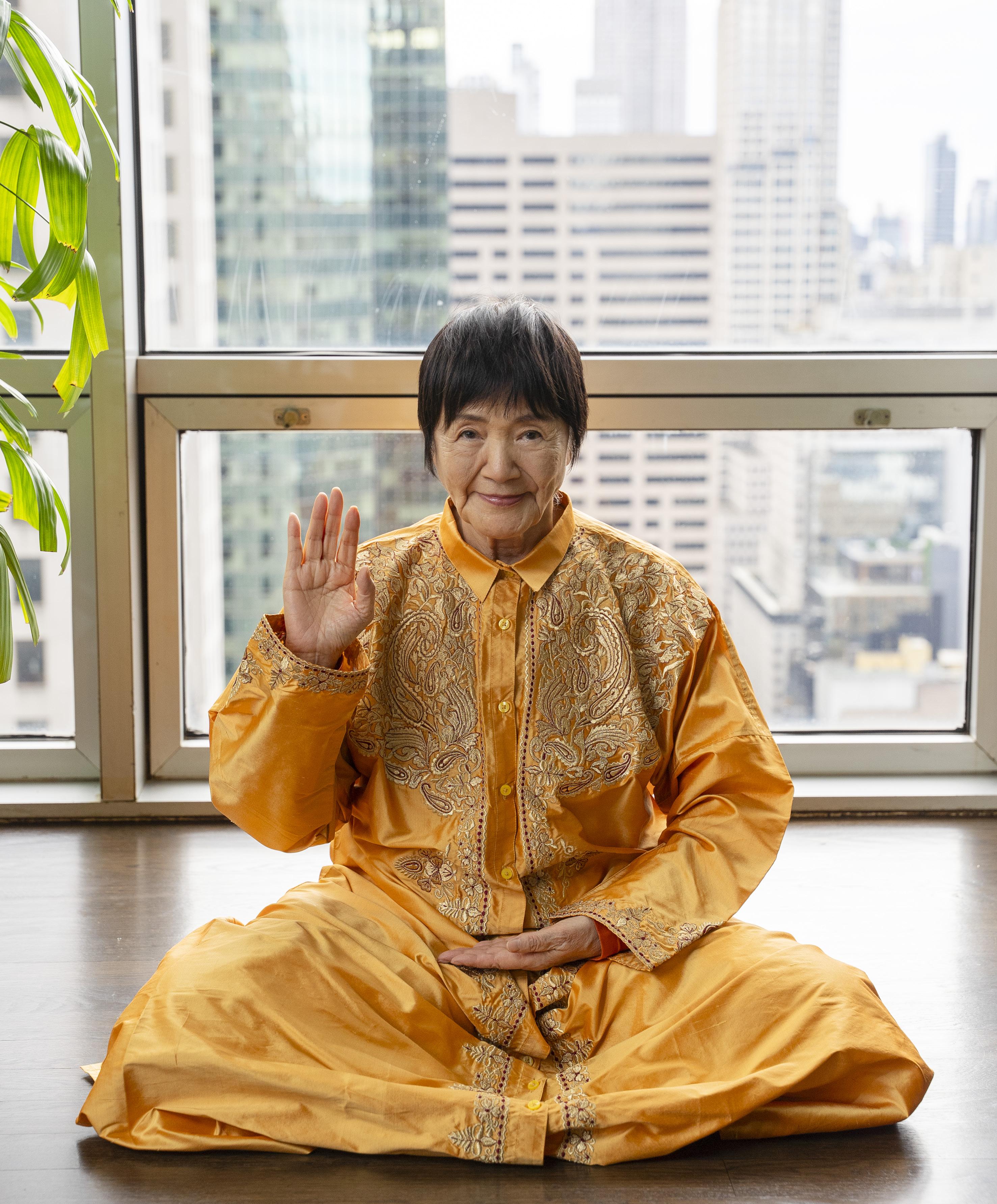
BY CHRISTOPHER A. PAPE
When Yogmata Keiko Aikawa stepped quietly into New York City this November, she arrived not as a celebrity, politician or cultural ambassador although she is, in her way, all three. She came as a healer. A teacher. A rare spiritual figure whose life has unfolded far from the arc of typical public personas.
Yogmata, the first female Siddha Master and among the very few living Himalayan Great Saints, completed a weeklong visit to the city that blended diplomacy, cultural exchange, and moments of contemplative peace in settings as varied as the Japanese American Association, the French Consulate, and the United Nations.
For decades, Yogmata has guided followers around the world through meditation and the Himalayan yogic traditions she mastered after achieving Samadhi, the absolute state of consciousness described in ancient yogic texts as the pinnacle of spiritual attainment. Her journey began in her native Yamanashi, Japan, where she practiced yoga and meditation as a teenager before becoming a respected instructor. Her life shifted dramatically at 39, when she met the revered master Pilot Babaji and accepted his invitation to train in the Himalayas. The rigorous path ultimately led her to the public demonstrations of Samadhi she performed 18 times in India, events recognized as rare and significant in yogic history.
Yet New York offers a different stage, one where ancient practice meets modern urgency, and where Yogmata’s message of presence and peace resonates amid the velocity of the city.
Yogmata’s recent New York City schedule reflected balance between intimate gatherings and public spiritual leadership. She arrived and began her visit with a workshop at the Japanese American Association, a nod to her deep roots in Japan’s cultural and spiritual communities. Over the next several days she met with
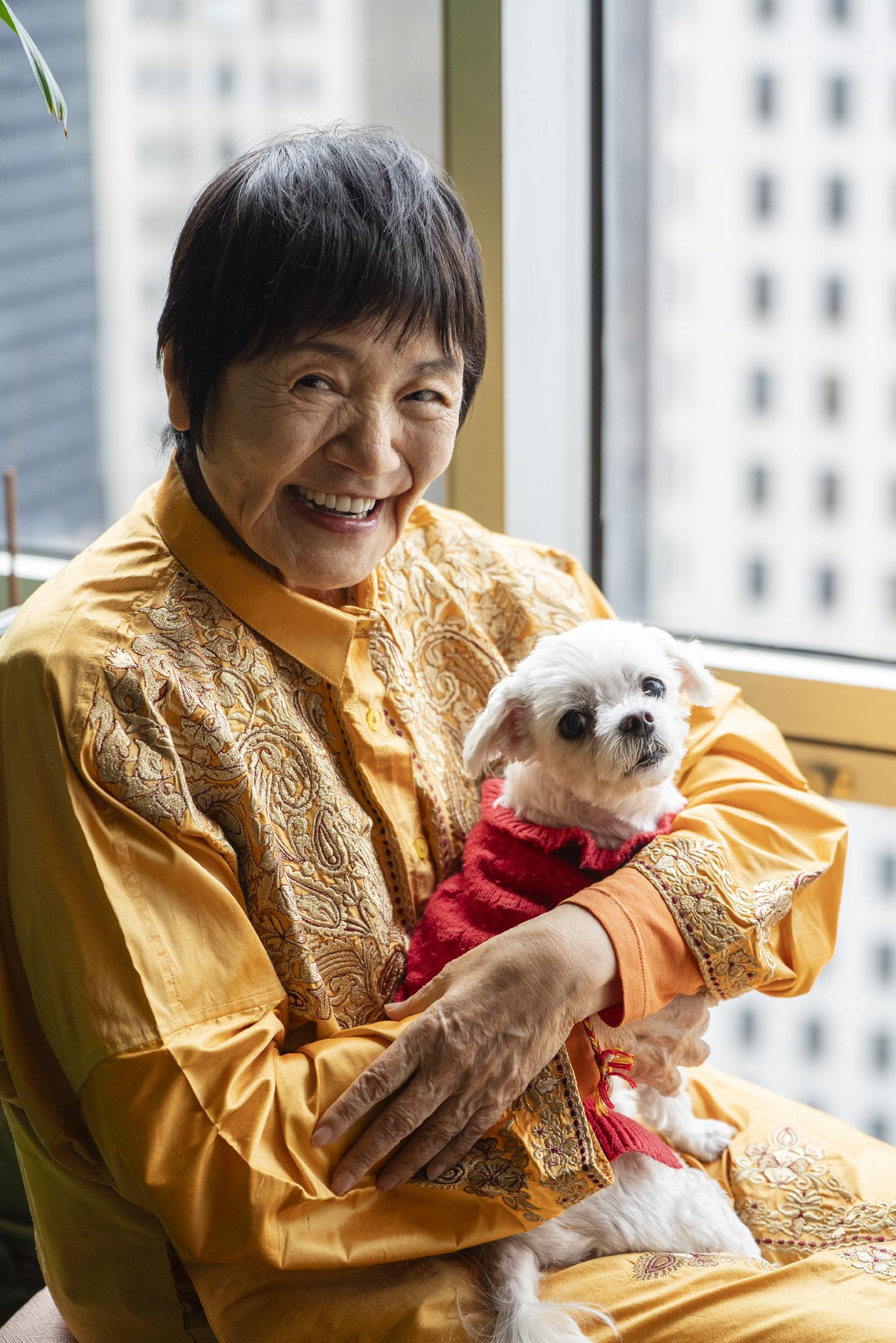
supporters, students, and leaders from various cultural and philanthropic organizations across the city.
She attended an event at the French Consulate General, an environment that underscores how her work transcends geographic and political boundaries. Diplomats, cultural leaders and global
advocates often seek her perspective, drawn to her capacity to communicate powerful ideas with disarming calm.
The visit then reached a deeply personal moment: the private opening celebration of her first New York meditation dojo, a studio created to serve as a sanctuary for her followers in the city. While the location is
kept confidential to ensure privacy and protection for practitioners, a select group of guests was invited to experience the space in its inaugural unveiling. For Yogmata, who has spent decades traveling to share the 5000 year old Himalayan secret teachings, the creation of a Manhattan home for her practice marks a meaningful expansion of her presence in the West.
The centerpiece of her trip came when Yogmata offered an eight-minute “Moment of Silence for Global Peace” at the United Nations Women Empowerment & Development Organization (WEDO) Summit. Held in the UN Headquarters, her meditation opened the day’s program, gathering delegates, dignitaries and leaders into shared quiet.
It was far from her first time at the United Nations, Yogmata previously spoke at International Yoga Day at the invitation of the Indian government and delivered keynote lectures and meditations for peace during UN events in 2016 and 2017. Each return however underscores the growing role
“WITH THE POSSIBILITY OF PEACE AS AN INTERIOR ACT. WITH A TEACHER WHOSE GLOBAL SIGNIFICANCE IS MATCHED ONLY BY HER QUIET COMPOSURE.”
contemplative practitioners hold in global moral conversations. Yogmata’s message, rooted in awakening inner stability to inspire external harmony, stands in contrast to the urgency that so often defines the international agenda. Her contribution is one of fundamental human recalibration.
Though she now teaches around the world, Yogmata’s foundation remains in Japan, where her books, over a million sold to date, continue to guide new generations toward meditation and mindful living. Her training in the Himalayas, her mastery of Samadhi, and her decades of public spiritual work have made her a rare figure connecting Japanese cultural traditions with Himalayan yogic lineage.
Throughout her recent New York visit, she carried that lineage lightly but unmistakably. Her hosts included both Japanese cultural institutions and international organizations. Her engagements ranged from intimate conversation to large group instruction. Everywhere, the throughline was presence, a way of being that she teaches not as an abstraction but as a daily, lived practice.
For a city accustomed to a constant influx of global leaders, artists, and influencers, Yogmata’s visit was something different: an encounter not with celebrity, but with stillness. With the possibility of peace as an interior act. With a teacher whose global significance is matched only by her quiet composure.
As New York City turns again to the noise and rush of daily life, Yogmata leaves behind a different cadence, one that invites the city, if only for a moment, to breathe again. P
For more information, please visit: japanese-meditation.com


BY JEREMY MURPHY
In the world of facial plastic surgery, trends shift with the seasons – and sometimes, with the celebrity headlines. But for Dr. Raj Dedhia, a double board-certified facial plastic surgeon, the work is never about chasing fads. It’s about balance, precision, and making sure the person in the mirror still feels like you.
Right now, three procedures dominate his schedule. At the top is upper eyelid rejuvenation – technically, an upper blepharoplasty, often paired with a brow lift. “It’s about a 45-minute procedure, minimal downtime, and pretty remarkable and immediate results. It gets rid of that hooding, makes you look less tired,” he explains. “It’s very cost-effective because it’s done in the office, and a lot of patients in their thirties and forties are asking for it.”
Second is fat grafting, which has gained traction as a natural alternative to fillers for volumization. “People like the idea of a natural substance that integrates with the body more naturally, and ages with the body in a smoother fashion,” Dedhia says. Fat is harvested from areas like the lower abdomen or thighs, then refined depending on where it’s going – macro-fat for volume in the cheeks, micro-fat for delicate under-eye areas, and nano fat, rich in stem cells and growth factors, to revitalize tissues.
The third is the preservation of deep plane facelift, a technique now considered the gold standard. “It just naturally lifts what has fallen

and it doesn’t look pulled. It makes people look like a younger version of themselves rather than a transformed version,” Dedhia says. “Patients sometimes get scared by the word ‘deep.’ In reality,it’s a layer that is just millimeters deeper and surrounds the fat pockets and muscles of the face which have descended/fallen with age.”
Lately, celebrity faces have brought this technique into the spotlight. While Dedhia won’t speculate on individual procedures, he notes a pattern. “I think deep plane facelift is creating better results. And I think it’s this undetectable era where everyone’s speculating what they’ve had done, but the reason is they’ve had a comprehensive treatment – brows, eyelids, volume, skin texture, face and neck tightening – all addressed at once.” He likens it to a home renovation: “If you just redo the counters but leave the cabinets from the ’70s, people notice. Same with the face – you want it to look uniform.”
Comprehensive work means more planning, more downtime, and more trust between surgeon and patient. “Good work is going to have some healing downtime. You’re going to look like you had surgery initially,” Dedhia says. “For extensive work, especially facelift surgery, I usually tell people two to three weeks before you feel comfortable going out casually, and for a big event, maybe two to three months.
Beyond the scalpel, Dedhia integrates fractional CO₂ laser resurfacing into many facial surgeries to improve skin texture. “Why stage the pain and recovery when it’s a ten-minute addition during surgery?” he asks. He’s quick to point out that the “best” provider for lasers isn’t always necessarily an MD, but the one with the most skill and experience.
There’s also a psychological dimension to the work. “Our job is to make sure we do no harm,” Dedhia says. “If the goal is to make someone

else happy, fix unhappiness, or treat something more emotional, we need to explore that. Some patients have been following surgeons for years and know exactly what they want. Others just know they need a refresh. Those cases can take more time before we get to what we’re trying to address.”
It’s a responsibility he takes seriously. “There’s no room for error in the face and neck,” he says. “I sometimes overly discuss the anatomy, the healing process, exactly what to expect, because I don’t want anyone coming in taking this lighter than it should be. Preparing the patient for the journey –making sure they take it as seriously as I do – that’s how we get the best outcomes.”
Looking ahead, Dedhia sees two exciting shifts. First, patients embracing goal alignment –
trusting comprehensive treatment plans that deliver natural, uniform results. Second, the potential of regenerative medicine. “We’ve already seen platelet-rich plasma used for years. Now we’re seeing exosomes, which are stem-cell derived messengers with growth factors. We don’t know everything yet, but there’s growing research. I think regenerative medicine has been a buzzword for a while, but we’re finally coming around to some real great treatments.”
And when it comes to the ultimate compliment for his work? It’s not about someone guessing a patient’s surgeon. “It’s when people look at you and think, ‘Have you been on vacation? Did you change your makeup?’” Dedhia says with a smile. “That’s the best compliment of all.” P rdface.com
BY JEREMY MURPHY
In a city where cosmetic enhancement has become as common as a new haircut, Dr. Asif Pirani stands out not for radical transformations, but for his steadfast dedication to subtlety. At his Toronto Plastic Surgery Center, he takes a boutique, individualized approach that’s refreshingly devoid of flash. “All we do is cosmetics,” he says matter-of-factly. “We have a medical spa that does lasers and facials, and on my side, we handle injectables and surgical treatments. I do everything from head to toe – except Brazilian butt lifts.”
For years, Pirani’s reputation has been built on meticulous breast and body work, but the tide is shifting. “I’m kind of bored of the breast and body stuff,” he admits with a wry laugh. “Facelifts are having their heyday right now. Celebrities are open about it, and people are realizing these procedures can look natural. That’s where my interest is growing.”
A surprising trend has emerged in recent years, one that Pirani didn’t expect to dominate his practice: patients seeking surgery after dramatic
weight loss from drugs like Ozempic. “They come in with loose skin everywhere,” he explains. “They thought they were getting healthier and would look better, but they didn’t realize the skin doesn’t always bounce back. We’re seeing everything from face and neck lifts to tummy tucks and even labial rejuvenation because of deflation from weight loss. It’s been eye-opening.”
These patients, he adds, often arrive seeking restoration rather than transformation. “It’s about helping them feel like themselves again – just more comfortable in their own skin.”
For Pirani, plastic surgery has always been as much psychological as physical. “People don’t need these surgeries to live,” he says. “They do it so they can stand taller in their own skin. Understanding their motivation is crucial. If their expectations don’t align with what’s achievable, it’s a recipe for disaster.” He’s quick to turn away patients whose goals are driven by external pressure or who show signs of body dysmorphia. “I’ll never operate on someone who’s doing it because their spouse told them to. The motivation has to come from within.”
This psychological sensitivity may stem from his unconventional entry into the field. “I was planning to be a cardiologist,” he recalls. “Then during a rotation, a plastic surgeon said, ‘You have a knack for this.’ I laughed it off – but the more I did it, the more I realized how right they were. It didn’t feel like a chore. I enjoyed every minute of it.”
In the era of filters, influencers, and public confessions, Pirani has watched the stigma around cosmetic surgery dissolve. “Although I hate saying it, it’s the Kardashians,” he concedes. “When Kylie came out talking about her breast augmentation, I made a video explaining what she meant by ‘half under the muscle.’ It’s called dual-plane augmentation, and I’ve been doing it for 15 years. That video hit over a million views. Suddenly, we were getting calls from all over the world.”
It’s a perfect example of how celebrity culture drives trends more powerfully than medical expertise. “You do all this training, publish, educate – but all it takes is a Kardashian to mention it and the phones light up,” he says, amused but resigned.
“BEAUTY ISN’T ABOUT CHANGING WHO YOU ARE. IT’S ABOUT REFINING WHAT’S ALREADY THERE.”

While his clientele remains overwhelmingly female, Pirani notes that men are slowly but steadily entering the fold. “It used to be 98 percent women. Now it’s closer to 95,” he says. “And it’s mostly older men – high-level executives – who feel pressure to look youthful. They may not say it out loud, but they’re feeling it.”
The cultural shift toward openness has helped. “Plastic surgery used to be something you hid. Now it’s discussed openly at dinner parties. People don’t whisper about their fillers or lifts anymore – they trade surgeon recommendations.”
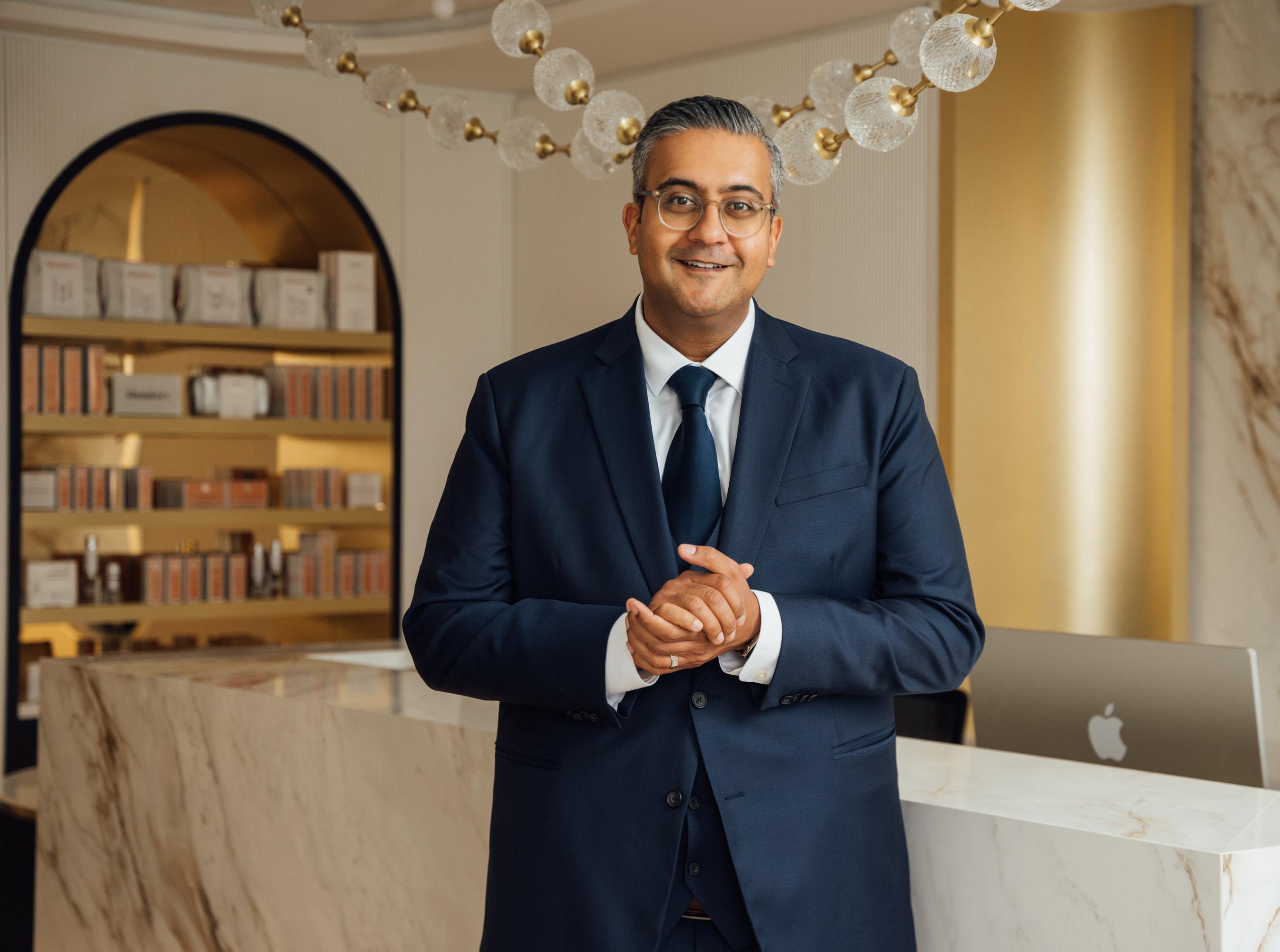
If there’s a unifying thread to Pirani’s philosophy, it’s restraint. “The trend now is less is more,” he says. “People are dissolving filler and coming back to a more natural look. I’ve always believed in respecting anatomy – enhancing it, not deforming it. For a while, surgery became a status symbol – big lips, exaggerated proportions. It was like the Louis Vuitton handbag of beauty. But the pendulum’s swinging back. Now it’s about confidence, not display.”
At The Toronto Plastic Surgery Center, that ethos manifests in everything from the scheduling – patients are never doublebooked – to the detailed consultations where Pirani studies each face and body like an artist approaching a canvas. “Every patient is
unique,” he emphasizes. “There’s no cookiecutter formula for beauty.”
Pirani’s curiosity extends beyond scalpels and sutures. “I’m really excited about exosomes and what we call secretomes –looking at cellular components from your own body that can be amplified and reinjected to stimulate collagen and elastin,” he says. “Right now, it’s early, even risky – we don’t fully understand what we’re injecting. But once we isolate the factors that promote healthy regeneration without triggering harmful cells, it’ll revolutionize anti-aging.”
In the end, Pirani’s approach feels almost old-fashioned in its restraint. “When I trained, plastic surgery was supposed to be invisible,” he
reflects. “You made people look better without anyone knowing why. For a while, people flaunted their surgery as proof of wealth. But now, thankfully, it’s coming back to where it belongs – about feeling good, not showing off.”
That quiet confidence defines both the surgeon and his practice. “Beauty isn’t about changing who you are,” he says. “It’s about refining what’s already there.”
At The Toronto Plastic Surgery Center, that philosophy is more than branding –it’s the foundation of every procedure, every consultation, every result that lets a patient stand just a little taller in their own skin. P
drpirani.com

In recent years, there has been a significant shift in cosmetic surgery; more men are seeking cosmetic procedures to enhance their appearance, boost their confidence, and stay competitive both socially and professionally. What was once a largely femaledriven industry is now seeing a steady rise in male patients who
BY CHRISTINE MONTANTI
are no longer hesitant to take charge of how they age. From eyelid surgery to neck lifts and facial rejuvenation, men are embracing the benefits of cosmetic plastic surgery with a new level of openness and intention. To explore this growing trend, we sat down with Dr. Robert Schwarcz, one of the nation’s leading oculofacial and plastic reconstructive surgeons, to get his insights on why more men are turning to the
operating room and what they’re looking for when they get there.
Dr. Robert Schwarcz is a dual boardcertified oculofacial plastic and reconstructive surgeon, widely regarded as a leader in the field of facial aging and aesthetic surgery. Renowned for his ability to achieve natural-looking results with exceptional skill and precision, He is frequently sought after for his expertise in procedures that deliver subtle, refined rejuvenation, enhancing the face without obvious signs of surgical work. With practices located in both Manhattan and Scarsdale, New York, he has built a reputation for excellence in both cosmetic and functional facial surgery.
Dr. Schwarcz, are you seeing the rise of more men coming in for plastic surgery procedures?
DR. ROBERT SCHWARCZ: Yes, I’ve definitely seen a noticeable increase, about 20% over recent years. When I first started my practice, male patients were very few. When they came in to my practice, it was usually because their wife had a procedure and brought them along. Sometimes, men would come in after a divorce, wanting to look younger or feel more confident for dating or career reasons. Now, men are seeking out plastic surgery purely for themselves. They don’t feel the need to justify it anymore. They just want to look and feel better.
Q: What types of procedures are men most frequently asking for?
DR. SCHWARCZ: The most common procedure I see is lower eyelid blepharoplasty, which helps reduce puffiness or «bags» under the eyes. Men really focus on that tired look, and this surgery helps them appear more refreshed. Neck lifts are also very popular. They are often more concerned about the jawline and neck area than the midface. While face lifts are still requested, the emphasis tends to be more on the lower face and neck region. Rhinoplasty is another common request
among men, but I generally refer those cases to colleagues who specialize in nasal surgery. I prefer to focus on facial aging procedures and perform them frequently so I can maintain the highest level of expertise.
Q: Do men handle post-surgical recovery differently than women?
DR. SCHWARCZ: Yes, very differently. Women usually listen when I tell them to take a full week or two to recover. They might get a little restless, but they follow instructions. Men, on the other hand, are notoriously impatient. I’ll give them the same guidance, and two days later they are trying to get back to work. That’s actually one of the biggest challenges I face with male patients, getting them to slow down and allow their bodies to heal properly.
Are you noticing more men turning to non-surgical procedures like Botox or fillers as well?
DR. SCHWARCZ: Yes, men are doing Botox and fillers more than before, but they are still more drawn to surgical solutions. While some will come in for those noninvasive treatments, I find that many male patients prefer to make a bigger change, rather than doing regular maintenance treatments.
Do male patients reveal why they are seeking cosmetic surgery procedures?
DR. SCHWARCZ: In the past, men would usually give a reason, something like wanting to compete with younger colleagues or look better after a breakup. But now, they don’t really bring it up at all. The stigma has faded. They’re more comfortable with the idea that it’s okay to want to improve their appearance, and they no longer feel the need to explain it.
“NOW, MEN ARE SEEKING OUT PLASTIC SURGERY PURELY FOR THEMSELVES. THEY DON’T FEEL THE NEED TO JUSTIFY IT ANYMORE. THEY JUST WANT TO LOOK AND FEEL BETTER.”
Are there specific techniques or principles you follow when working on male patients?
DR. SCHWARCZ: Yes. When performing cosmetic surgery on men, my first priority is always to preserve a masculine appearance. You never want to feminize a male face. Their skin tends to be thicker than a woman’s’, so changes should be more subtle to look natural. I also believe it’s okay to leave some wrinkles around the eyes. It actually helps keep the results look more natural. Men should look like a better version of themselves, not like they had work done.
Are you seeing younger men coming in now compared to previous years?
DR. SCHWARCZ: Yes, I’m seeing men in their 30s now, which wasn’t very common before. But I’m also very careful with that age group. If someone comes in and I don’t think they need surgery, I’ll tell them so. I’m not going to operate on someone just because they ask. There needs to be a real clinical benefit and a strong reason to proceed.
Q: What do you think is driving this younger generation to consider surgery so early?
DR. SCHWARCZ: A lot of it has to do with visibility. Zoom meetings, social media, and also dating apps. Men are seeing themselves more often on screens, and they’re becoming hyper-aware of how they look.
Overall, there’s a growing acceptance of men seeking cosmetic surgery, and it’s no longer seen as shameful or vain. Men want to look good and now feel more empowered to take steps toward that goal. This reflects a broader cultural shift in how we approach self-care and aging. Just like women, men want to look their best and today, they feel more comfortable pursuing that. P
For an appointment with Dr. Robert Schwarcz: 212-396-4400 naturalfacedr.com instagram.com/drrobertschwarcz/?hl=en
BY W.A. MULLER
PARK recently had the pleasure to sit down with legendary owner of Alan David, Alan Horowitz. The fourthgeneration owner of this storied brand, he recently brought the company to a new, larger and beautifully equipped space in midtown Manhattan.
We are thrilled to present him here.
1. Tell us about the history of the business. When did you get involved and when did you take over?
I’m the fourth of five generations in my family to be in the tailoring business. My grandfather, Moe Ginsburg, was a wellknown retailer in New York. He owned a 70,000-square-foot store on Fifth Avenue and 20th Street in the Flatiron District, and that’s where I basically grew up, working weekends and summers as a kid. After college, I spent two years as an accountant, but I missed the energy of the clothing business. In December of 1994, I decided to go all in. I worked at the family store for about nine years, learned everything from the ground up, and that’s how I got my start in custom clothing.
2. What do you specialize in, and why?
We specialize in custom-made clothing, that’s all we do. No off-the-rack, no ready-towear. When casual dressing took over in the late ’90s, everyone stopped wearing suits and the off-the-rack business died. But now, because there’s so little available in stores, the demand for true custom clothing has actually never been stronger. You can’t walk into a department store and find a decentfitting suit anymore. People come to us because they want something that fits perfectly, looks sharp, and lasts.
3. Where do you source your fabric?
We source fabrics from the top mills in Italy and England, places like Vitale Barberis, Canonico, Scabal, and Loro Piana. These are world-class mills that have been producing luxury cloth for generations. It really doesn’t make sense to spend all this time crafting a bespoke suit and then use a second-rate fabric. That’s like putting a Toyota engine in a Mercedes-Benz. We only work with fabrics that have proven themselves over time for both quality and longevity.
4. Tell us about the process of making a suit.
The most important thing to understand is that we’re obsessed with fit. That’s what sets us apart. All our suits are made by skilled master tailors and artisans, but the key step in the process, and what really makes a difference, is something called the basted fitting. For every new client, we create a temporary version of the suit held together with loose basting thread. The client tries it on before we ever cut the real fabric. That allows us to see how it drapes, how it feels, and make any adjustments. Once that’s perfected, we cut the final cloth. It’s a very old-school process, but it’s the reason our suits fit the way they do.
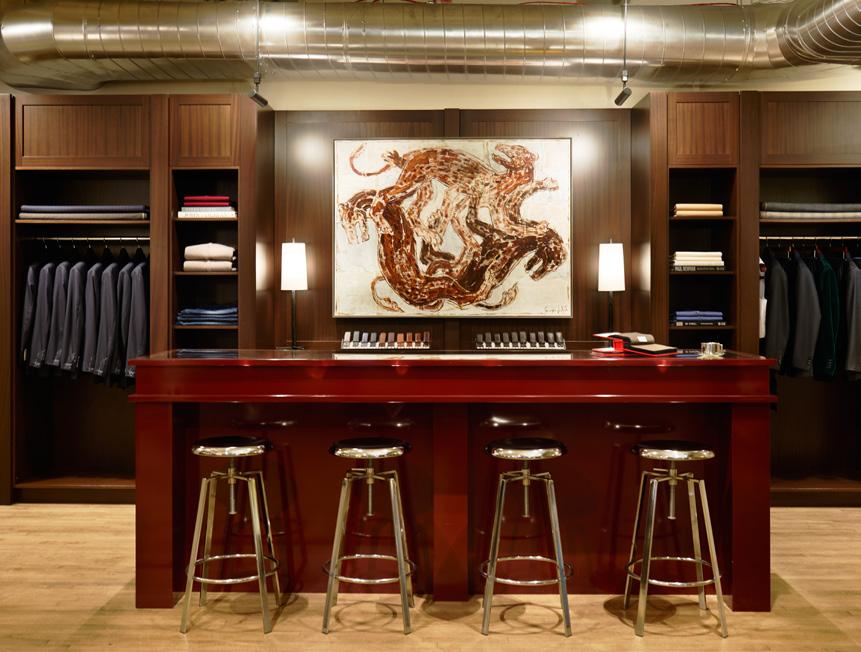
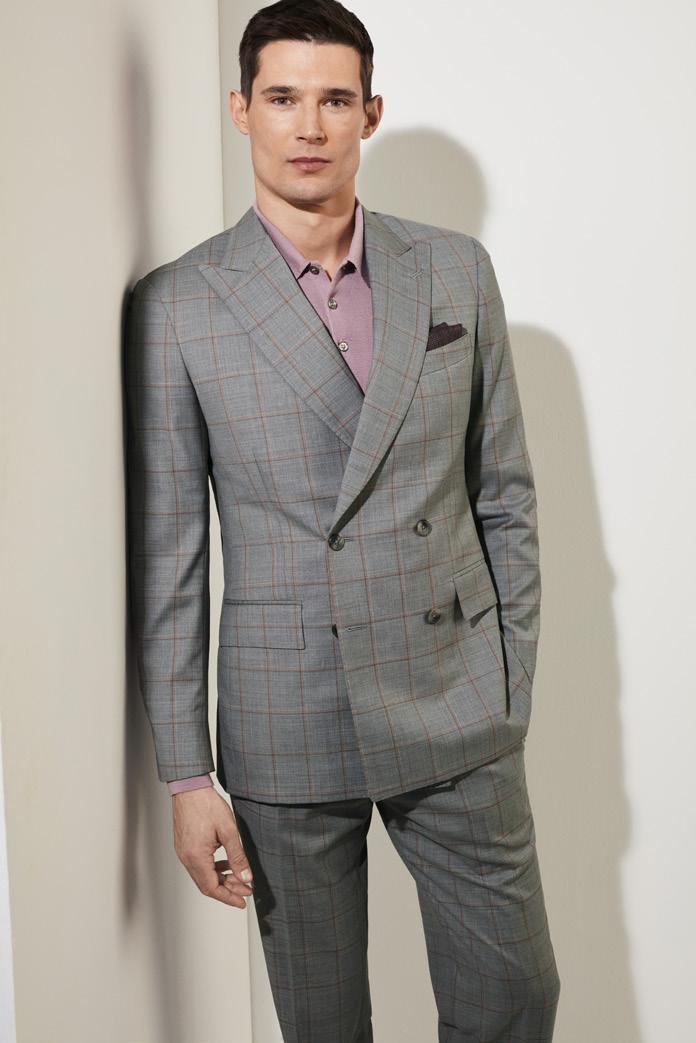
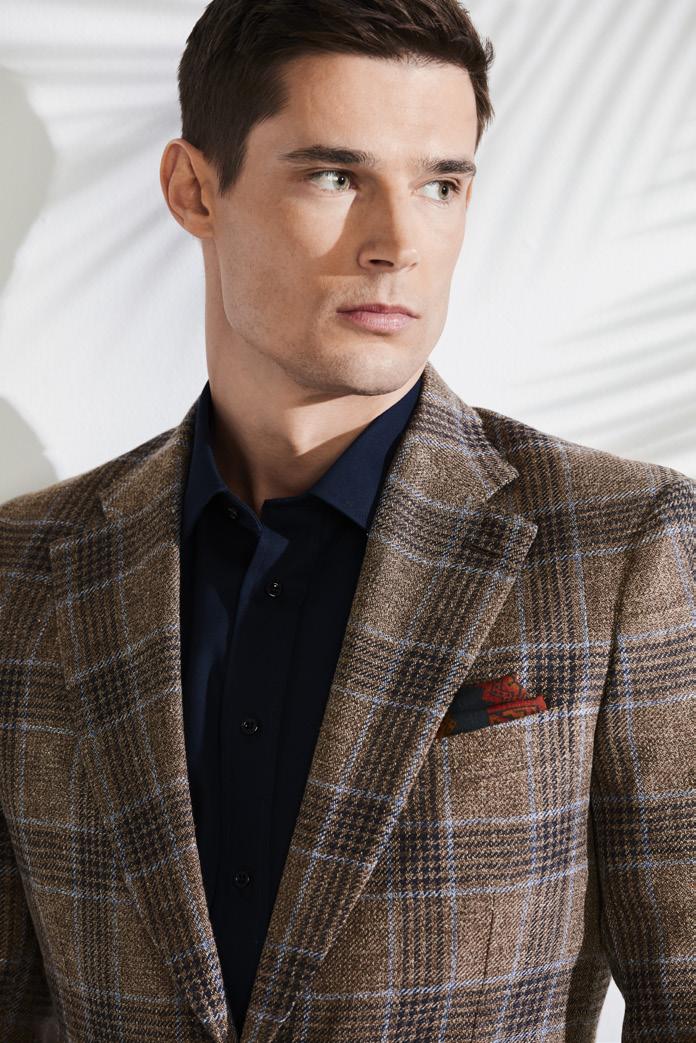

5. Any famous celebrities who are customers that you can share?
A lot of our clients prefer privacy, but there are a few names I can mention. Darryl Strawberry, Dwight Gooden, Ben Rice, and Mark Messier have all been clients. A few years back, we made jackets for the NBA’s 75th Anniversary All-Star celebration, which included legends like Kareem Abdul-Jabbar, Magic Johnson, Larry Bird, Patrick Ewing, and Michael Jordan. We’ve also dressed plenty of business leaders and politicians over the years, people like Richard Grasso, who was the chairman of the New York Stock Exchange.
6. How has the industry changed in the last two years, and where do you see it going?
The industry has changed a lot, people just don’t wear suits like they used to. The business-suit culture died down in the late 1990s, and post-COVID, people aren’t even coming into the office as often. What’s really
taken off, though, is wedding suits. Right now, probably 60 to 65 percent of what we do is wedding-related, and that number is still growing. Guys want to look great for that one big day, and they want something that actually fits. That’s where we come in.
7. Tell us more about your new space.
After twenty years on East 40th Street, we finally made the move. COVID actually created a silver lining, suddenly there was great office space available at good rates. We found an incredible 10,000-square-foot space at 515 Madison Avenue, and it’s been a game-changer. The landlord, architect, designer, and my team all worked together to make it exactly what we wanted. It’s big enough to grow into, but it still feels warm and comfortable. I didn’t want it to feel like a museum where people are afraid to touch things. When clients walk in, it feels like home, relaxed, elegant, and authentic. I really believe it’s become the showcase for
bespoke tailoring in Manhattan.
8. Any interesting trade secrets about the custom suit business you care to share?
The truth is, the biggest “secret” isn’t really a secret, it’s all about relationships. Whether it’s our relationships with the mills, the factories, or the clients themselves, that’s what keeps this business alive. As technology and AI take over so many industries, things have gotten less personal. We’ve made a conscious effort to go in the opposite direction. We still believe in old-school service: meeting people face-to-face, shaking hands, getting to know them, remembering what they like. Sure, we use technology where it helps, but at the end of the day, this business is built on trust, craftsmanship, and human connection. That part hasn’t changed in a hundred years, and it’s not going to. P
alandavid.com
BY LEXI WOLF


This newly constructed vacation home in Palm Beach Gardens, Florida, was conceived as a serene retreat for a family seeking a low-maintenance, relaxing escape within their golf course community. Designed by Gil Walsh and Ashleigh Wilson of Gil Walsh Interiors (GWI), in collaboration with Dreamstar Custom Homes, Intelli-Green Architecture, and Insite Studio Landscape Architects, the project encompassed full interior architectural finishes and fixtures, custom millwork detailing, furnishings, window treatments, art, and accessories. The vision centered on creating a clean, modern
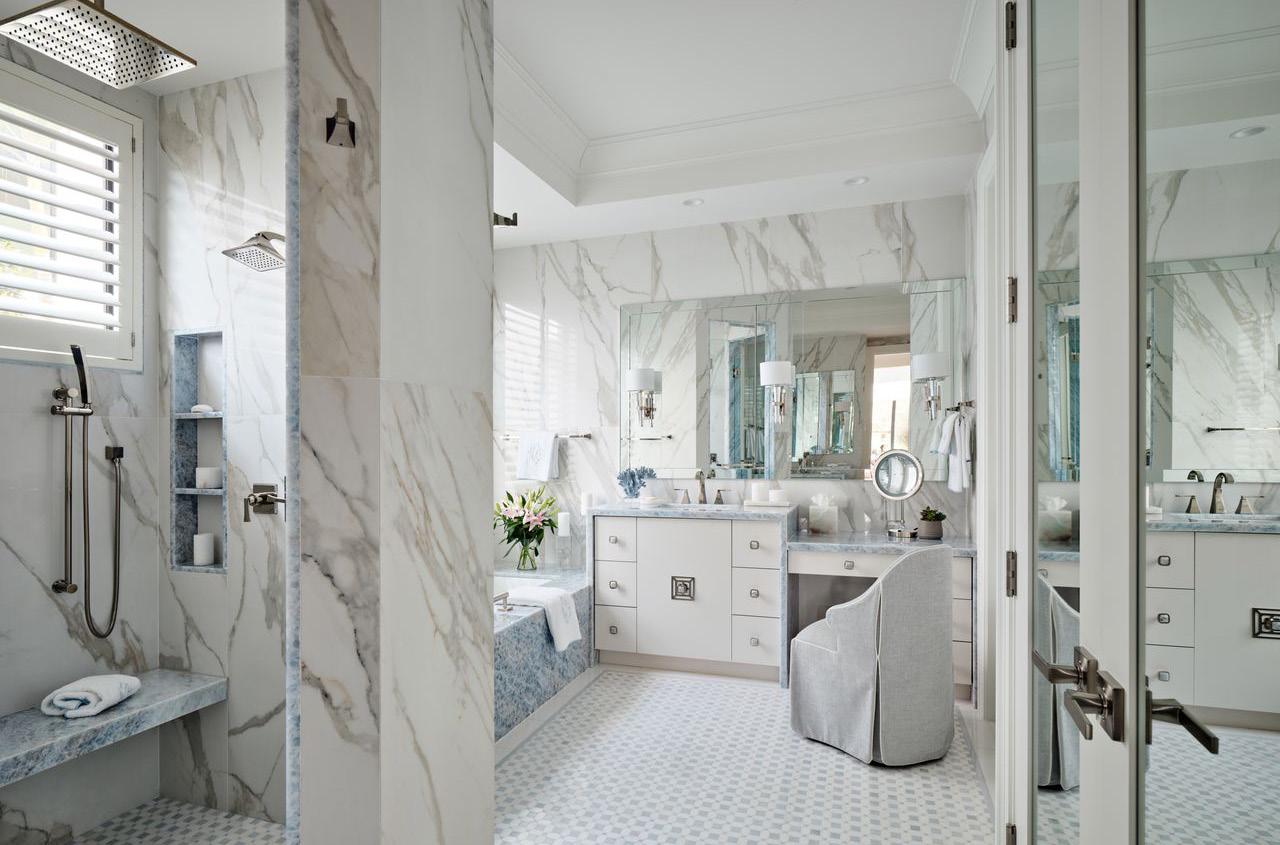
aesthetic softened by cove moldings and a light, neutral palette. Subtle yet striking ceiling details in mineral blue Venetian plaster infuse depth and visual texture, while custom brass lighting and artful accents bring warmth and vibrancy to this contemporary coastal haven.
The grand two-story foyer sets the tone for the home’s refined design, centered by a custom twelve-foot-long brass ring chandelier designed by GWI. The raised ceiling is accented with pale mineral blue Venetian plaster, introducing a subtle wash of color that softens the architectural height. A wool runner by Stark Carpet leads the eye inward, while a black high-gloss lacquer demi-lune table by Christopher Guy offers a sculptural focal point. Completing the composition, artwork sourced from Art Basel in Miami adds a curated touch of sophistication.
The living room reflects a balance of comfort and artistry, anchored by a custom sectional and pillows handcrafted by GWI’s local workroom. A bespoke cocktail table, wrapped in textured grasscloth, adds tactile warmth to the composition. The raised tray ceiling, finished in pale mineral blue Venetian plaster and illuminated by concealed LED lighting designed by GWI, enhances the ambient glow of the space. A sculptural hoop chandelier with freeform-shaped glass by Wired Custom Lighting floats above, adding movement and

lightness. Windstar art glass by Rob Stern adorns the cocktail table, alongside a pair of framed Art Deco-inspired silk murals by Aux Abris depicting the Garden of Eden. A wool and silk area rug by Stark anchors the seating area, while a pair of Kravet ottomans neatly tucked under the cocktail table lend flexibility and polish.
The master bath embodies serene luxury, with Meridian Blue Calcite stone slabs cascading in a dramatic waterfall to the floor. Full-height porcelain slab walls surround the space, creating a clean, modern backdrop. Modern Matter cabinet hardware with Moonstone accents introduces a hint of shimmer, complementing the blue calcite and white Thasos marble mosaic flooring, which is inlaid within a Thasos marble border. Robern medicine cabinets, custom designed by GWI and inset into mirrored frames, complete the refined and functional aesthetic.
The kitchen combines craftsmanship with contemporary sensibility. Custom counter stools designed by GWI’s local workroom are upholstered in marbleized accent fabric, harmonizing with the blue and gray granite slab countertops and backsplash. A custom hood designed by Modern Aire completes the composition, blending function with form in this luminous culinary space. P
gwifl.com

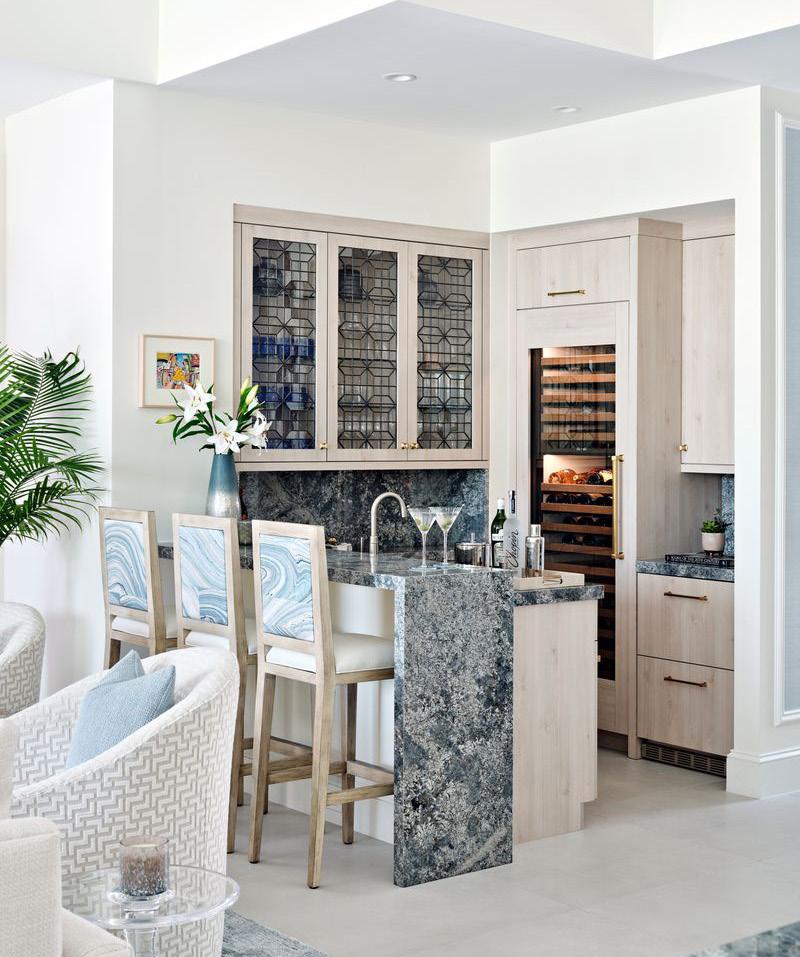
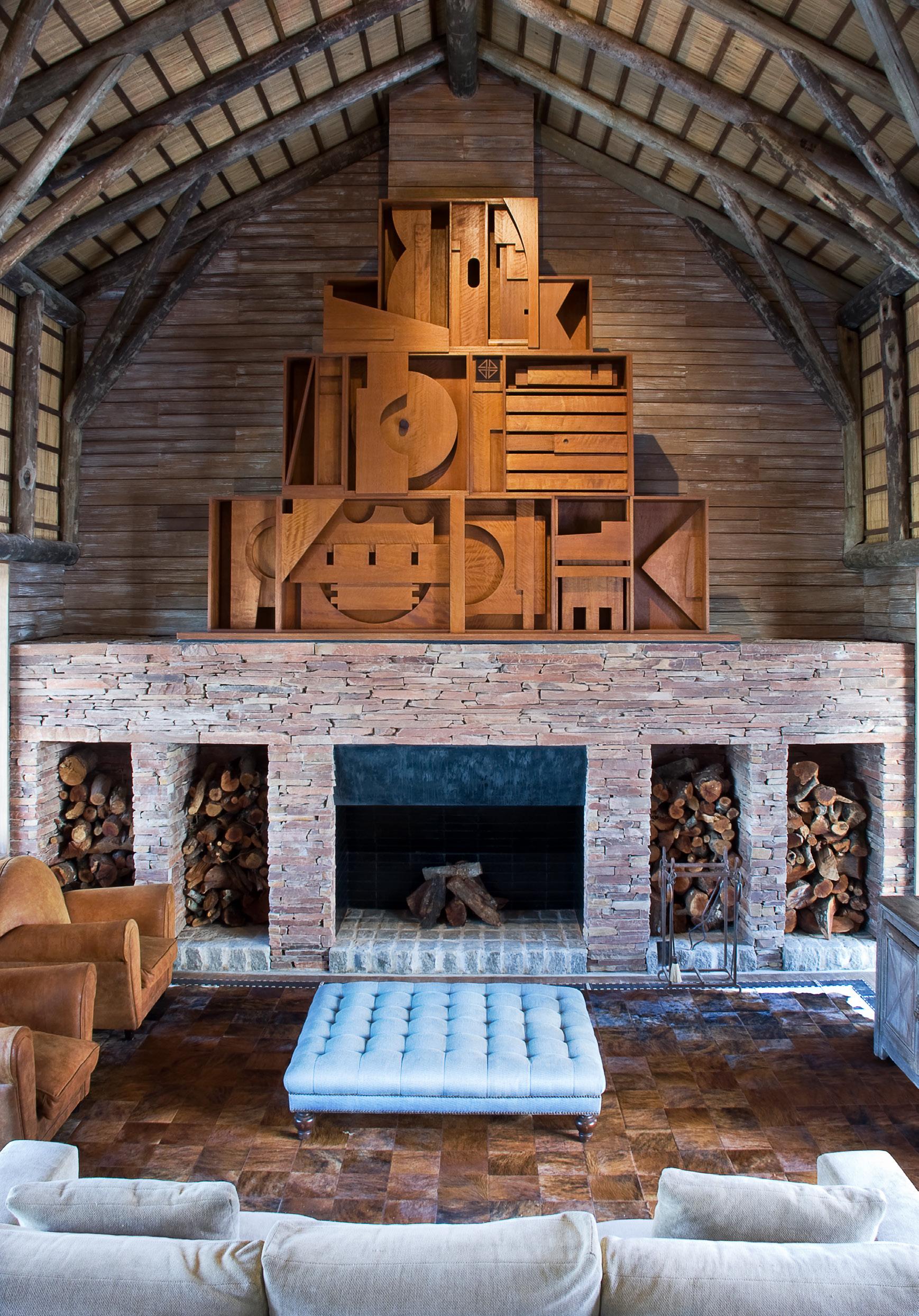

Estancia Vik José Ignacio is where the Uruguayan pampas trade secrets with the sea breeze, and time, ever so gracefully, forgets its urgency. Ten minutes inland from the bronzed glamour of José Ignacio’s beaches, the paved road gives way to a dirt lane that seems to unwind the modern world with every turn. You arrive not at a hotel, but at a dream in whitewashed adobe, Spanish-colonial bones softened by wild grasses and sky that stretches so endlessly it feels like permission to exhale.
The greeting is gentle, as if staff have been expecting you not for hours, but for years. There is no lobby formality, only a long veranda whispering welcome, a tray with something cold and local, and horses grazing with the quiet confidence of creatures who know they’ve chosen paradise correctly.
Inside, Estancia Vik reveals its eccentric soul. walls that behave like a museum’s, a curated riot of Uruguayan art that swings from brooding charcoal strokes to bold sculpture, all unapologetically expressive. Each corridor is a gallery, each doorway a small revelation; you half expect the artwork to wink, as if it knows the privilege of sharing these walls with the heartbeat of the land outside.
BY DON WINTER

Suites here are less rooms and more personal worlds. One opens to rolling fields and a bathtub that looks carved from the earth itself; another is a tangle of wood, leather, and shimmering tile. Nothing matches -gloriously, yet everything sings together. It is rustic and refined, playful and reverent, handmade luxury delivered with a conspiratorial smile.
Days stretch long and languid. Perhaps a
horseback ride across golden grass, where gauchos ride with a grace that borders on choreography, and the wind tastes faintly of salt and eucalyptus. Or maybe the pool lures you, that long, serene sheet of water reflecting cloud drama overhead, until suddenly you realize you’ve spent hours doing the sacred art of nothing. In a world frantic with urgency, nothing has rarely felt so deliciously earned.
Meals arrive as celebrations, even when
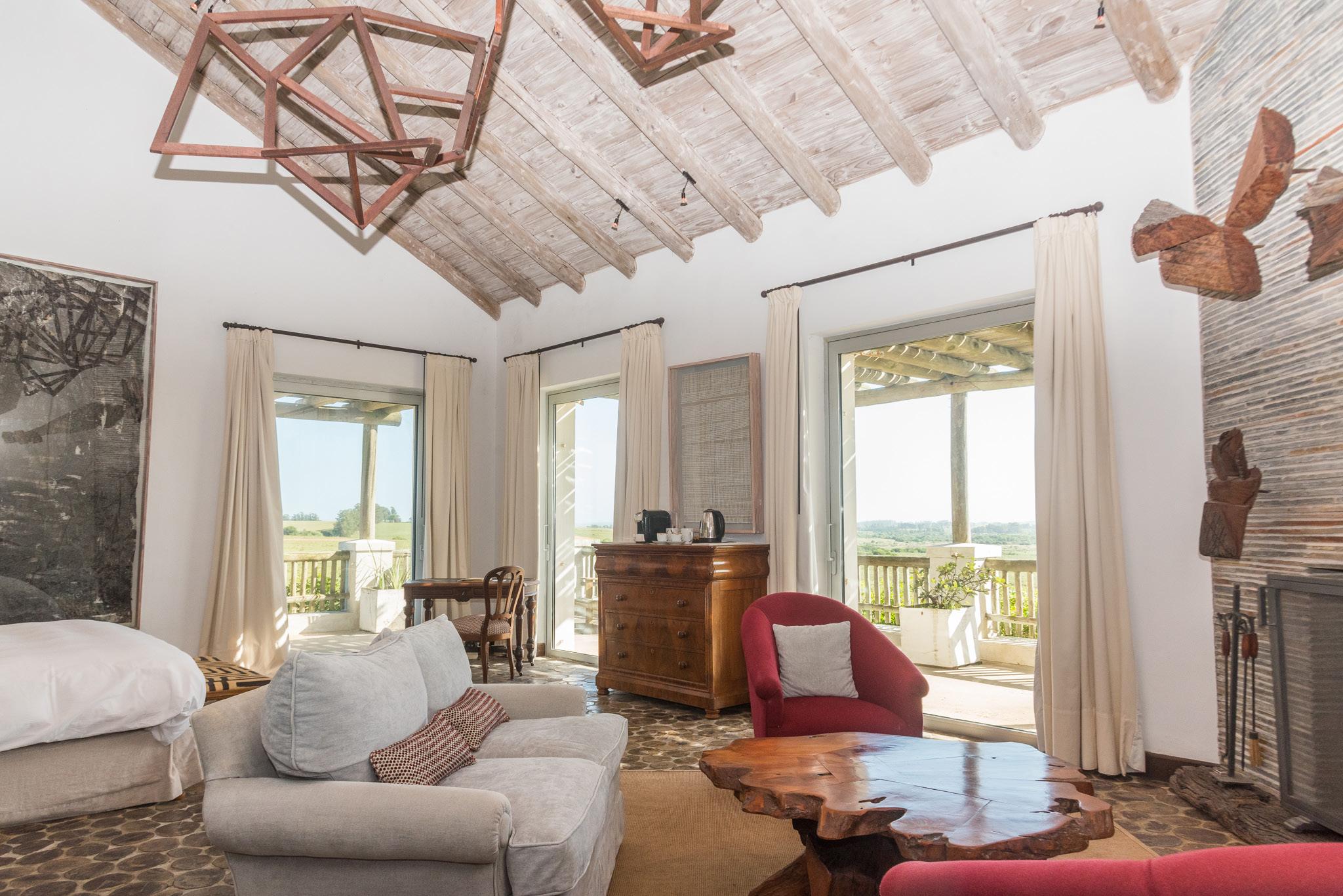

simple. Breakfast is fruit that shouts sunshine, bread still warm enough to break into a sigh, coffee bold as a tango and twice as memorable. Dinner is where the fire takes center stage, the parrilla glowing, meat perfumed by flame, vegetables kissed by smoke, and conversations stretching into candlelit reverie. There is wine, naturally, velvety and generous, the kind that turns strangers into confidantes.
And then comes night. Stars press close here, no city glow to dilute their ambition. You step outside and the sky feels impossibly wide, the universe leaning in. You are reminded that luxury is not opulence but awe, and few places deliver awe with such restraint and soul.
Estancia Vik is not for the restless or the hurried. It is for those who crave beauty in the unexpected, who understand that silence can be satin. Come here if you seek something quieter, deeper, and more whisper than roar. Come if you have ever wanted to feel like a guest in someone’s private vision; one built from land, light, and longing.
You will leave with dust on your shoes, salt in your hair, and the gentle ache that comes only from a place that has seeped into you. And somewhere between the horses and the horizon, you will have remembered a version of yourself who moves more slowly, laughs more freely, and dreams more vividly. P
estanciavik.com

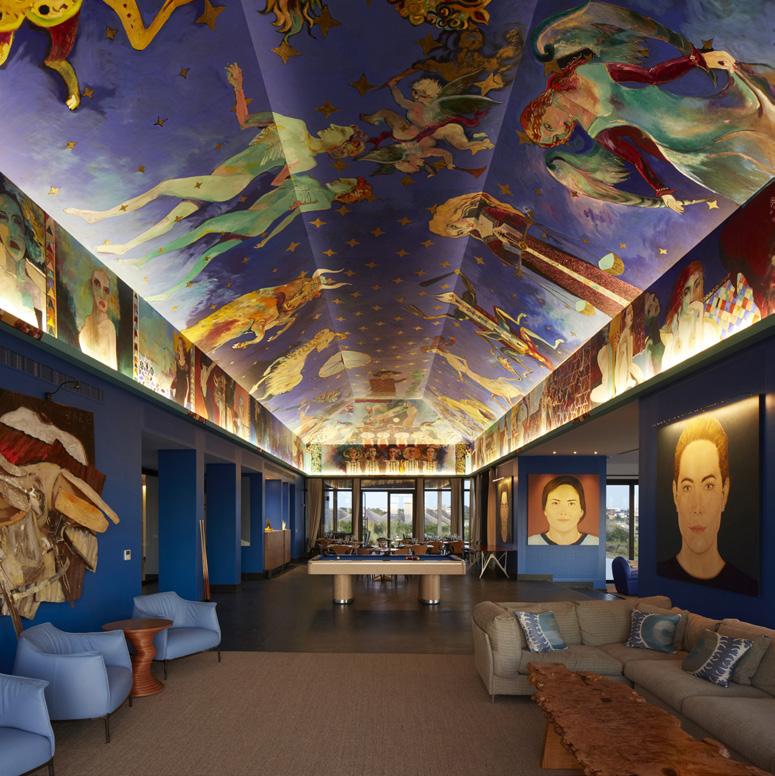
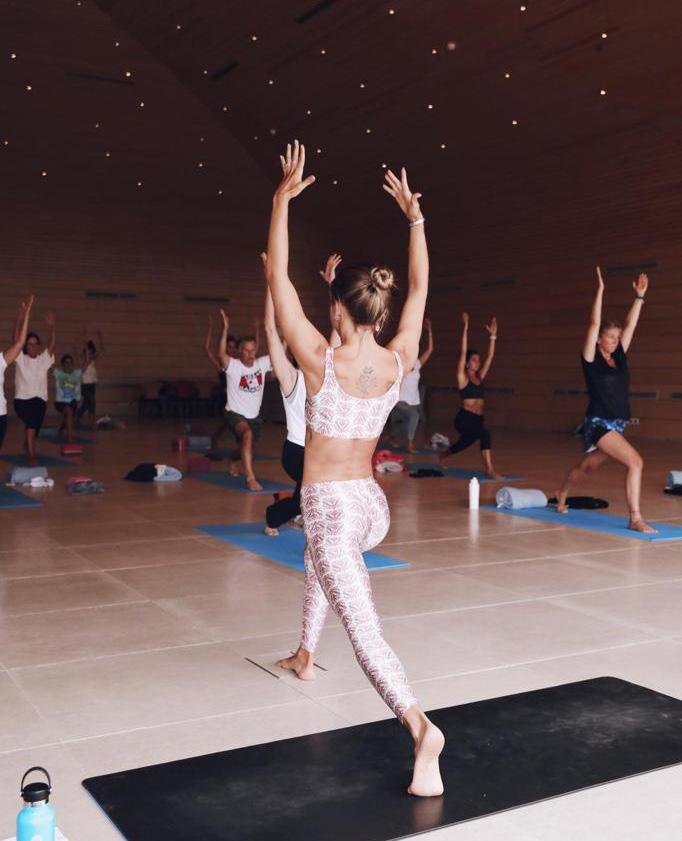

Bahía Vik José Ignacio is the sort of beach retreat that feels like a beautiful secret you almost don’t want to share. Not hidden in the remote sense, José Ignacio has long since graduated from sleepy fishing village to barefoot-chic playground. But tucked emotionally away, as if a hush of sea breeze and dune grass has conspired to protect it from anything rushed or loud-mouthed.
The property stretches along the sandrelaxed, elegant, unforced. Low-slung buildings blend into the dunes, pale and soft against the Atlantic’s shifting blues. It’s that rare luxury: architecture with humility, confident enough to let the ocean be the showstopper.
Arrival is not a grand proclamation but a
gentle exhale. There is the faint scent of salt and driftwood, the sound of waves rolling with that hypnotic rhythm that can reset a nervous system in minutes. You are ushered not toward formality but toward light open spaces, glass that seems less like windows and more like invitations. Shoes suddenly feel unnecessary, city thoughts dissolve with the tide, and somehow your shoulders drop two inches without you noticing.
Suites here are a love letter to art and air. Clean lines, warm wood, contemporary pieces perched with a kind of nonchalant confidence, as though they simply wandered in from a gallery and stayed for the view. Some face the dunes, others the sea and all feel like sanctuaries designed by someone who understands the delicate alchemy between calm and inspiration.

BY DON WINTER
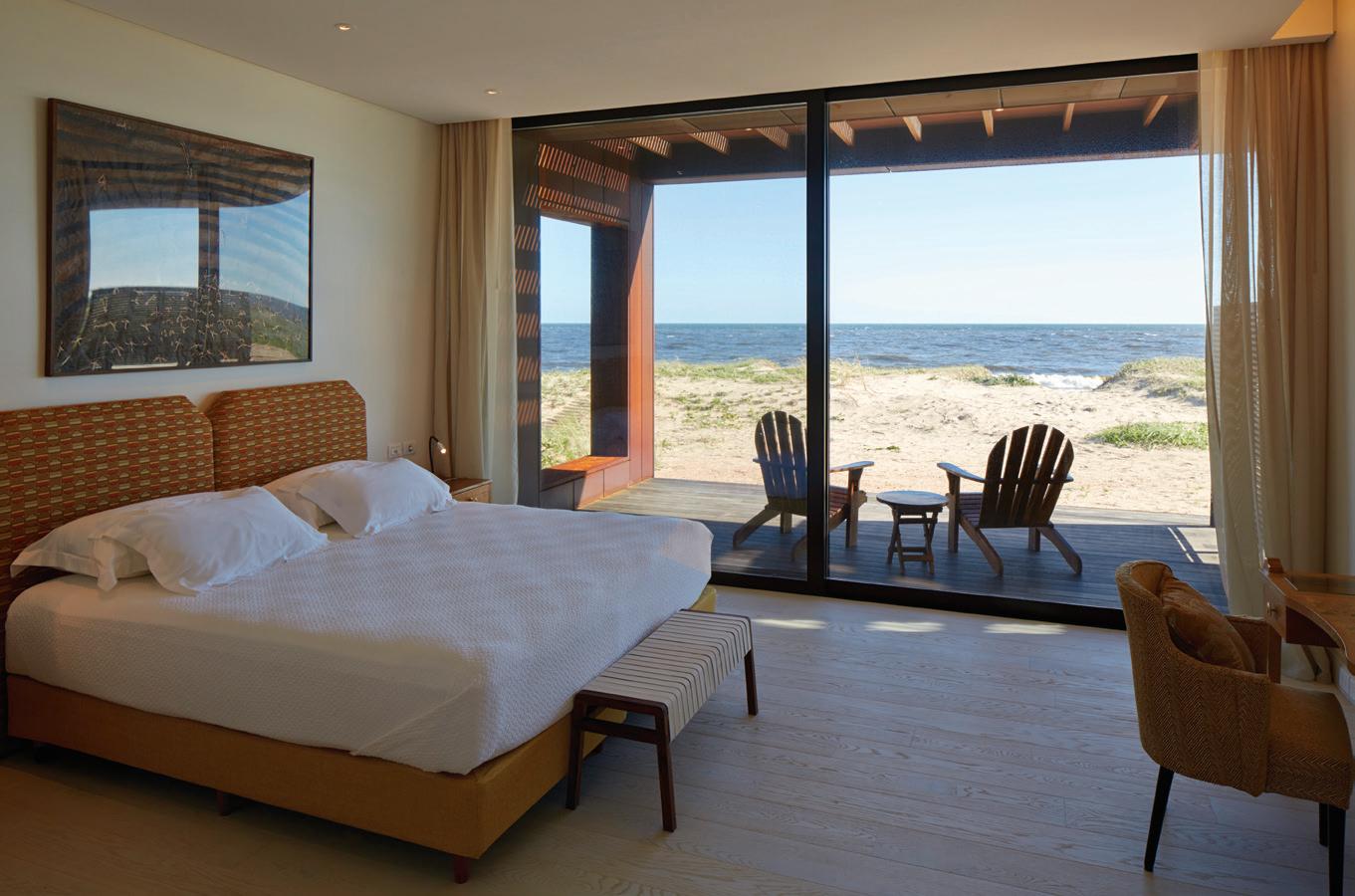
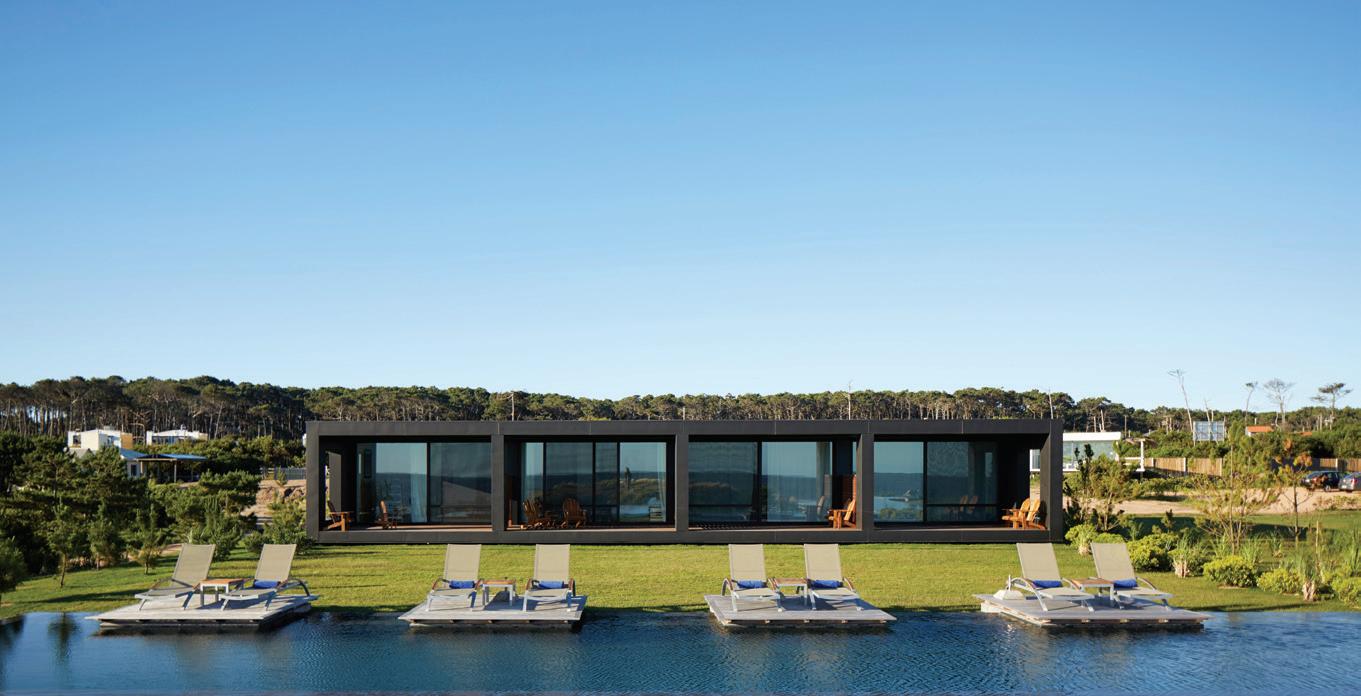
And then there is the ocean… omnipresent, persuasive, alive. Morning swims in water that wakes every cell; long, slow walks along sand that remembers only footprints; afternoons where the line between pool and sea dissolves into a watercolor of blue and silver. The horizon here is a mood shifting, contemplative, sometimes dramatic enough to make you gasp.
Meals feel like gatherings rather than events. Fresh fish still murmuring whispers of the tide, vegetables with the crunch of honest soil, olive oil that tastes like sunlight translated. A bottle of Uruguayan wine is opened not ceremoniously but generously, as though wine were simply another language spoken here. Dinner is often accompanied by the hush of dusk, when the sky glows apricot
and lavender and a few elegant silhouettes wander toward the water to watch the day bow out.
Guests seem to adopt the same tempo. Couples who speak softly and laugh easily, families with children who appear strangely calmer by the sea, a few well-traveled souls who know the luxury of truly unfettered time. There are no theatrics here, no scene to perform for. Bahía Vik invites you to be interesting to yourself again.
And when night comes, it arrives as a velvet hush. Stars scatter like spilled diamonds, waves tap the shore with metronome patience, and lantern-lit walkways guide you back to your quiet cocoon. It is impossible not to sleep deeply here. It is impossible not to dream.
Bahía Vik is not trying to seduce you, which is precisely why it does. It is luxury in the language of softness, privilege without the prickly edge, design that honors nature by whispering instead of shouting.
You leave reluctantly, sand still clinging to your skin, hair scented by ocean wind, carrying a sensation you can’t easily name, a kind of quiet fullness, a reset of the soul. And long after your plane rises from Uruguay’s coastline, you will find pieces of Bahía Vik surfacing in your memory: a flicker of light on water, the taste of salt on your lips, the luxurious simplicity of time well-lived.
One day, you will come back. Places like this don’t just call, they remain with you. P
bahiavik.com
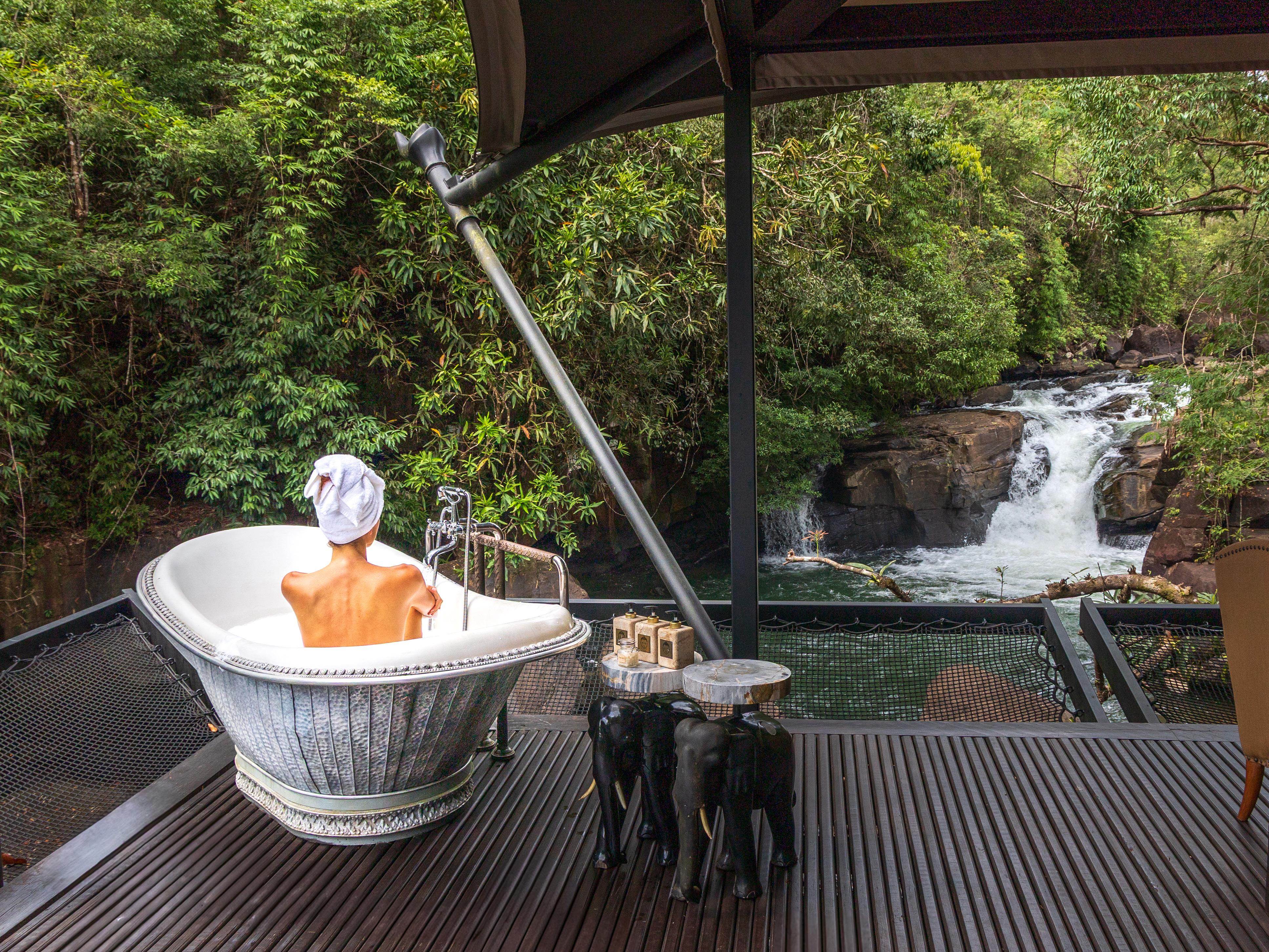
We have traveled far and wide. We have stayed in remote lodges, thrashed through jungles, and dined under stars in places that claimed to be “boutique wilderness escapes.” And yet, Shinta Mani Wild still stands apart as one of the most singular, aweinducing, perfectly executed sanctuaries we have ever encountered.
Set deep in Cambodia’s Cardamom Mountains, perched along 1.5 km of riverbanks and waterfalls, the camp is a daring hybrid: wild and raw, yet calculated to sustain the senses and soul. It is both a conservation-minded project and a sublime resort experience.
A Love Letter to the Wildest, Most Luxuriant Camp We’ve Ever Known
BY DON WINTER
PHOTO BY SHINTA MANI WILD
Our entrée to the camp felt cinematic, arriving by road to the staging area, then launched over the canopy on a 400-meter zip line, sweeping above rivers, jungle, and waterfalls, before landing at the Landing Zone Bar to a welcome cocktail. There was no grand lobby, but the thrill of arrival was all the more thrilling for it.
Immediately we knew: this wasn’t just a stay, it was an expedition. The butlers, part guide, part concierge, part magician, had anticipated every need before we registered it.
There are 15 luxury tents (14 onebedroom, 1 two-bedroom) scattered across the river valley, designed to be private yet in conversation with the jungle. Each tent is raised on stilts, with decks, outdoor tubs, and panoramic views of rapids and rainforest.
From where we lay our heads, we heard the roar of the river, the call of gibbons, insects in symphony. There was no sense of isolation or disconnection the camp is deeply woven into its natural surroundings.


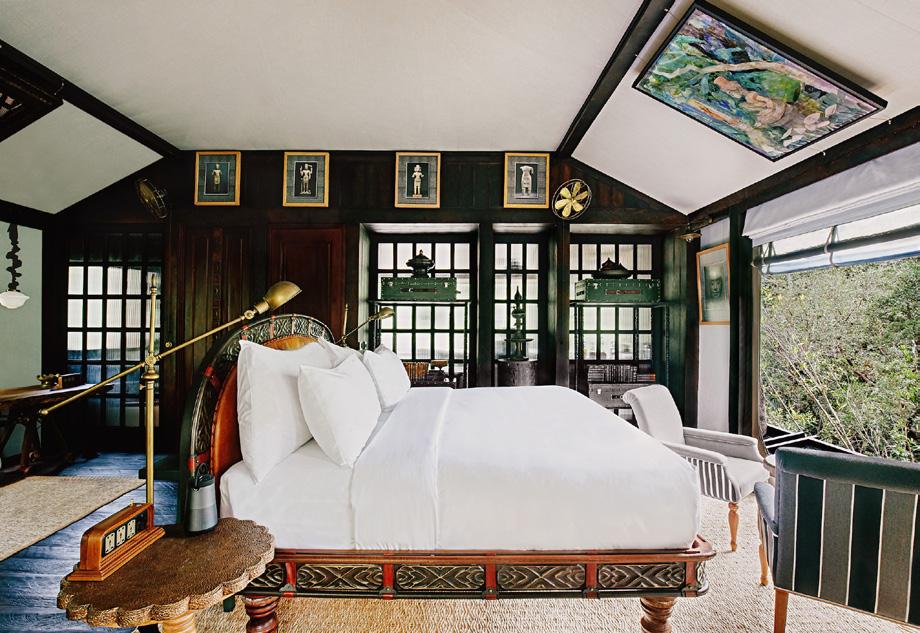
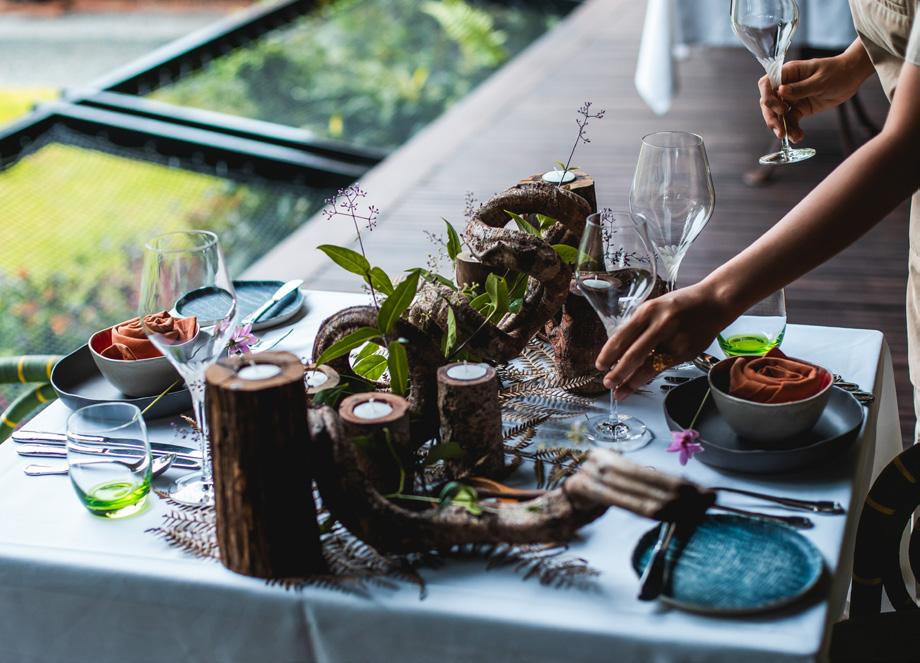
Walking the grounds, we discovered hidden trails, delicate bridges, little clearings by waterfalls, and quiet perches for contemplation. The landscaping is both bold and subtle:
As parents traveling with two children, we entered with mild trepidation: how would “luxury jungle camp” fare for little ones? But from Day One, the camp bent toward delight. Every request, trivial or grand, was met immediately, without fuss. Our children wanted late breakfasts, impromptu snacks mid-hike, or fresh towels after a muddy ride always delivered, always cheerful. We felt fully taken care of, in every moment
If the tenting and vistas are dramatic, the food is simply devastating (in the very best way). Each morning, lunch, and dinner was a revelation, from delicate forest foraged herbs to bold Khmer classics and inventive global plates. The chefs harvest from the camp’s garden and forage from the forest; the menus shift with what nature offers.
We were never bored, never overly full, always wanting the next bite. Dinners by lamplight, beside waterfalls, under
rainforest cathedral ceilings, felt like feasts from a richly written fantasy.
The real heart of Shinta Mani Wild lies in its programmed adventures – ones that stretch your body, sharpen your senses, and root you in that primal connection to land and life.
We mounted motorbikes (back-to-back) with local guides, racing through dirt trails, veering past jungle walls, searching for poachers as part of anti-poaching patrols. We saw snares, small traps, and experienced firsthand the fragility and threat to this ecosystem and felt part of its protection. Mountain biking across undulating hills and forest tracks led us to secret clearings, small villages, overgrown trails, always surprising. We foraged vegetation, edible roots, herbs, and mushrooms with guides and the camp chef. The children loved identifying exotic ingredients and tasting them raw sometimes sweet, sometimes bitter, always vivid. Magnificent hikes unfolded: we climbed to panoramic lookout points overlooking valleys, listened to birds, saw tracks, dipped in hidden pools. Jungle cruises on pontoon boats through mangrove-lined waterways
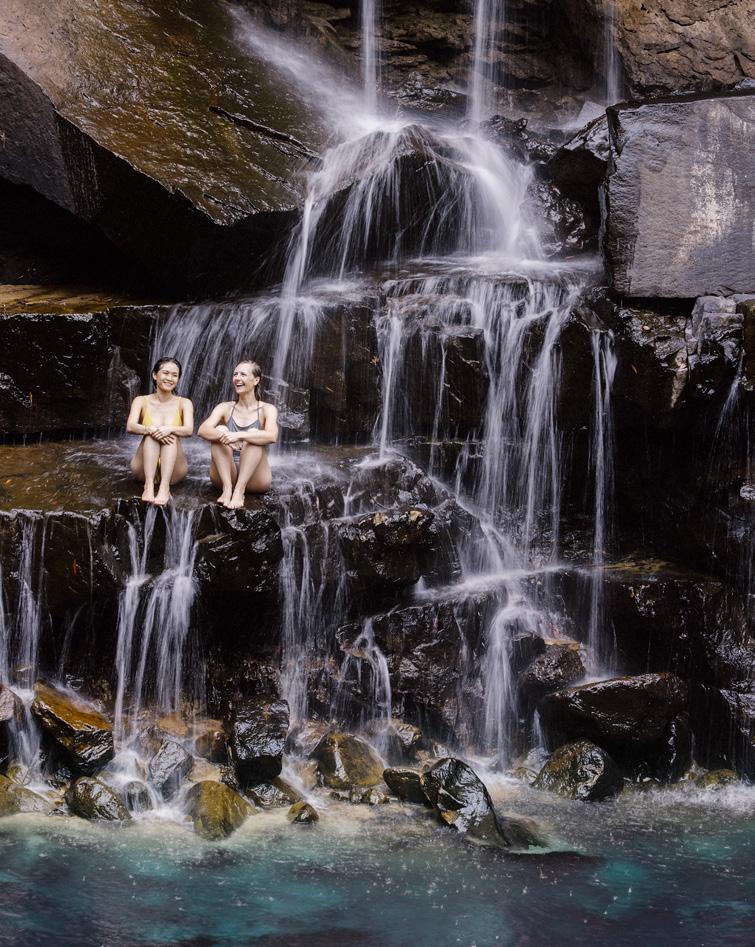
introduced us to waterbirds, dragonflies, and silent forest margins.
After every adrenaline flush, the camp orchestrated spaces for rest: hammocks, riverside lounges, hidden reading nooks, and a Khmer Tonics spa offering unlimited massages (included!) to melt away tension. A rare luxury in a day full of motion.
We visited as a family, with two kids in tow. To say it “works for couples” is true, the romance here is undeniable, but to say it works for families is equally apt. The camp curated experiences so that moments of solitude, family discovery, and playful bonding all coexisted.
We watched our children’s eyes widen as they tasted forest berries, plunged into jungle streams, and challenged themselves on hikes. We shared quiet dinners, swapped botanical finds, and laughed over our shared exhaustion each evening.
In all our years of travel, I hesitate to call any place the best yet here, now, I confess: Shinta Mani Wild may be the best we have ever visited.
If you seek a resort that pulses with meaning, that serves love as much as lavishness, that holds both heart and wildness go there. Pack lightly, come ready to discover, and let the jungle surprise you again and again. P
shintamani.com/wild

BY RYANN REYNOLDS
The beauty of Carlsbad goes beyond its stunning coastline. It’s also seen in how relaxed and nourished the town can make your body feel. Just 45-minutes north of the San Diego airport, this charming California town offers more than pictureperfect beaches and endless sunshine. Locals will tell you, “It’s all good in Carlsbad,” and it really is. Whether you’re here for a romantic weekend, a family trip to LEGOLAND® California Resort, a round of golf, or a solo reset by the sea, Carlsbad has a talent for being the perfect spot to visit, no matter the occasion.
When it comes to where to stay, Park
Hyatt Aviara sets the standard. Following its recent $50-million renovation, this Carlsbad golfer’s paradise feels more elevated than ever. Spread across 200 acres of rolling hills overlooking the Batiquitos Lagoon, the resort blends elegant yet relaxed rooms with lush scenery and pools that shimmer as the sun dips below the horizon. It’s the kind of place where wellness marries indulgence effortlessly.
Start your morning with a dreamy beach Pilates session led by Mary Reaston, the kind owner of Yoga Your Way. Think cat-cows in the sand, the sound of waves rolling in, and views of surfers catching their first rides of the day. If Pilates isn’t your thing, try an upbeat Jazzercise class in the town where
Judi Sheppard Misset first brought it to life. There’s something infectious about its mix of energy, joy, and fun that keeps you smiling long after class.
Wellness is part of daily life here. You don’t come to Carlsbad to escape life; you come to remember how good it can feel. Studios like Breathe Degrees invite a total reset for your nervous system. Aron Crow, an expert facilitator, offers a thoughtful introduction to the active meditation, then guides participants through a three-minute polar plunge challenge after the intense breathwork. This deep exploration of mind and body through the power of breathwork and contrast therapy leaves you feeling grounded, open, and alive.
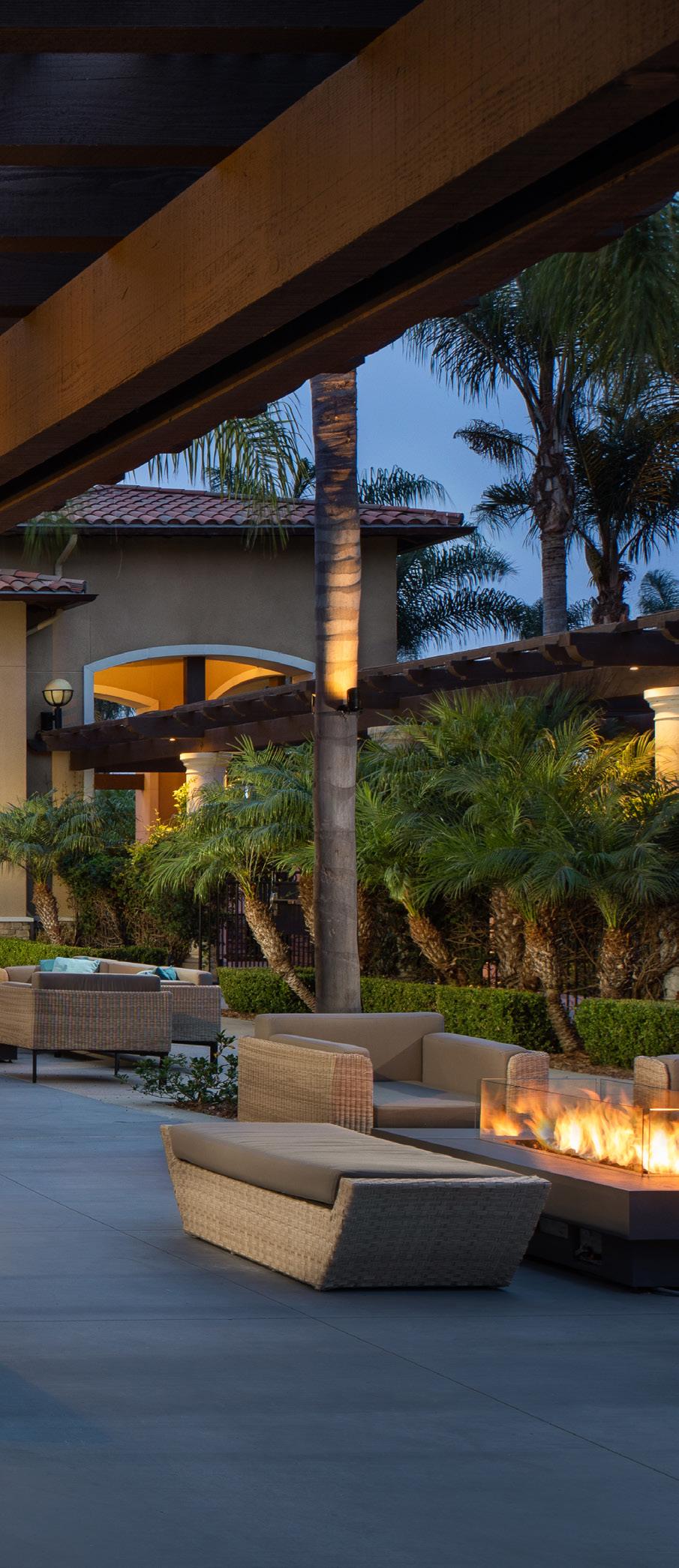
That’s what Carlsbad feels like, a sweet reset for the senses. Days unfold with ease, from morning movement to enjoying fresh local strawberries topped with whipped cream from the beloved Strawberry Shack in the Carlsbad Village. Local boutiques invite slow shopping, offering artisanal pantry goods, handmade candles, and coastal treasures. Cliffside trails meet the sea breeze and wildflowers. Even the sunsets feel intentional, as if the town were destined to be a place for rejuvenation.
The same ideology can be seen in Carlsbad’s dynamic dining scene, where chefs create dishes with the mindful energy the town is known for. Think farm-to-table restaurants that celebrate the season, with
local farms offering the freshest ingredients. Ember & Rye, a notable steakhouse by Richard Blais, serves locally sourced steak, seafood, and craft cocktails overlooking the 18th hole at Aviara Golf Club, San Diego’s only Arnold Palmer–designed course. The Park Hyatt’s Pacific Point offers artful sushi, shareable plates, and cocktails with mesmerizing sunset views from its terrace. Try the Wagyu Short Rib Ssam layered with gochujang barbecue sauce, pickled vegetables, butter lettuce, and crispy onions. It’s a dish that you won’t forget.
For dinner downtown in the charming Carlsbad Village, Michelin-decorated Chef Eric Bost brings a fiery element to the table at Campfire Restaurant. The bold, creative
menu is served inside a retro Quonset hut filled with outdoorsy charm. The open woodburning fire adds smoky depth to dishes like charred octopus, crispy broccoli with chermoula (arguably the best broccoli you’ll ever have), and fire-kissed pork belly garnished with fresh blackberry and mint. Be sure to save room for dessert – the housemade s’mores toasted tableside will remind you that s’more flavor means s’more fun.
Carlsbad is a year-round destination where slowing down feels like second nature. With endless perfect weather, wellness isn’t something Carlsbad sells; it’s simply woven into the town’s natural fabric. For those who visit, it’s a gentle reminder to relax, breathe, and enjoy feeling good. P


BY JULIE SAGOSKIN
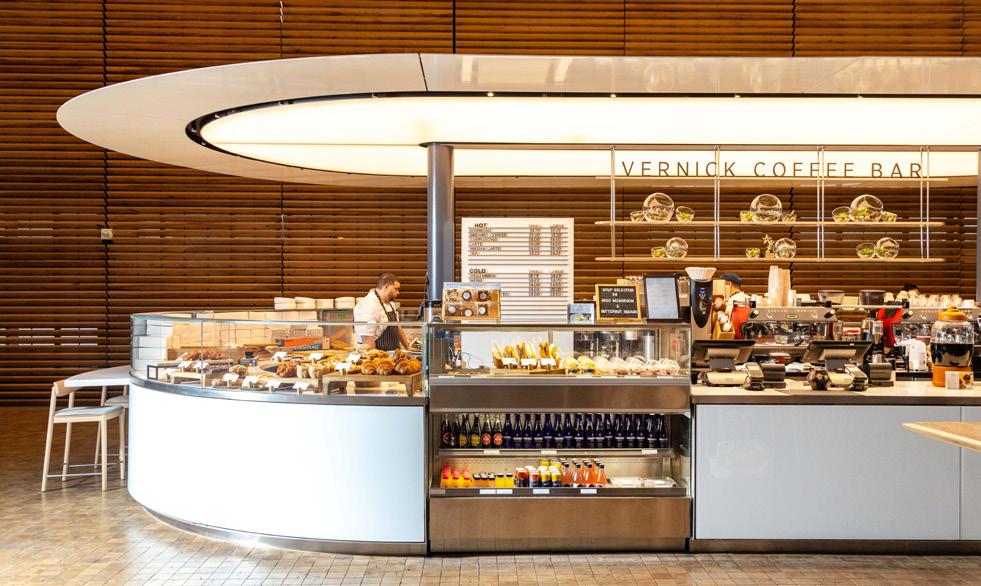

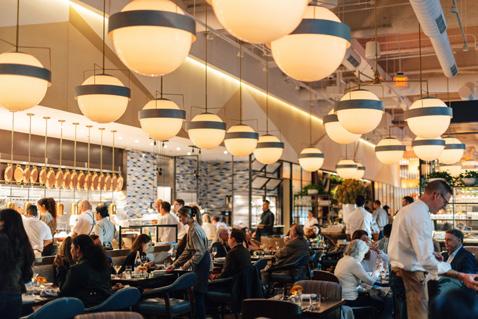
As a Philly girl, the only thing I enjoy more than visiting my hometown is watching all of the excitement from 60 stories above it all at The Four Seasons Hotel Philadelphia at Comcast Center which offers the area’s most luxurious experience. Since moving to their new location in the city’s tallest tower, the Comcast Center, visitors can enjoy fine dining options, private events, five-star amenities, and spectacular views. With plenty to see and do in this historic city with
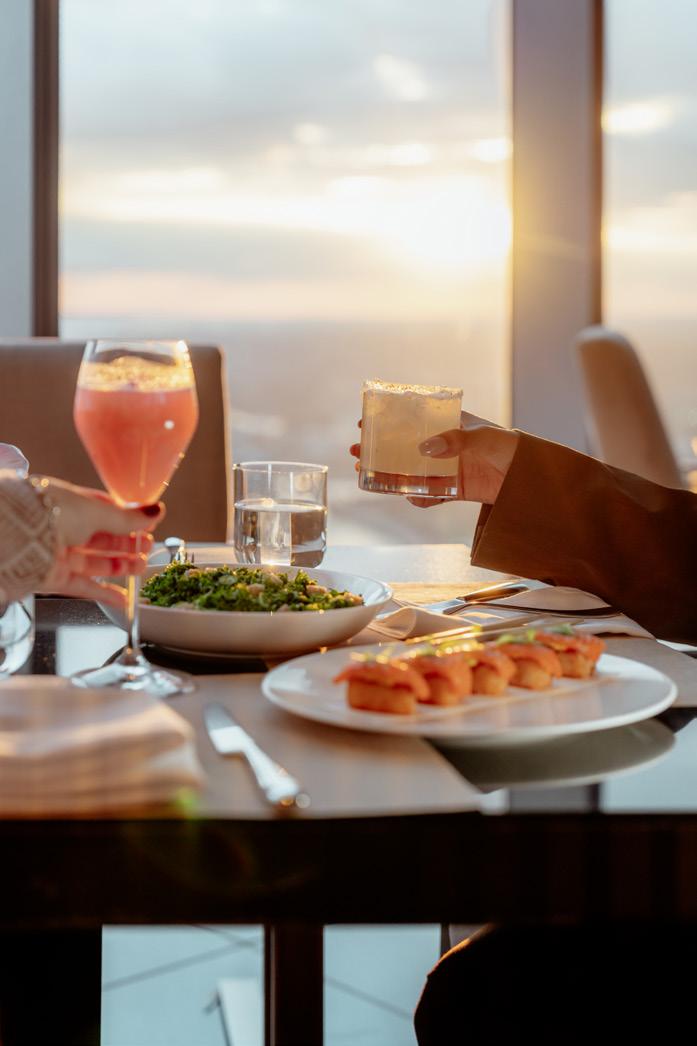

a modern vibrancy, just a short ride away from Manhattan, there’s something to do in every season at this special Four Seasons property. Things are looking even more luxe as they have just introduced the Sky Garden Floor, a posh penthouse, dedicated Spa treatment room and collection of signature suites located on the 45th floor.
Distinguished design firm, 1508 London, helped honor the hotel’s vision of recreating Norman Foster’s architectural elements including bespoke design details to imitate a residential-style experience. These
accommodations feature four standard guest rooms, two one-bedroom suites, one two-bedroom suite, and a luxurious two-bedroom penthouse. The spaces were carefully designed with local artistic expressions, plus soft geometric patterns, and natural wood paneling.
For those looking for longer term stays, the two-bedroom Sky Terrace Suite and the Sky Terrace Penthouse have access to outdoor spaces, plus a butler’s pantry and expansive kitchen, in-suite washer and dryer, and spacious living room. Guests of the
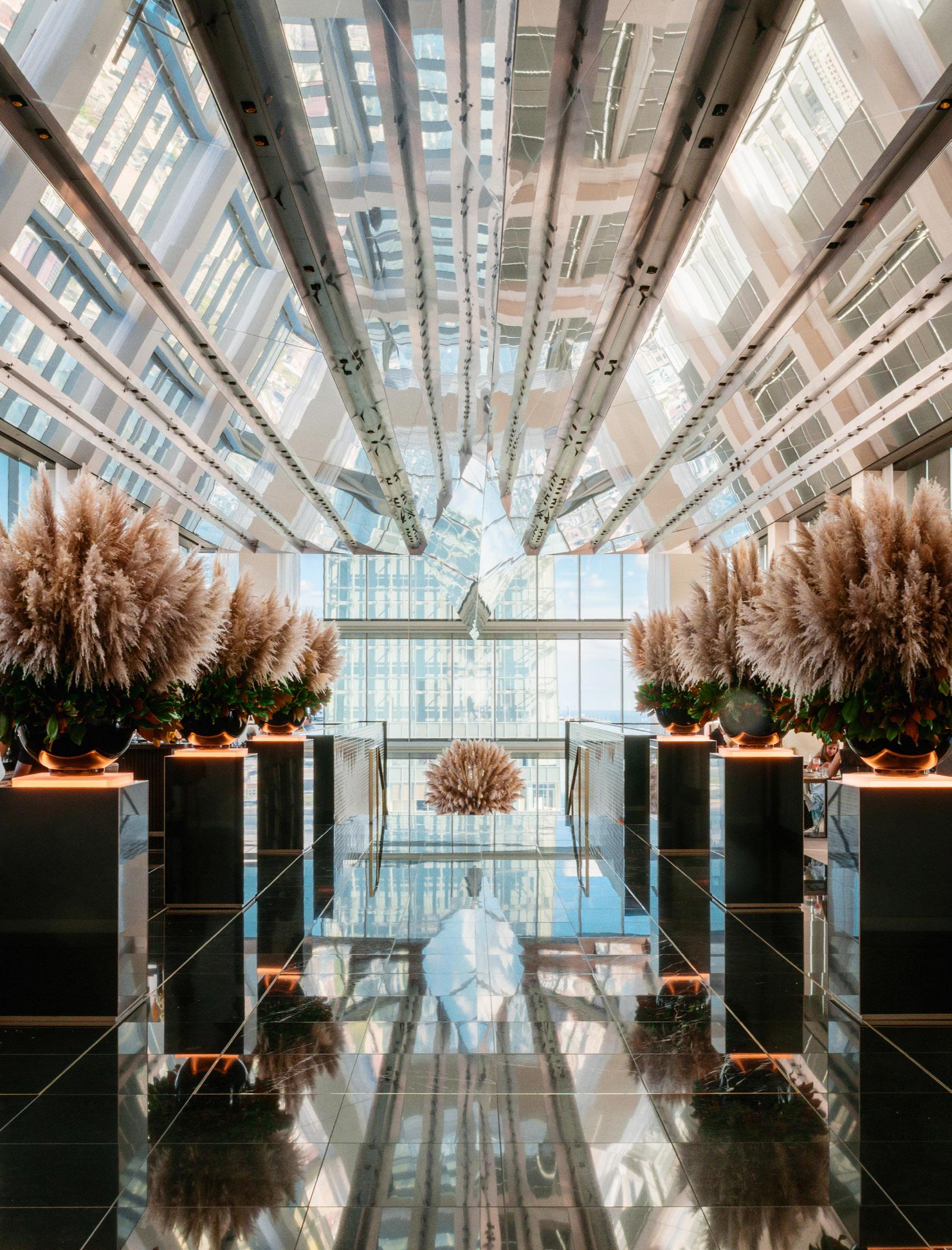
Sky Terrace Penthouse also have access to their own private gym. Additionally, a meticulously curated wine cellar presents an impressive selection of fine wines, with the opportunity to indulge in personalized tasting moments.
From the moment you enter the 60th-floor lobby with an ever-changing elaborate display of floral installations by Jeff Leatham, your smooth stay awaits. Wake up to views of the Delaware River and the area’s most iconic sites from your room or suite’s floor-to-ceiling windows before indulging
in a selection of tea, coffee and pastries available to guests.
With captivating views everywhere you look, including from their wellness center and 57th-floor infinity pool, as well as the hotel spa, prepare to see Philadelphia in a whole new light. The property even offers poolside pilates classes that change seasonally and rotate different studio partners from the local community.
Offering valet parking and their own Tesla and driver available, you can explore the city
in style. An accommodating staff also adds a personalized touch – they are truly the heartbeat of this haute hotel. Their concierges are able to curate destination activities based on their partnerships including The Barnes Foundation, the new Calder Gardens, or the city’s famed Reading Terminal Market.
Take a bite out of the city of brotherly love at Jean-Georges Philadelphia, which offers both a tasting and an a la carte menu. You can also enjoy a wine pairing that is specially curated by their Sommelier, featuring both premium vintages and pours from lesserknown independent producers.
For fresh seasonal seafood selections and cocktails, Vernick Fish is the perfect spot to relax after exploring the city. Think gourmet fare in a modern and relaxed dining room, with bar seating. For a casual pick-me-up, you can also stop by Vernick Coffee Bar, featuring a selection of house made pastries, juices and lunch fare. Meanwhile, brunch, which includes decadent delicacies including Maine lobster with softly scrambled eggs and crème fraîche, as well as a velvety French toast with foie gras, plus lunch and all-day dining options are offered at Sky High where you are literally in the sky. By night, the space transforms into a happening hotspot, with a live DJ and playful cocktail list, as city lights sparkle in the background.
They also offer seasonal activities and activations to make your stay in this walkable and cultural city as fulfilling as possible, especially during the fall and winter seasons.
Families traveling with young ones are also able to partake in their new partnership with Baby Brezza that has already become a popular addition. Guests now have access to the brand’s innovative products including the Bottle Washer Pro, Instant Warmer, and Sterilizer Dryer, valued amenities for parents when spending time on the road! P
fourseasons.com
BY JEREMY MURPHY
In a city that loves a spectacle, Utsav offers one before you even open the menu. The dining room floats like a glassy corridor in the sky, a literal bridge between two buildings with windows framing midtown’s churn of light and motion. “We are located on a skywalk between two buildings,” owner Nandita Khanna says, still amused by the novelty after a quarter century. “I have not seen this anywhere else in the city… it overlooks the plaza, it has windows on both sides.” The effect is a New York postcard come to life: foot traffic gliding below, Broadway a stroll away, Rockefeller Center just offstage.
From Buffet Beginnings to a Culinary Journey
Utsav – a word synonymous with “festival” in Sanskrit – has been part of this scene for 25 years, a woman-owned stalwart in the Theater District with an origin story that tracks both New York dining trends and Khanna’s own culinary inheritance. “We were actually an all Indian menu,” she says of the early years, when a generous lunch buffet drew office workers from the Avenue of the Americas towers. The pandemic ended that. “Nobody wanted a buffet and I was happy to get rid of it because I was never a big fan… it was just something we had to start with in 2000, it was effectively de rigueur in Indian restaurants, everybody had a buffet.” The silver lining, she adds with a laugh: “Now they want it back and I’m not doing it.”
Scrapping the steam tables cleared space – literal and creative – for a pivot that makes Utsav singular today. Khanna is from

Kolkata (Calcutta), home to India’s oldest Chinatown and the cradle of Indo-Chinese cooking. Her family’s restaurant there, BARB-Q, has been open on Park Street for more than six decades, and its recipes now form a second through-line on Utsav’s menu. “I said, let’s get the recipes from my Indo-Chinese restaurant, my family restaurant back home,” she recalls. “I have an Indo-Chinese kitchen, and I have an Indo-Chinese menu which is very popular.”
Then came a third act: a compact but heartfelt Bengali menu, celebrating the food of Khanna’s hometown. “In 2023 I decided to offer the cuisine of my hometown… the Bengali food,” she says. It makes Utsav, she notes, an outlier. “We are offering three cuisines. I don’t know if
there’s any other Indian restaurant that offers three different menus… but we are the only ones in Manhattan that offer the Calcutta styled, Bengali menu.”
The result is a dining room where patrons pre-theater can go classic or wander. There’s a reassuring roster of North Indian standards – creamy chicken tikka masala, lush saag –alongside signatures you don’t see everywhere. Khanna’s eyes light up when she describes a snack she brought over from Kolkata: “The butter chicken kulcha… a mini stuffed bread… basically butter chicken stuffed into a mini bread.” There’s a vegetarian version too, “with cream cheese and truffle oil.” The tandoor gets a few surprises: “We do a dish called the tandoori broccoli… which is not very common.” Fans
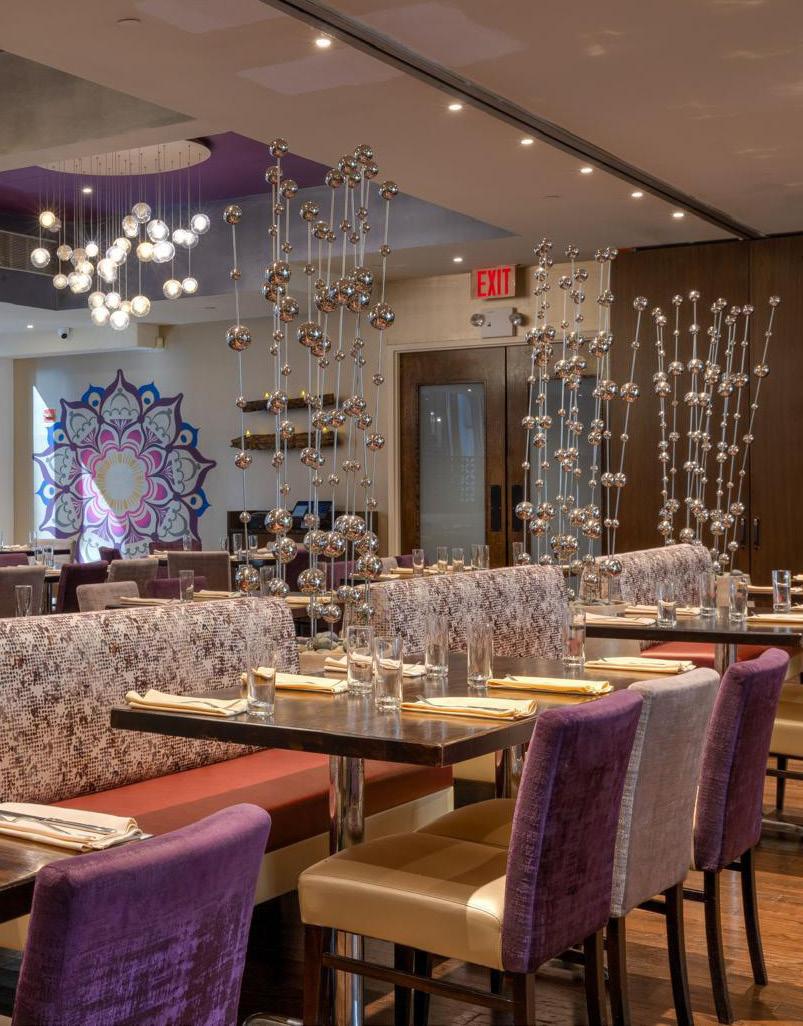
of the grill will find the requisite lamb chops, and seafood lovers can zero in on a sea bass tikka that feels made for a glass of white wine and a curtain time.
From the Indo-Chinese side, the greatest hits arrive with speed and heat: “Chili chicken… always a favorite,” Khanna says, plus chili-garlic noodles and salt-and-pepper prawns, dishes built for sharing and for the kind of lively table Utsav seems to attract before and after shows. If you drift to the Bengali column, the tone softens to comfort. Khanna’s personal favorite is the rice-andlentil porridge she calls homestyle and restorative. “That is something you can eat every day,” she says. “Don’t eat restaurant food every day, but I love that because that is like homestyle cooking.”

Khanna says, summing up the nightly cadence of pre-show toasts and post-show debriefs. The bar’s list leans bright and aromatic – ginger, saffron, mango, chiles –flavors that dovetail naturally with the kitchen’s spice palette and feel right for a restaurant that threads Indian classics, Indo-Chinese comfort, and Bengali nuance.
The space itself is designed to hold multitudes. “It’s two levels,” Khanna says. “There’s a bar on the first floor, outdoor dining available in summer, and then upstairs you have a large dining room that seats close to 200.” There’s also a private room for roughly 25, and the main room can be partitioned “with a soundproof partition” to create a smaller salon for about 70 to 80 guests. Full buyouts happen, too – 150 seated or 200 standing – making that bridgein-the-sky double as an events hall with a Midtown panorama.
Location remains one of Utsav’s superpowers. “It’s good for theatre. It’s good for tourism as well as a robust office clientele. Everything is around there,”
If the menu now reads like a travelogue, it’s because Khanna has always cooked with a map in mind. She comes from a restaurant family with footprints in Kolkata and Tokyo. “We have restaurants back home in Calcutta and my family also opened restaurants in Japan,” she says. What began as an investment became a life, and the restaurant has matured in the same way New York institutions do – by evolving without losing the thing that made them beloved.
Asked what Utsav does better than anyone, Khanna resists the sales pitch. Longevity, she implies, is its own credential, and the promise is in the breadth. “We’ve been around and we… are offering three cuisines,” she says. Her pride shows most plainly when she talks about the Bengali offerings – still rare in Manhattan, still the taste of home. That, and the view. After all, how many rooms in New York let you eat butter-chicken-stuffed kulcha while suspended over the Avenue of the Americas? In a city built on bridges, Utsav may be the only restaurant that literally is one. P
utsavny.com

There’s a thrill to walking into a place that knows exactly how magical it is. BKK New York has that energy. It skips the Midtown script of white tablecloths and hushed servers. This spot is alive. Imagine Bangkok Street buzz colliding with Manhattan ambition.
Just off 56th Street, BKK glows in neon. The space is slick but never sterile. Subway tiles, glowing signage, and a little grit make it feel like something unexpected might happen. The crowd is mixed. Locals who know. Tourists who lucked out. Theater folks trading up from the usual pre-show fallback.
The menu reads like Thai street food reimagined with swagger. The Brisket Sandwich Dip is a knockout. Juicy brisket, American cheese, and Thai beef broth instead of au jus. It is rich, indulgent, and a little bit filthy in the best way.
The BKK Hot Dog brings the drama with Chiang Mai sausage, pickled green papaya, and house fries on a brioche bun. You will not want to share. Shrimp donuts are golden bites of joy. The papaya salad brings brightness, heat, and funk.
If you want comfort, the Green Curry Short Rib is the move. Fall-apart tender meat in satin-like curry with bamboo shoots and eggplant. The flavor runs deep, and the portion is generous.
The cocktails are their own event. The Paradise Pandan blends roasted banana, coconut, and pandan leaf into a tropical daydream. The Pushcart Old Fashioned mixes peanut butter bourbon, toasted rice, and tamarind for a drink that steals the spotlight.
The brains behind the magic are partners Jeanine and Kate Royce. They teamed up with Bangkok-born chef Teerawong Nanthavatsiri, who brings his whole culinary past to the plate. The flavors feel personal because they are. Behind the bar is Tantai Khantachavana, a cocktail whisperer who is not afraid to get weird with it. The result is a restaurant that does not mimic Bangkok Street food. It channels it. Then turns the volume up
Lunch brings a quiet gem. two-course prix fixe featuring standouts like pumpkin curry or chewy pad Thai. Fast, full of flavor, and far better than your sad desk salad.
NEW YORK’S FAVORITE NEW THAI SPOT
BY RYANN REYNOLDS
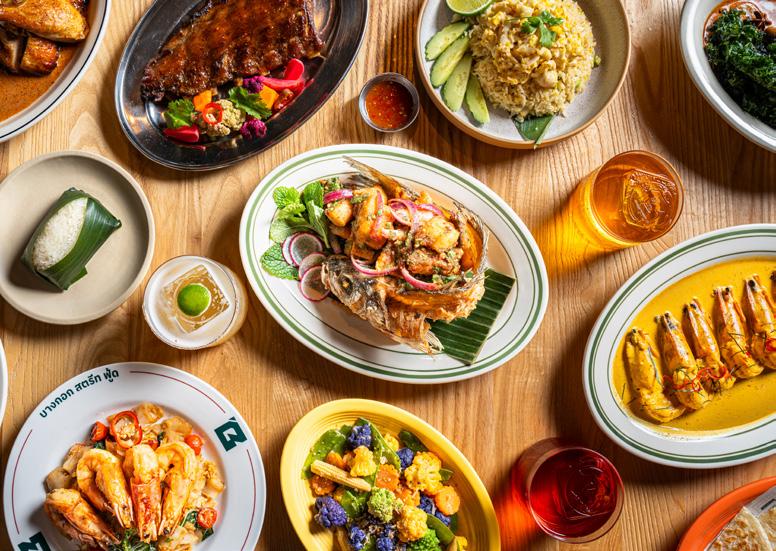

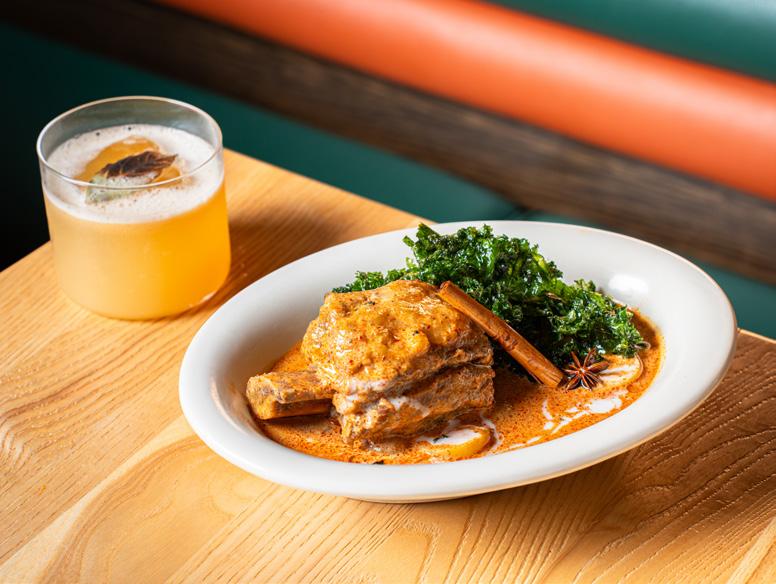
BKK feels like a portal. This isn’t your typical Midtown Thai spot. Everything is intentional, from the lighting to the ice cubes. You could swing by for a quick drink and fries or settle in with friends for a full street-style feast. Come hungry. Leave happy. Next time, bring someone you want to impress.
Looking for better Thai anywhere else in the city? Forgetta baht it. P

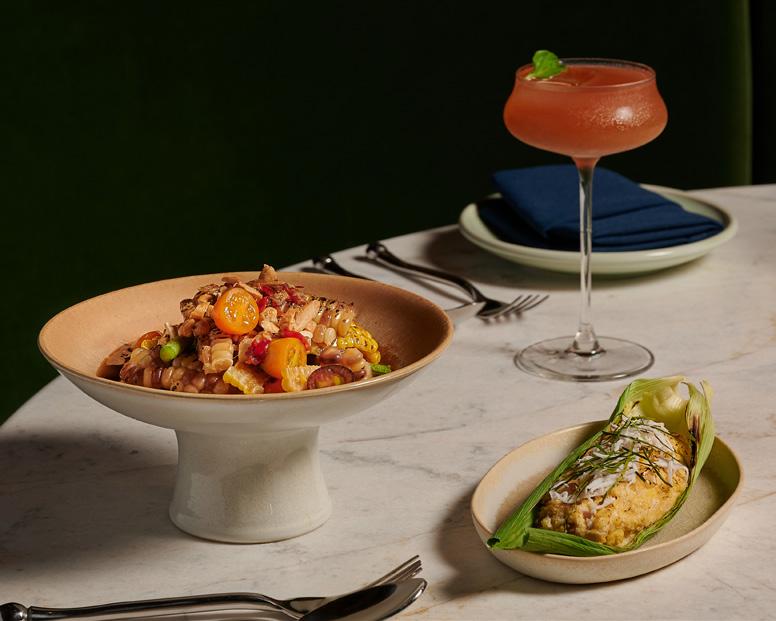
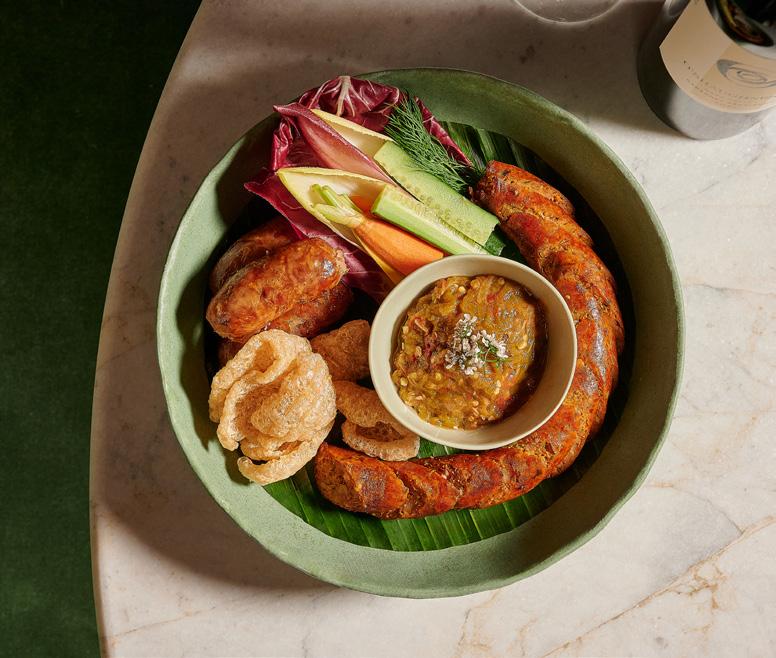
In a city brimming with Thai restaurants, Narkara offers something distinctly different: a dining experience that feels as much like storytelling as it does eating. Inspired by the Mekong Delta and rooted in the rich culinary traditions of Northern and Northeastern Thailand, Narkara blends past, present, and future on every plate. From the moment you step inside, surrounded by bamboo installations, woven textures, and handcrafted ceramics – the space signals that you’re in for a journey.
We began with the Spicy Raw Beef Tartare, a Northern-style larb that instantly became my favorite dish of the night. The finely chopped beef was layered with fresh herbs, chili, and the distinct tingle of makwaen pepper, then crowned with crispy shallots and a raw quail egg. It was bold, vibrant, and perfectly balanced.
The Thai Fish Ceviche showcased tuna cured just enough in lime and fish sauce, brightened by citrus and herbs, while crunchy cashews and delicate crisp sago added unexpected texture. The Crab Butter Custard with
BY LINDSEY WINTER
Uni felt like a showstopper: a silky custard of crab tomalley topped with briny, rich Hokkaido uni, paired with khao jee pu, grilled sticky rice stuffed with jumbo lump crab, that added both comfort and decadence.
For mains, the Seared Duck Dry Stir-Fry Curry was deeply satisfying. Tender duck breast mingled with Thai eggplant, long beans, herbs, and toasted rice in a curry paste that was smoky, nutty, and aromatic. It felt simultaneously rustic and refined, showing off the restaurant’s talent for layering flavors.
We finished with the taro custard, a sweet, earthy finale that brought us back down gently after such a flavorful ride.
Narkara doesn’t just serve Thai food, it reimagines it while honoring its roots. Every dish feels carefully considered, respectful of tradition but unafraid to innovate. For anyone in New York craving not just a meal but an experience, Narkara is a destination worth seeking out. P
narkaranyc.com
Jennifer Lawrence, Johnny Depp, Cornelia Guest, Yoshitomo Nara, Peter Marino, Kimberly Paige Bluhm & Peter Thomas Roth
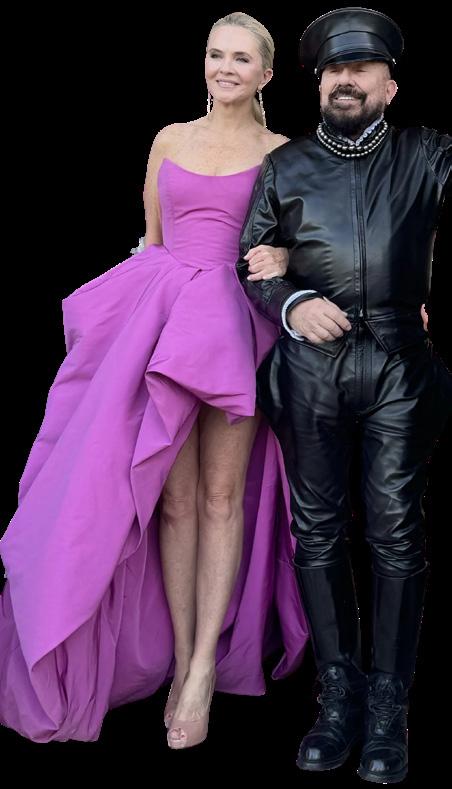
Cornelia Guest & Peter Marino
Princess Yasmin Aga Khan & Peter Thomas Roth
BY R.COURI HAY
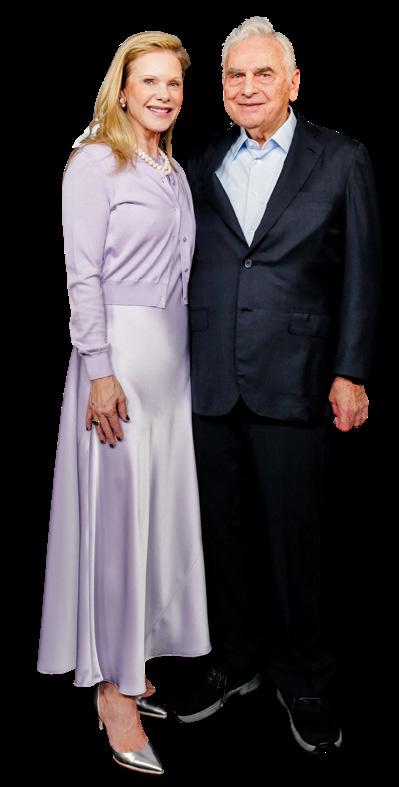
Friends of the Domaine De Chantilly Johnny Depp, Jennifer Lawrence, Charlize Theron, Anya Taylor-Joy, Cornelia Guest, and architect Peter Marino were all front row at designer Jonathan Anderson’s first show for Dior in Paris. The night before, Marino, was the Gala Chair of the 10th anniversary of the Friends of the Domaine De Chantilly, the historic chateau outside of Paris, originally built in 1358. Prince Amyn Aga Khan, the chairman of the organization that raises funds to restore the chateau, greeted the guests. Other New Yorkers on hand were arts patrons Marina Kellen French, Barbara Tober, Tom Knapp, Eugenia Bullock, Curtis Clarizio, Jessica Nicholls, Isabelle Marino, and Miss Guest.
fodchantilly.org
Kimberly & Neil Bluhm
Northwestern Memorial Hospital
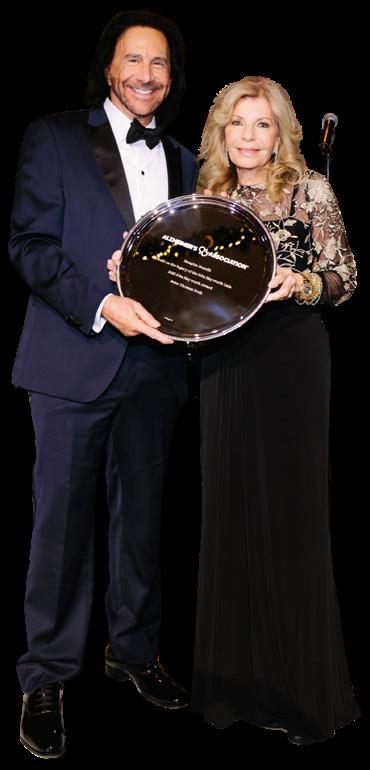
Hollywood legend Rita Hayworth, whose co-stars included Cary Grant and Gene Kelly, suffered from early-onset Alzheimer’s and died at 68 in 1987 due to complications associated with the disease. Her daughter, Princess Yasmin Aga Khan, took care of the star in NYC and, after her diagnosis, founded a gala in her honor that has raised over $90 million since its inception in 1984. This year’s 41st edition of the Alzheimer’s Association Imagine Benefit honored the Princess’s friend, skincare mogul Peter Thomas Roth, for “his commitment to the mission and his impact on raising awareness and funding for care and research.” She added, “Alzheimer’s remains a national crisis, affecting over 7 million Americans, including over 427,000 New Yorkers.” alz.org
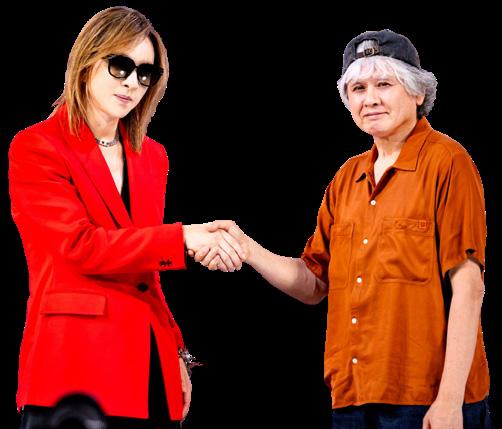
Billionaire Neil Bluhm was honored at the 20th Anniversary Gala of the Northwestern Medicine Bluhm Cardiovascular Institute (BCVI). His wife, Kimberly Paige Bluhm, who was one of the hosts, said, “I’m incredibly proud and grateful to Neil and the Northwestern team for building such a world-class heart hospital. The work that is done here is extraordinary.” The event marked a milestone that began in 2005 when Bluhm made a heartfelt, 10 million gift to establish the BCVI. He went on to give 45 million to the hospital. Bravo! nm.org
Artist Yoshitomo Nara and musician YOSHIKI, both listed on TIME magazine’s “100 Most Influential People in the World” for 2025, have announced a new wine collaboration with winemaker Robert Mondavi Jr. The “Y by YOSHIKI × Yoshitomo Nara Collaboration Wine” brings together YOSHIKI’s Napa Valley wine brand and Nara’s globally celebrated artwork, which will appear on the bottle’s labels. These include a painting of a puppy playing imaginary drums with two doggie bones and a mischievous monkey sitting on a duck. Nara told me, “Having a small illustration not only on the label but the cap is a unique attribute that is not often seen in wines.”
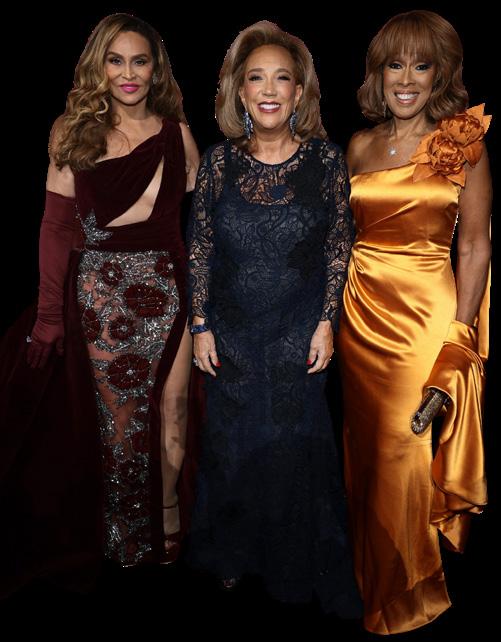

This marks the first collaboration for YOSHIKI since he created a clothing line with Stella McCartney in 2021. YOSHIKI told me, “I am overwhelmed with emotion to be able to work on something like this with Nara. It feels like a dream.” ybyyoshiki.com
Angel Ball Amy Green & Densie Rich


Jackie Siegel, the television personality best known for the Bravo show “Queen of Versailles,” which has just been turned into a Broadway musical starring Kristin Chenoweth, presented Amy Green, the Founder of The Green Vision Foundation, with an award for environmental leadership at Denise Rich’s Angel Ball at Cipriani. Amy told me, “I believe everything is connected, the earth, the ocean, and the energy we share, and the Angel Ball embodies that circle of purpose and compassion.” Beyoncé Knowles’ mother, Tina Knowles, was also honored at the star-studded gala. Guests included Michelle Williams, Lil’ Kim, Brooks Nader, Kerry and Dr. Anthony Berlet, Melissa Gorga, Jonathan Cheban, Clive Davis, Eugenia and Janna Bullock, and Dennis Basso. gabriellesangels.org
Herb Karlitz’s Celebrity Chefs Extravaganza
producer and chef guru Herb Karlitz. One hundred twenty top culinary and sports stars were on hand, including Marcus Samuelsson, Geoffrey Zakarian, “Iron Chef” Masaharu Morimoto, MLB Hall of Famer CC Sabathia, and NY Knicks draft pick Jordan Clarkson. Key sponsors included Ernst & Young LLP , Resy, Porsche Englewood, Acqua Panna®, S. Pellegrino®, Impossible Foods, Real Del Valle, Resorts World, Tito’s Handmade Vodka, and Urbani Truffles. The event at the Montclair Country Club raised enough money for the beneficiary ,City Harvest, to serve 1.5 million needy New Yorkers. karlitz.com
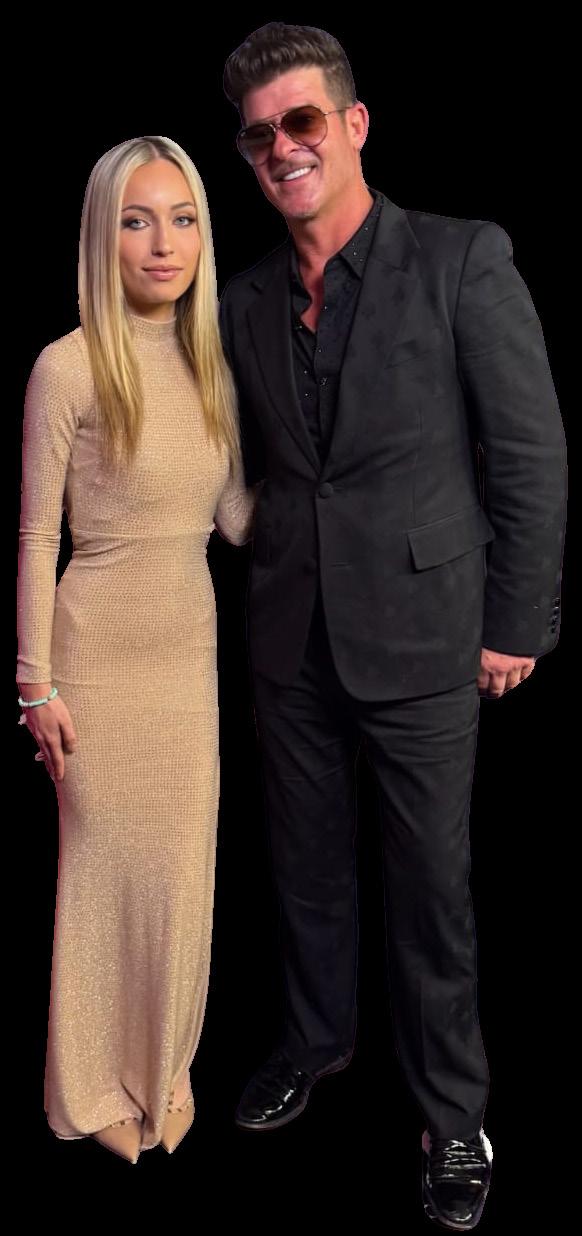
Marcus Samuelsson, Geoffrey Zakarian & Masaharu Morimoto
Ja Rule served as the referee for a putting contest between CC Sabathia and Justin Tuck. Neither of them sank the 40-foot putt, but as both balls were equidistant from the hole, Ja Rule declared it a tie. Rao’s Chef Dino Gatto dished out the prize, two big bags of his famous meatballs. The Celebrity Chefs & Friends Golf and Tennis Tournament was organized by event

Billy Ray Cyrus & Alexis Silva. Miley Cyrus’ father, Billy Ray Cyrus, who is dating actress Elizabeth Hurley, is making time to mentor singer-songwriter Alexis Silva. The 16-year-old, who survived a life-or-death cancer scare, performed her original songs about her dramatic experience and then distributed health kits, groceries, and served hot meals to the homeless alongside Pastor Michael Hall in San Bernardino, California. alexissilva.com
Hope for Depression Research Foundation
Annual Luncheon Seminar
Audra McDonald, the six-time Tony Award winner, was honored at Audrey Gruss’ Hope for Depression Research Foundation’s 19th Annual Luncheon Seminar at The Plaza Hotel . Audra told me, “I realize I’m someone who suffers from depression. But I learned in the years, A, how to deal with it, B, to find my joy and C, to realize that, like
alcoholism, it’s something you wake up every day and say, ‘Yeah, that’s still something that I have to deal with,’ as opposed to saying, ‘Oh, I’m not depressed anymore.’ But to learn how to cope with that. My art gives me a lot of joy and keeps me strong.” The HOPE seminar, led by longtime MC and former news anchor Chuck Scarborough, focused on
“Stress and the Brain: The Link Between Stress and Depression,” with top scientists and psychiatrists addressing science-backed tools to protect brain health and well-being. hopefordepression. org
Melinda and Bill Gates have awarded a college scholarship to 18-year-old designer Sir Darius Brown, the founder of Beaux and Paws. Brown’s charity creates bow ties for shelter animals to help them find forever homes. Darius, who is attending Morehouse College courtesy of the Gates Foundation, told me, “My goal is to have a TV show focused on shelter dogs and cats. I’m also working on a book of adoption stories. On the weekends, I make and donate Wag Bags with treats, toys, collars, and leashes.” Designer Andrea Stark brought Darius to the Tri-County Animal Rescue’s Peppermint Bark & Brunch at the Trump Golf Club in West Palm Beach, where he “dressed” all the adoptable dogs in his signature handmade ties. Earlier in the month, Stark talked up the brunch with Sharon Bush, Holiday House’s Iris Dankner, and Meera Gandhi at Christofle’s 57th St. boutique, where she had created a festive holiday tabletop using the company’s flatware collection, Carrousel, and Scalamandré’s iconic zebra print on the tablecloth. tricountyanimalrescue.com
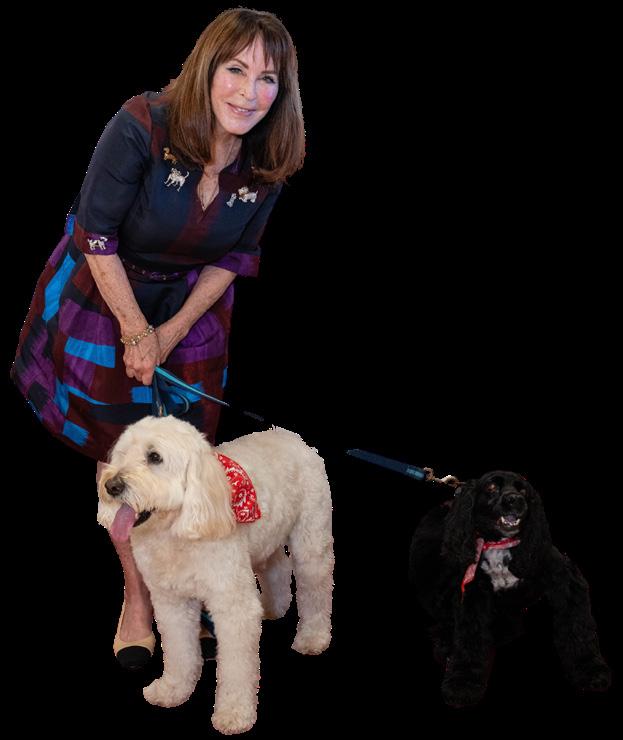
Join me on the following pages for a look back at the season’s best parties.

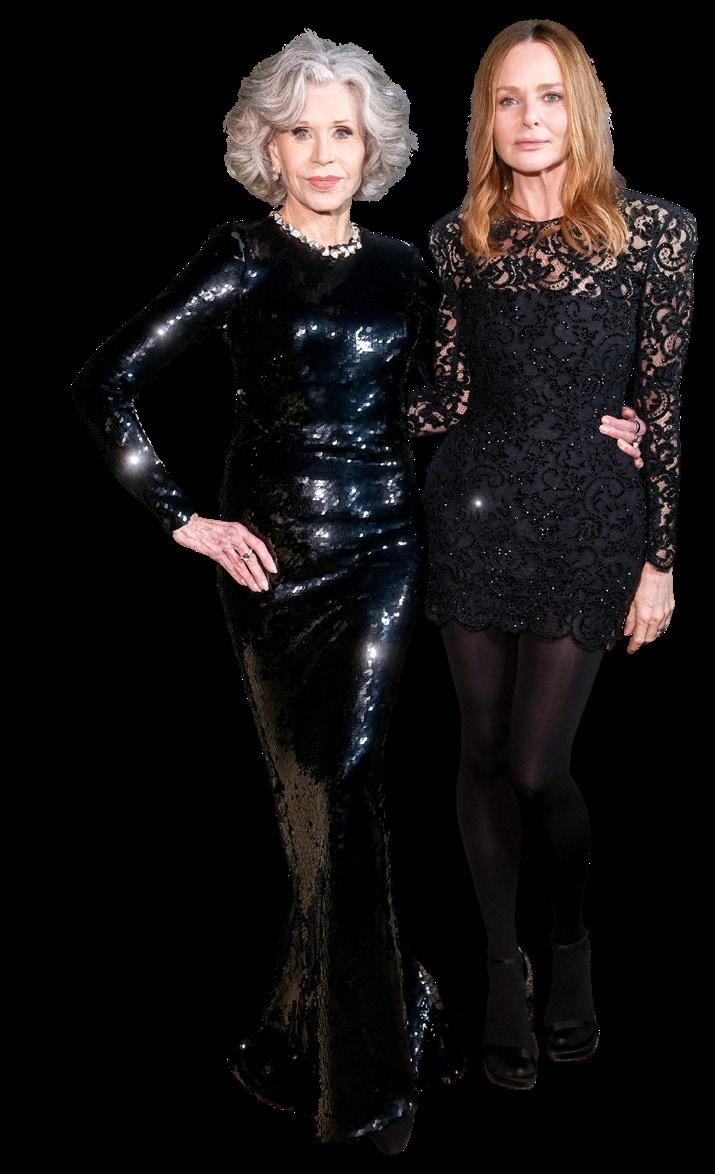
The Story
Environmentalist Amy Green, the CEO of the Green Vision, joined her pal oceanographer Sylvia Earle, Harrison Ford, Billie Eilish, Jane Fonda, and Stella McCartney were all in attendance at the inaugural NAT Gala. THE NAT, a new entity dedicated to mobilizing capital for nature-positive initiatives, was created to unite culture and capital in addressing the $711 billion nature finance gap. Taking place on the eve of the United Nations General Assembly, the Gala marked a significant cultural and philanthropic moment on the international climate calendar, raising critical funds for initiatives led by Conservation International, UNICEF, and Open Planet. Amy said, “I’m proud to be standing among some of the most powerful protectors of our planet. My passion lies in educating people about what is truly happening in our world – and inspiring action on how we can all make a difference.” It was a busy time for Amy, who lives between Aspen and NYC. She was also seen out and about at top-tier fashion week events, including a Ralph Lauren dinner at the Polo Bar, a diamond launch dubbed “The Chopard Ice Cube Party” with the company’s president, Caroline Scheufele, and a front row seat at Natalie De-Banco’s Bronx and Banco fashion show. henat.com



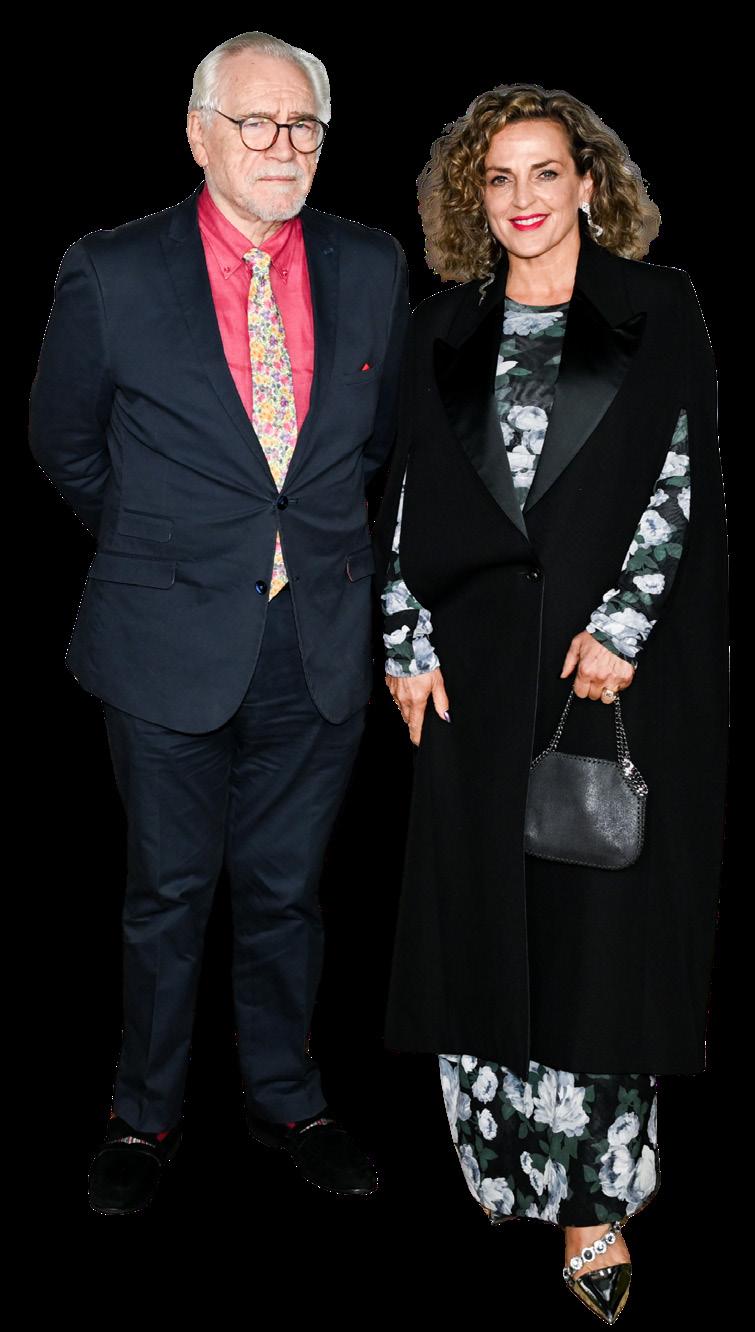


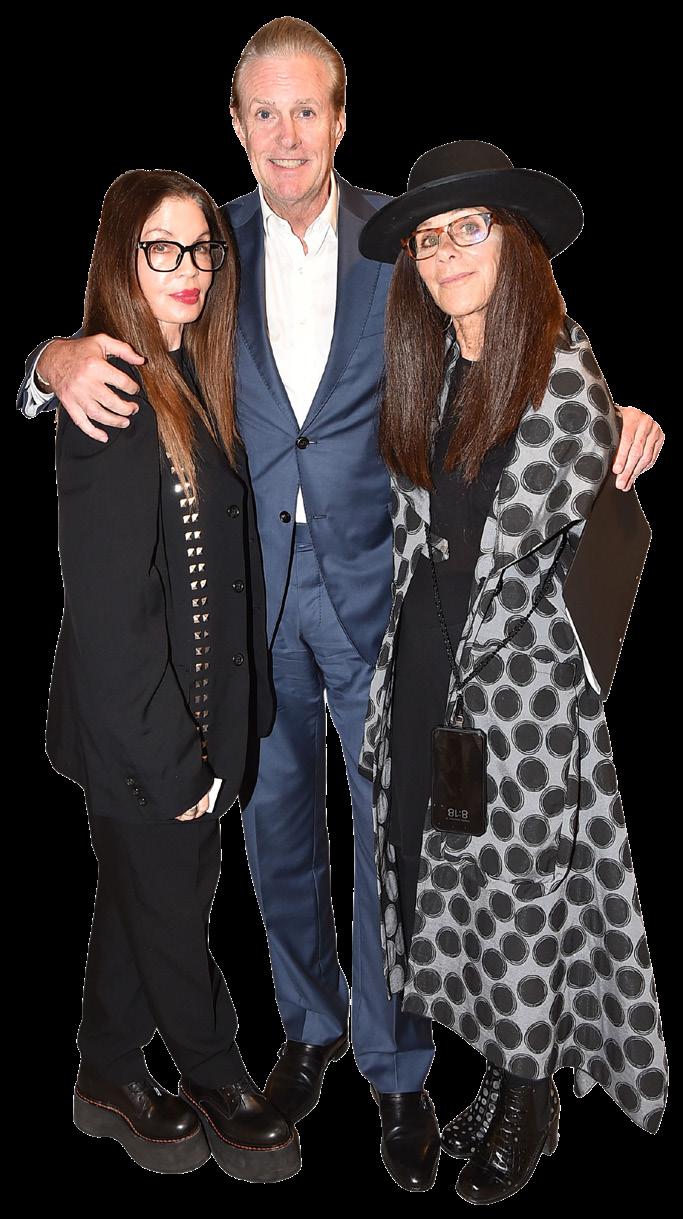
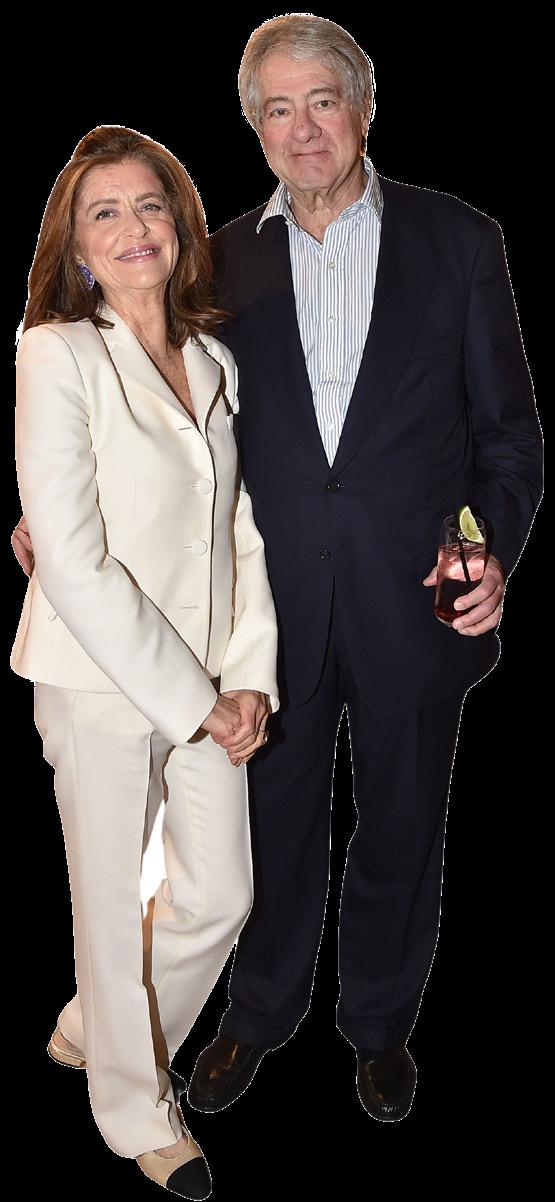
Galerie Gmurzynska
The Story
“Titanic” star Billy Zane, Deborah and Leon Black, photographer Lynn Goldsmith, jewelers Laurie Rodkin and Kayla Rockefeller, the Met Museum’s Max Hollein, MoMA’s Leah Dickerman, lighting guru Bentley Meeker, Amy Green, NYC mayoral candidate Joseph Hernandez, Alejandro Santo Domingo, Christine Mack, and cartoonist Christoph Niemann were among the guests who joined gallerist Isabelle Bscher, Krystyna Gmurzynska, Lucas Bscher, and Mathias Rastorfer to celebrate the 60th Anniversary of Galerie Gmurzynska and the opening of their new space in the Fuller Building on East 57th Street. Major works by Juan Miró and Roberto Matta served as the gallery’s inaugural exhibition titled “MIRÓ/MATTA.” Among the masterworks on display was Miró’s Paysage, which was in a pivotal scene in the film Wall Street starring Michael Douglas, Charlie Sheen, and Daryl Hannah. Also on hand was Roberto Matta’s daughter, Federica Matta and Academy Award–nominated actor James Franco, who had his own room of contemporary paintings influenced by Hollywood and street art. The 7,000-square-foot space has multiple rooms and features a library designed by acclaimed fashion designer Jil Sander, whose clients include Drew Barrymore, Meg Ryan, and Tilda Swinton, that is filled with Gmurzynska’s published books. After the opening, guests went downtown to Zero Bond for a dinner hosted by Isabelle and the club’s owner Scott Sartiano. Gmurzynska.com
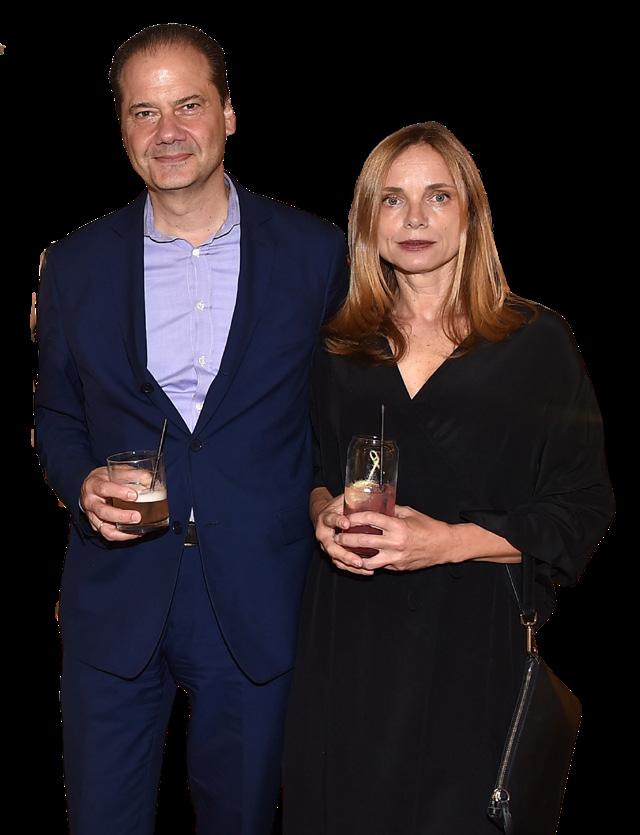
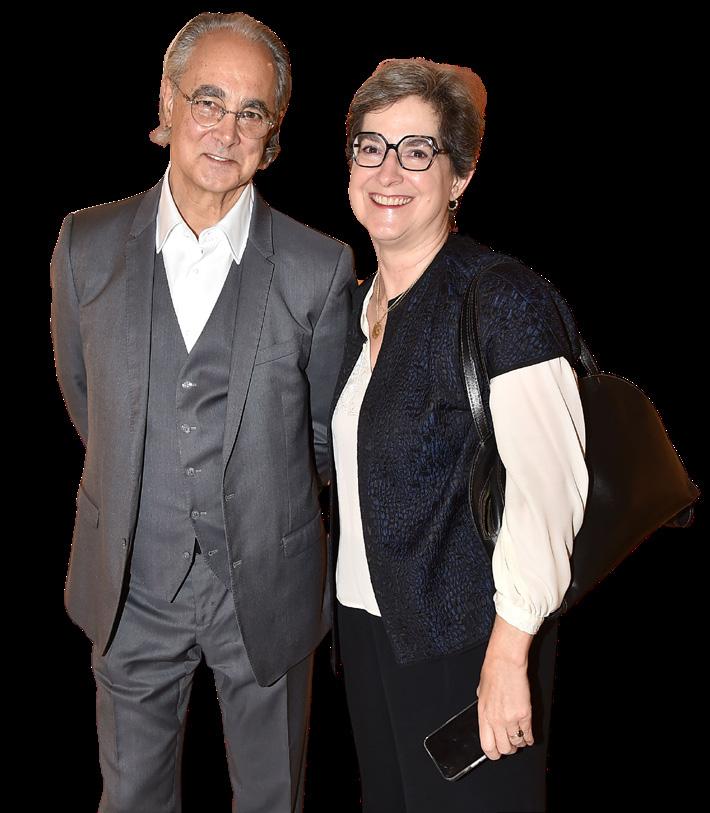
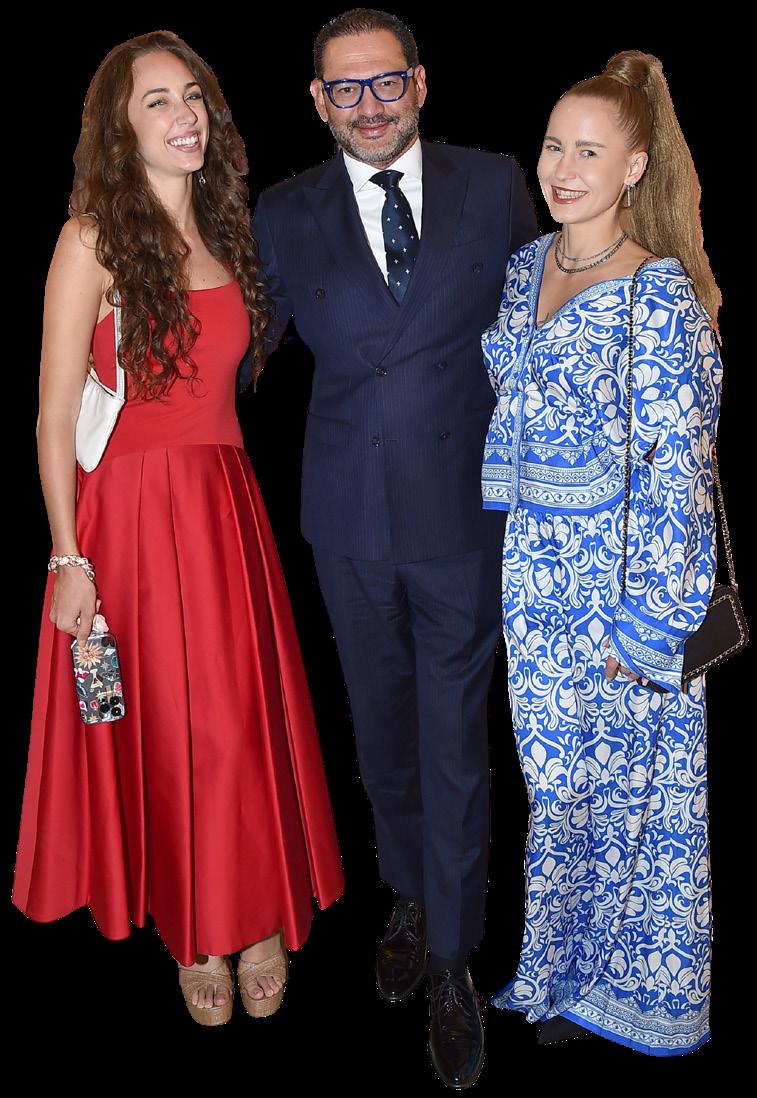
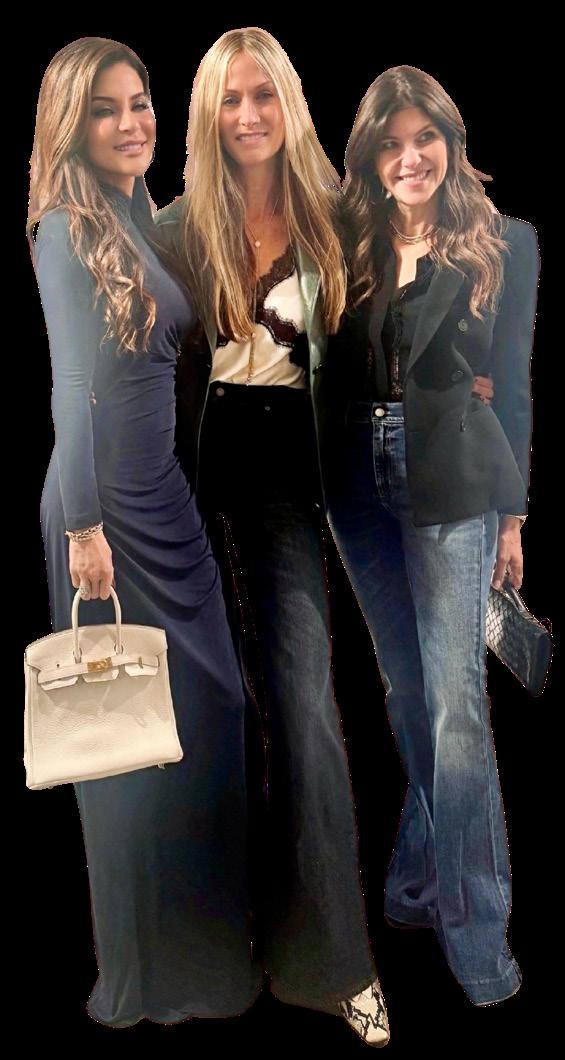

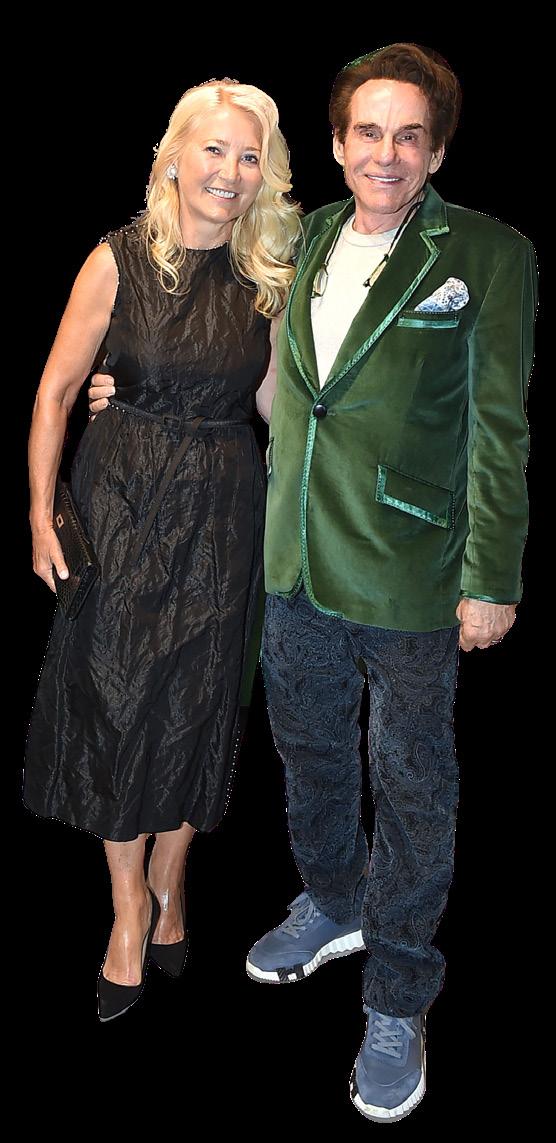


The Story
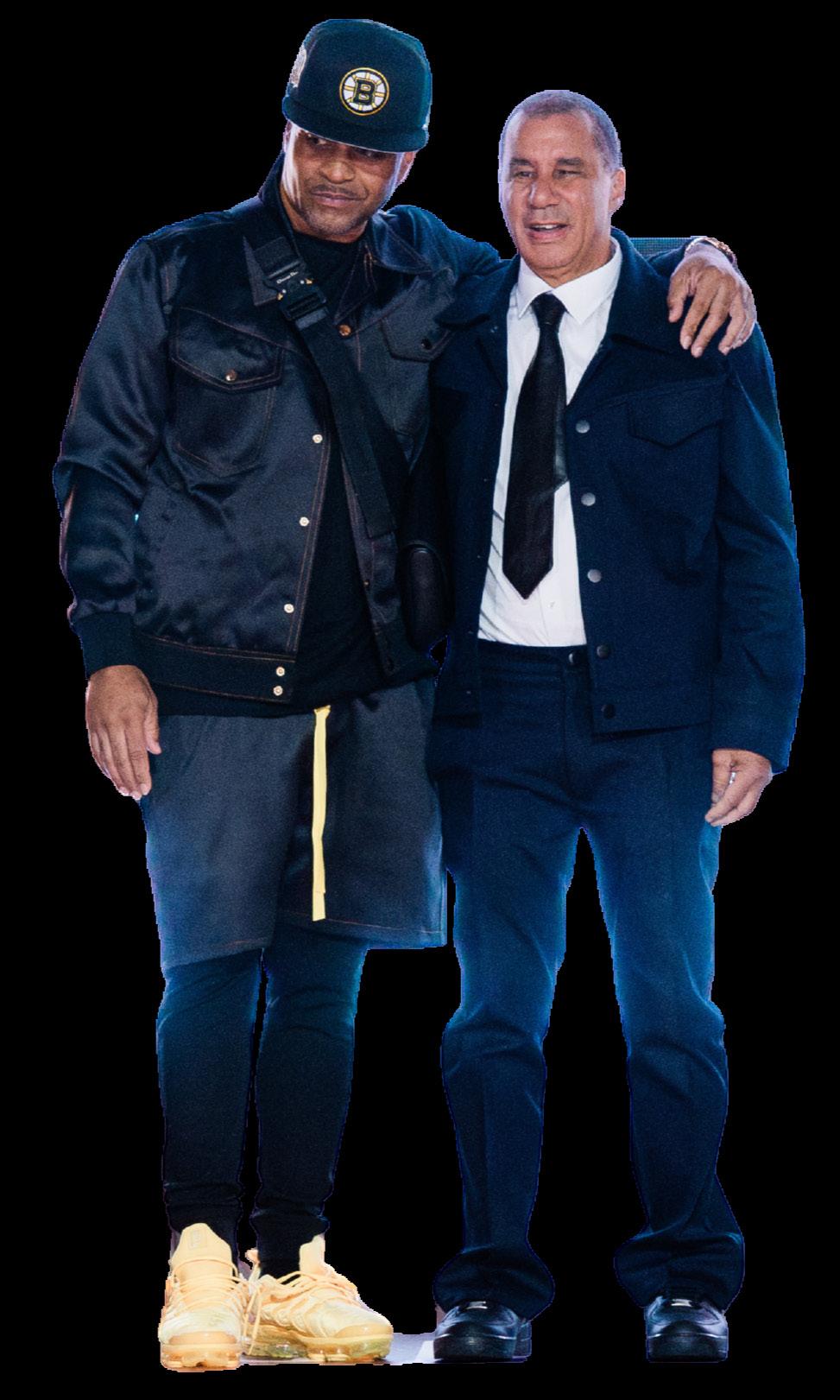
Former Governors Andrew Cuomo and David Patterson, City Councilmen Erik Bottcher, Congresswoman Carolyn Maloney and NY assembly member Rebecca Seawright were among the 30 elected politicians-turned-models who strutted the runway at Style Across the Aisle. Founded by Skye Ostreicher, the annual fashion show is where local designers dress elected officials from their own communities for a bipartisan, high-impact runway experience. Taking place at the NY County Surrogate’s Court, this year’s nonprofit partner was Witness to Mass Incarceration. WITNESS is dedicated to fostering economic independence for formerly incarcerated, system-impacted and LGBTQ+ individuals. Sponsors included Airbnb, Uber, EmblemHealth, Aeon Nexus Corporation, Rethink Food, In The Room Media, and Beauty Social Salon. Following the show, guests celebrated with a lively cocktail reception at The Balcony at Surrogate’s Court. Guests enjoyed tasty bites from Rethink Food Partners, while sipping on craft cocktails shaken up with Blue Ice Vodka, JAJA Tequila, and fine pours from the Israeli Wine Producers Association. intheroommedia.com
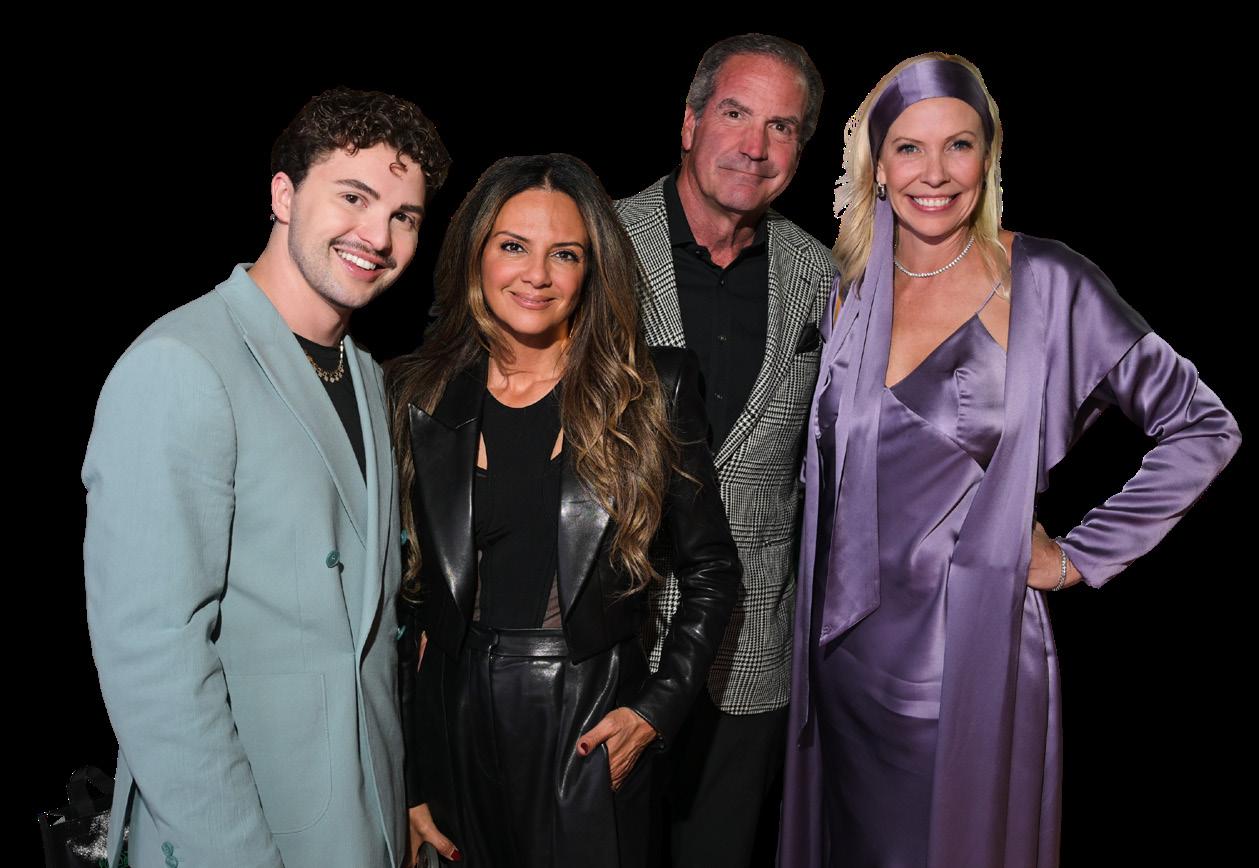




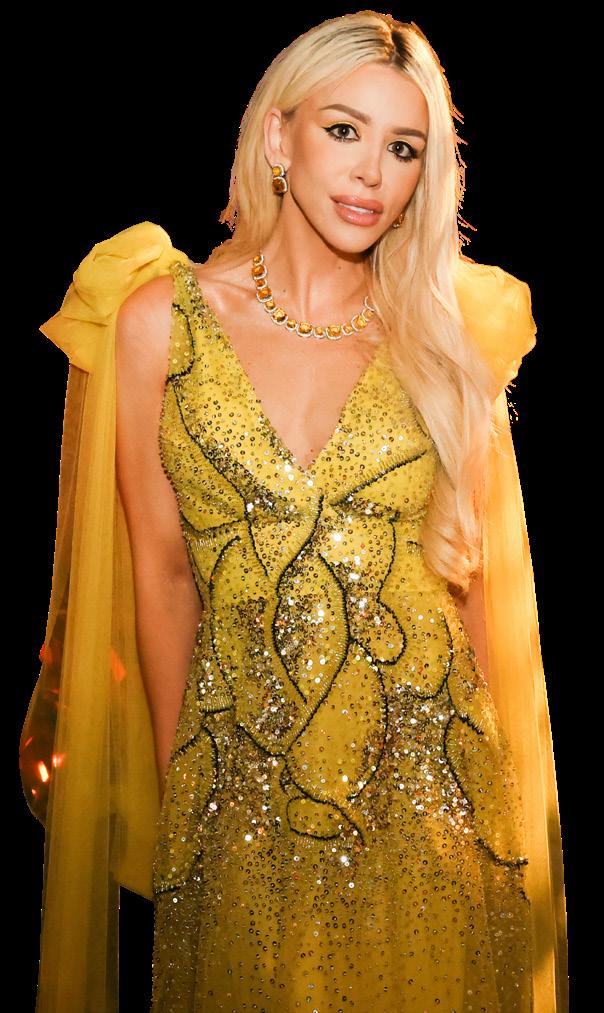
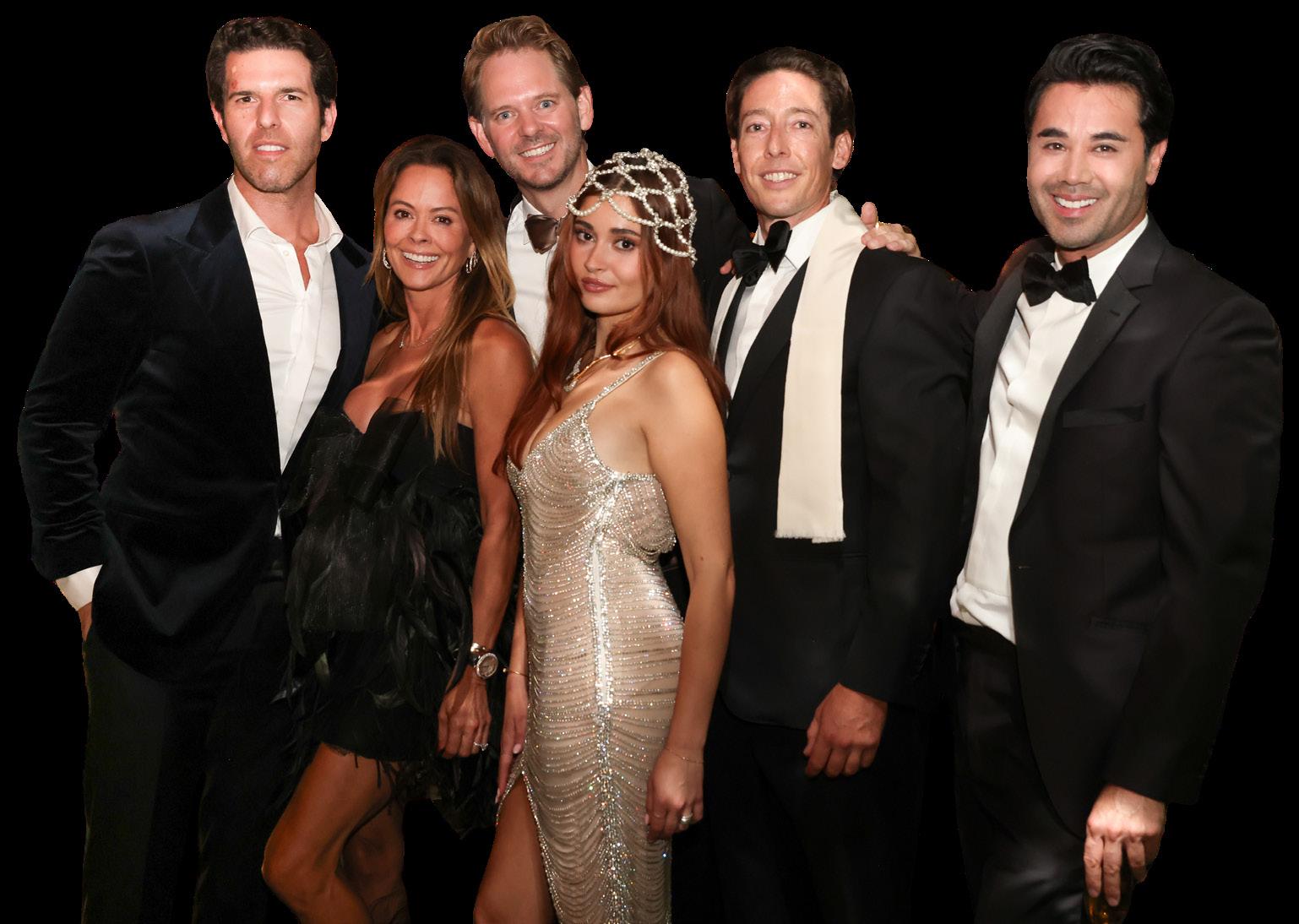
The Story
The Children’s Oncology Support Fund, founded by film producer and philanthropist Thomas Pierce, hosted its Garden Ball: Beverly Hills Edition at the Dawnridge Estate, home of legendary designer Tony Duquette. The glamorous evening served as the kick-off to Aspen Snow Ball Weekend taking place March 19th - March 21st 2026, which will be hosted by Chelsea Handler, with the theme “Pure Imagination” a nod to Charlie & the Chocolate Factory.
COSF also announced Brooke Burke as their Official US Ambassador, honoring her dedication to COSF for the past 3 years solidifying her role with the organization. Brooke also announced Ethan Curtis as the organization’s 2026 Youth Ambassador alongside singer-songwriter Alexis Silva.The night transported guests into “Maharaja’s Palace”, a world of opulence and fantasy, surrounded by the stunning interiors, exotic birds, and lush gardens of the historic property. Between a live and silent auction, the intimate evening raised $250,000 for COSF’s mission. cosffoundation.org
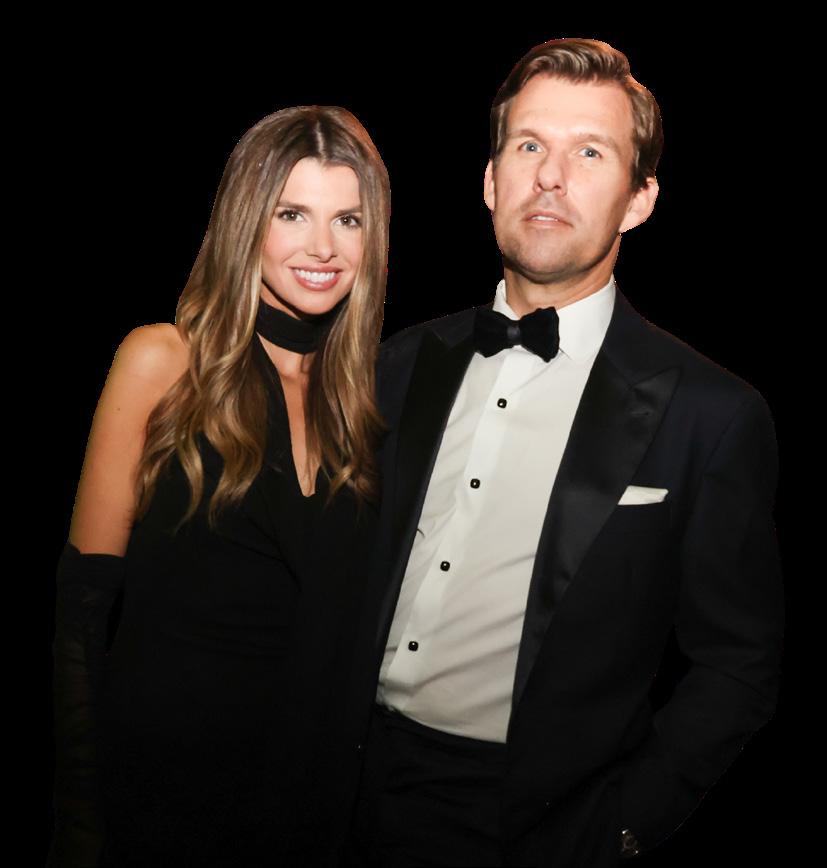
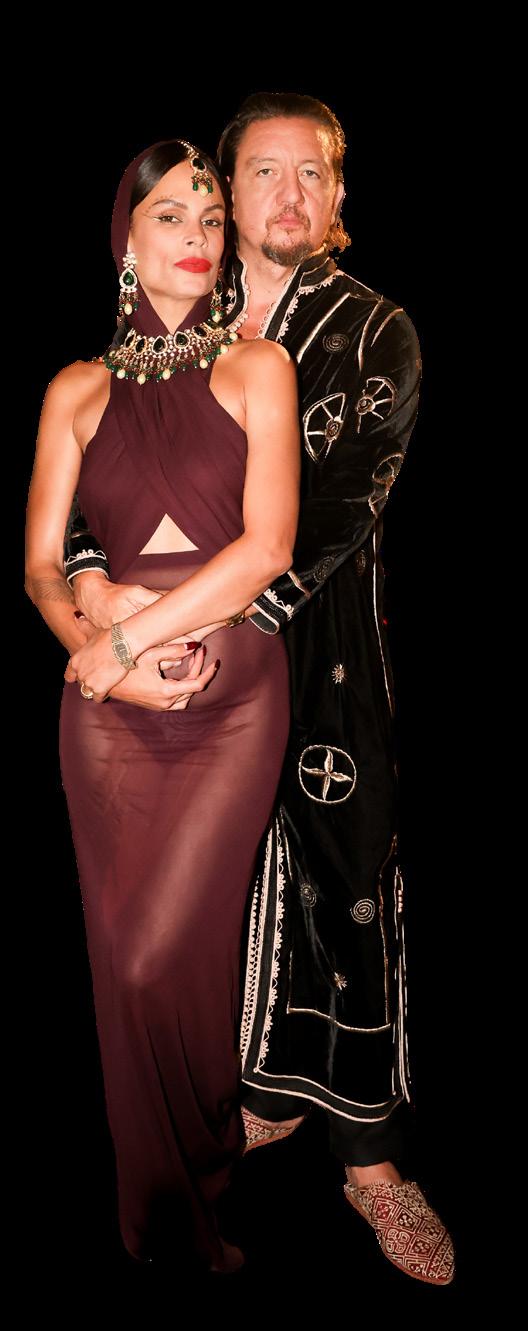
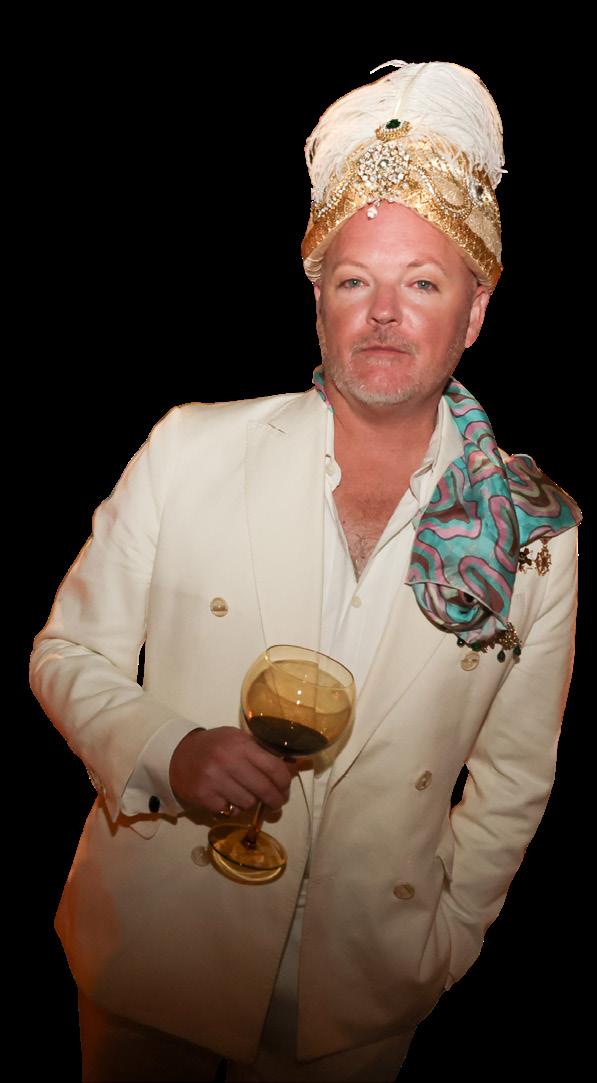
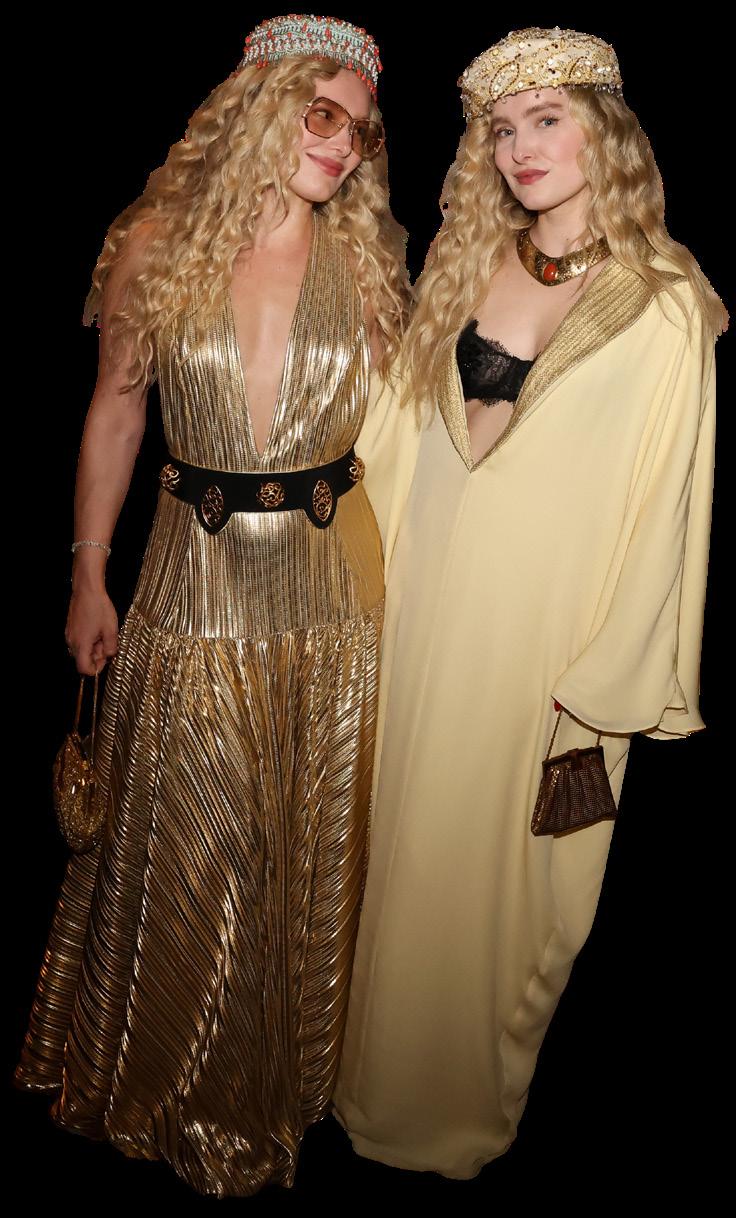
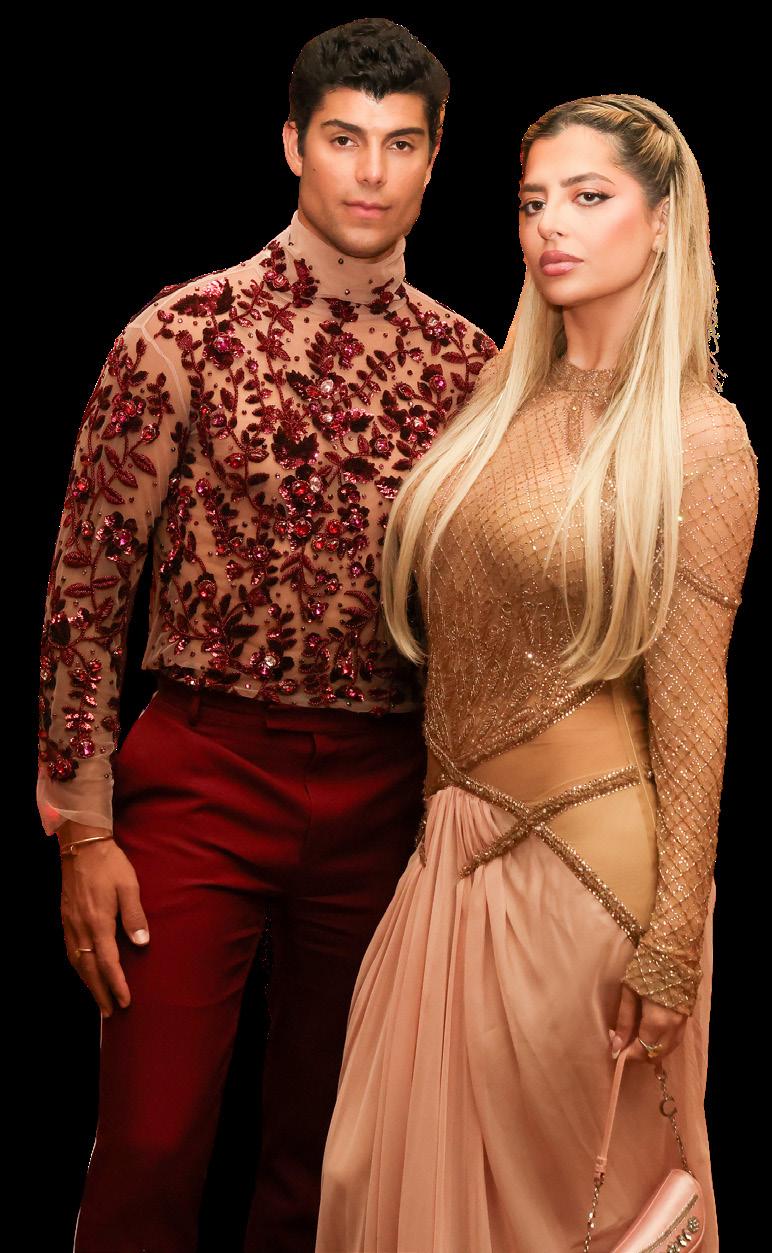



The Story

Anne Hathaway and Audra McDonald were honored at God’s Love We Deliver’s (GLWD) 19th Golden Heart Awards at St. John the Divine Cathedral. Blaine Trump, Huma Abedin, Chloë Sevigny, Mark Ronson, and Grace Gummer led the fashionable parade to this don’t-miss annual gala. The night kicked off with mocktails by David Burtka and Neil Patrick Harris and alcohol-infused drinks from Sake ONO and canapés by Petrossian Caviar. The evening began with a performance by J. Harrison Ghee and the cast of “Saturday Church.” Michael Kors welcomed guests and presented his eponymously named award for Outstanding Philanthropy, Artistry, and Activism. Supermodel Gigi Hadid presented Anne Hathaway with the Golden Heart Award for Outstanding Philanthropy and Volunteerism, saying, “As a longtime fan of Annie’s, the most beautiful thing about becoming her friend is knowing that the virtues and magic that make us feel connected to her onscreen are even more vivid in real life.” Anna Wintour introduced Ben Platt, who brought down the house with “Maybe This Time,” “I Dreamed a Dream,” and “Over the Rainbow.” Among those applauding were Lynda Carter, James Corden, Rosie Perez, Tamron Hall, and Zoey Deutch. Since 1985, GLWD has been cooking and home-delivering medically tailored meals to over 40 million individuals affected by severe and chronic illness. The event raised more than $4 million. glwd.org

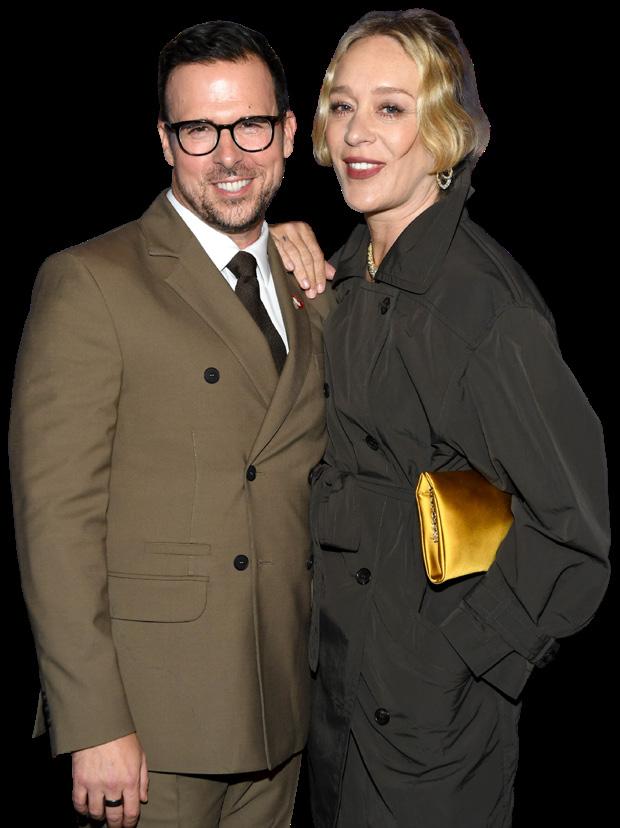
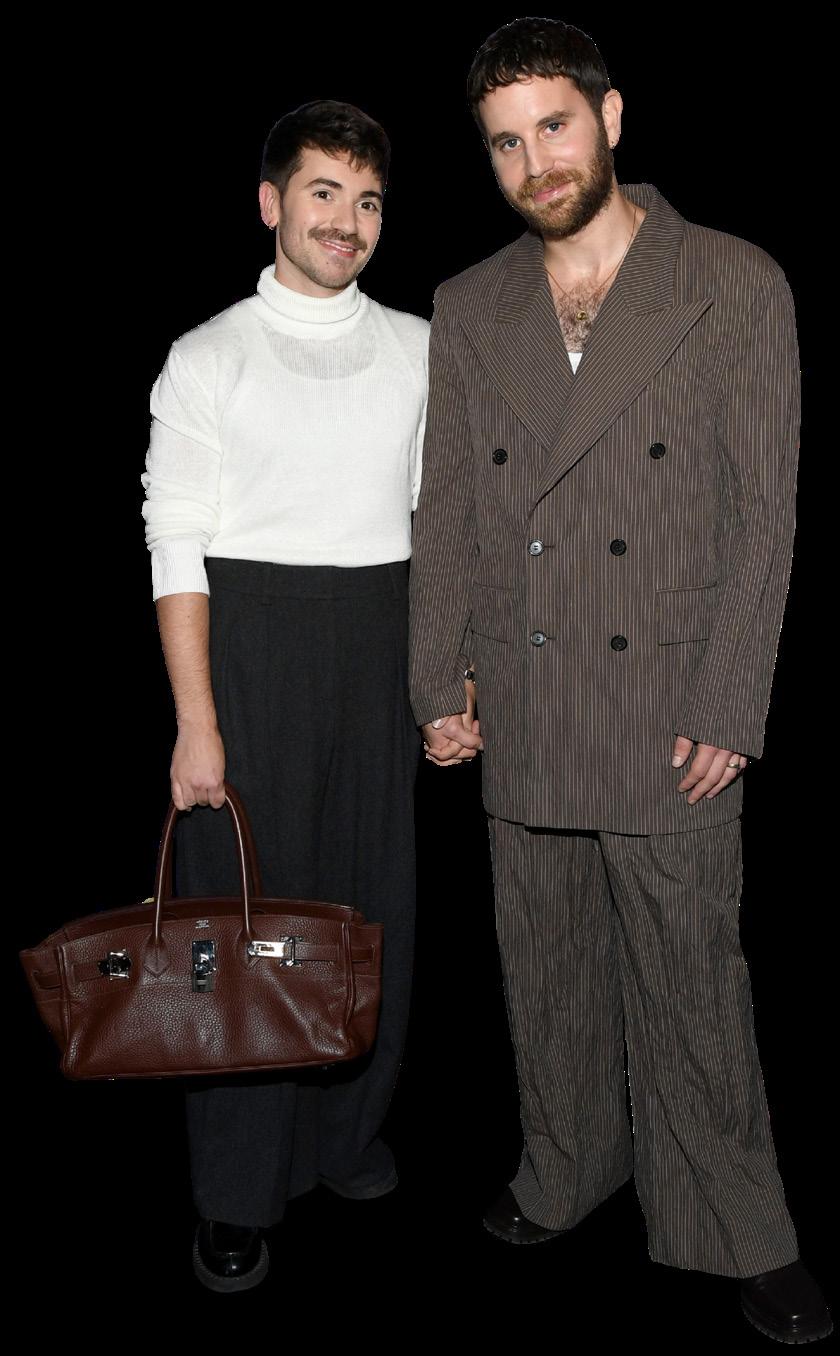

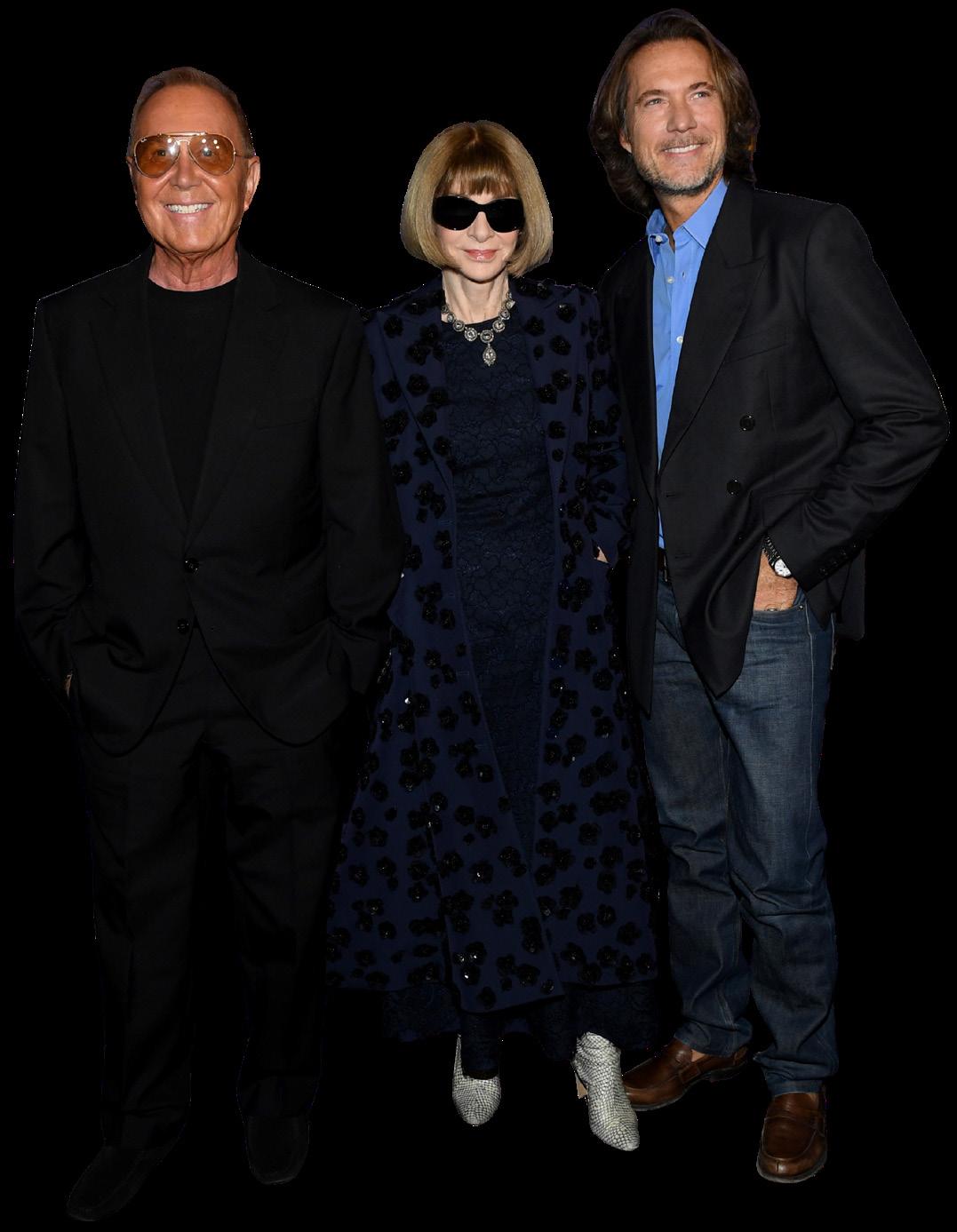
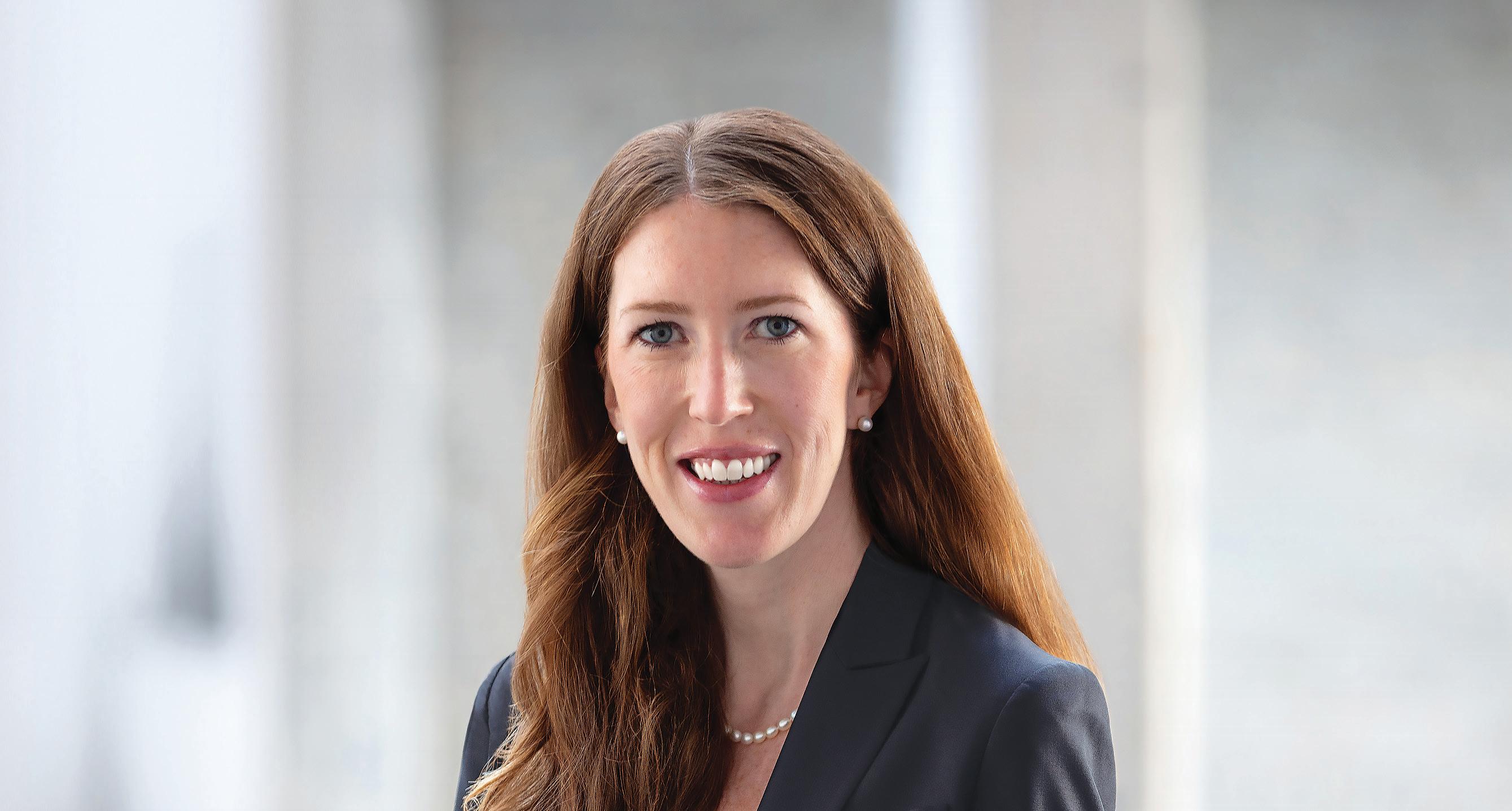
Breast Surgeon; Breast Surgery Fellowship Director, Montefiore Einstein and Assistant Professor, Albert Einstein College of Medicine
Raised in Connecticut and a resident of New Canaan, Maureen P. McEvoy, MD, provides comprehensive breast surgery care using minimally invasive and oncoplastic techniques to achieve cosmetically optimal outcomes. She focuses on minimizing surgery and maximizing patient care, offering surveillance for those with a high risk of breast cancer, performing lumpectomies, mastectomies and nipple-sparing mastectomies, and practicing de-escalation of axillary surgery.
A graduate of Albert Einstein College of Medicine, Dr. McEvoy completed a two-year clinical research fellowship at Memorial
Sloan Kettering Cancer Center followed by a breast surgical oncology fellowship at Massachusetts General Hospital, Harvard’s teaching hospital.
Dr. McEvoy has served on national committees and written national guidelines on ways to decrease lymphedema through smarter axillary surgery. She has presented her work on breast cancer nationally and has received awards at national conferences.
1455 East Putnam Ave. | Greenwich, CT 203-SURGEON (203-787-4366) specialtysurgeons.com

The Story
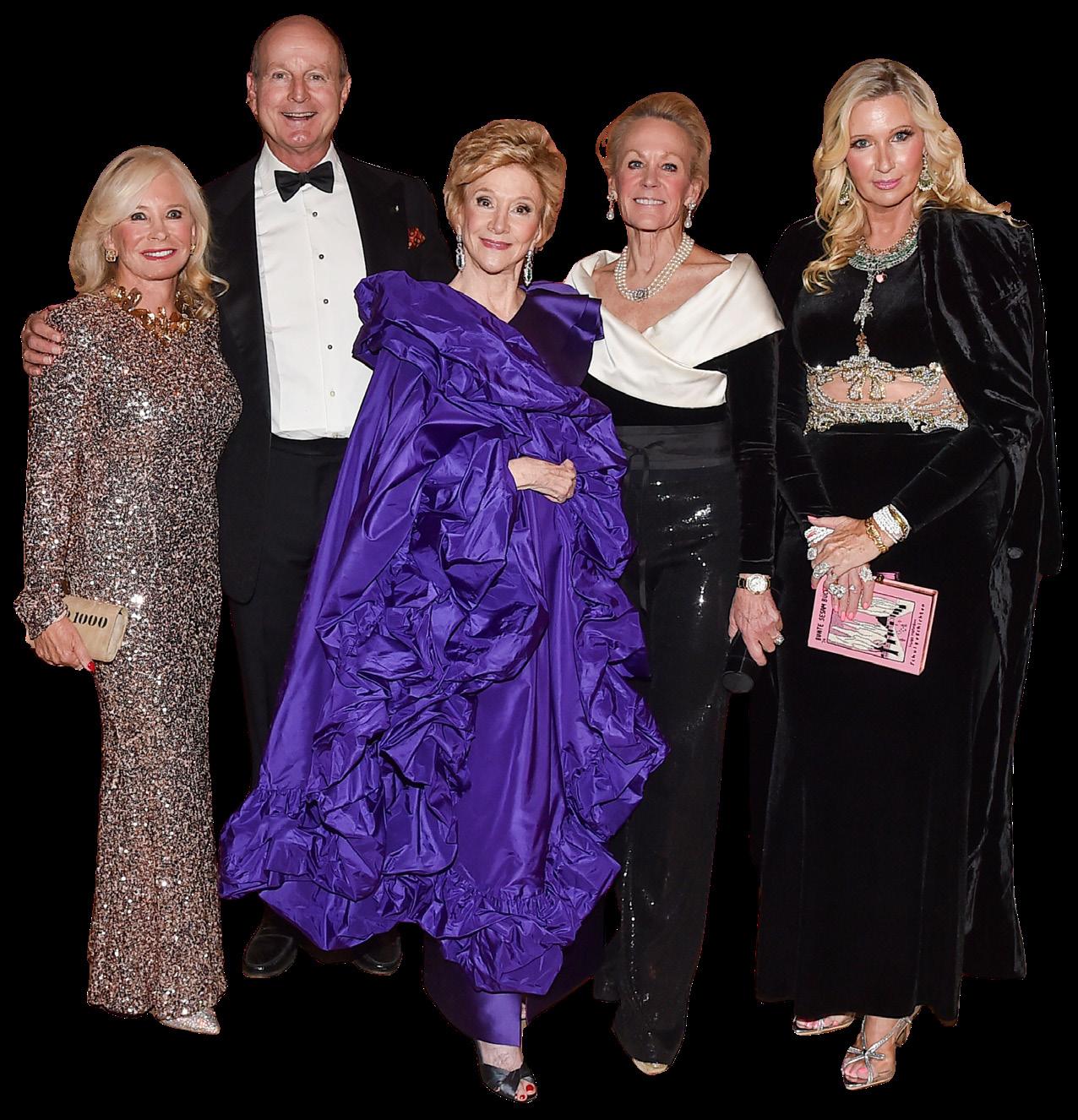
Chairmen Prince Dimitri of Yugoslavia and Jacqueline Drake Weld, Mary Snow, Muffie Potter Aston, Jean Shafiroff, Janna Avis, Tony Award-winning costume designer William Ivey Long, former NYC mayoral candidate Joseph Hernandez, and honoree Kamie Lightburn led the parade of philanthropists to The Plaza Hotel for the Casita Maria Center for Arts and Education’s 91st Fiesta Gala. Tina Vidal-Duart and Barbara Tober were also honored. The annual celebration celebrated the legacy of New York City’s oldest Latino charity dedicated to the arts. Mayor Eric Adams made a surprise appearance and told the crowd, saying, “I like to say there are two types of Americans - those who live in New York, and those who wish they could live in New York. But what’s important is how we give back, and that is what Casita Maria is doing with the proceeds shared today for a very significant place in the city–the South Bronx.” casitamaria.org
